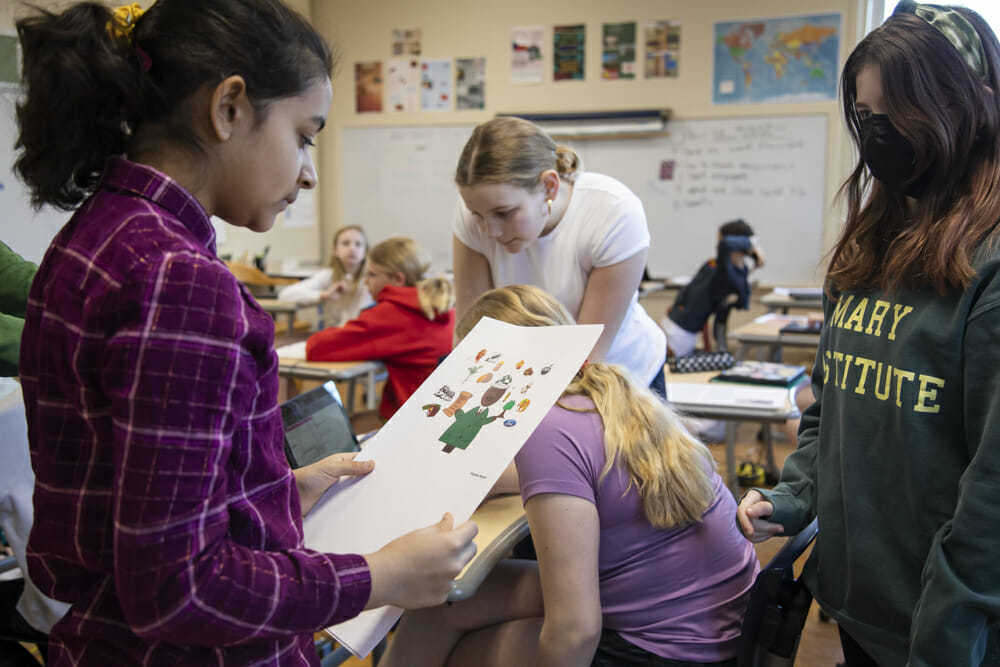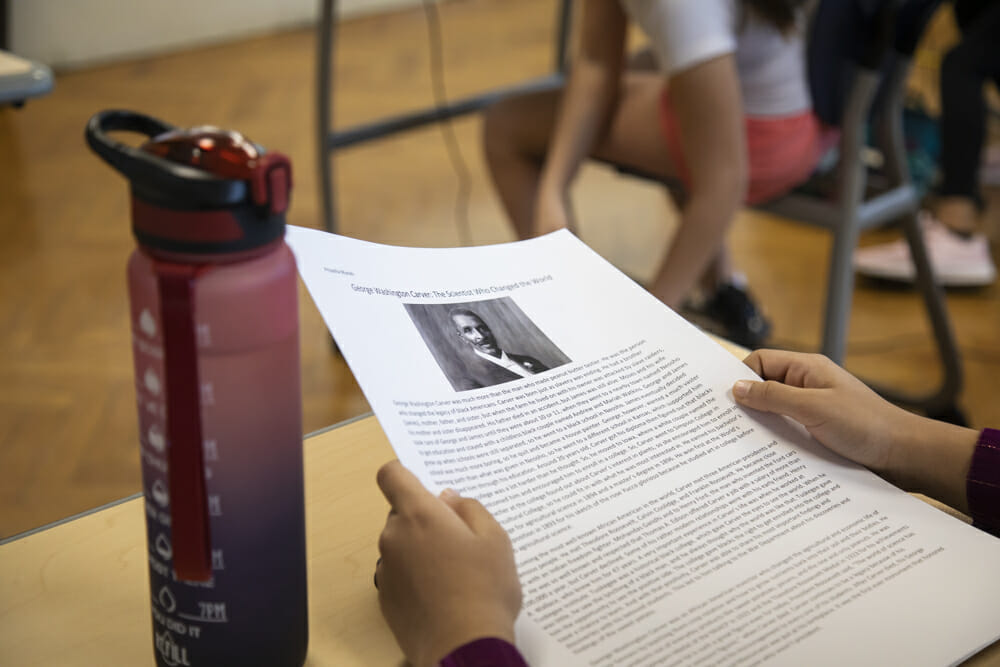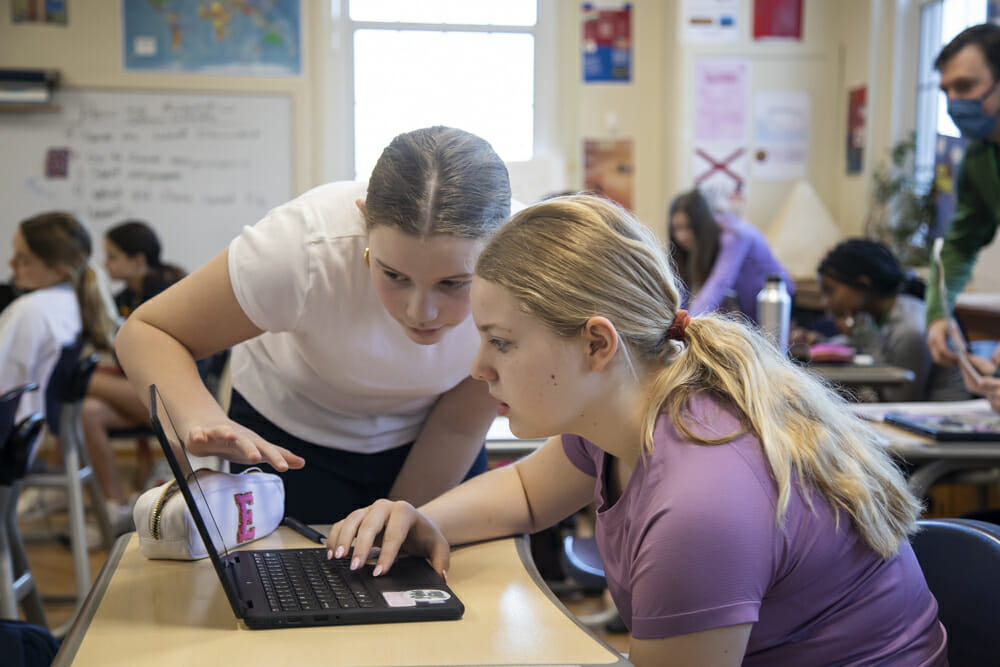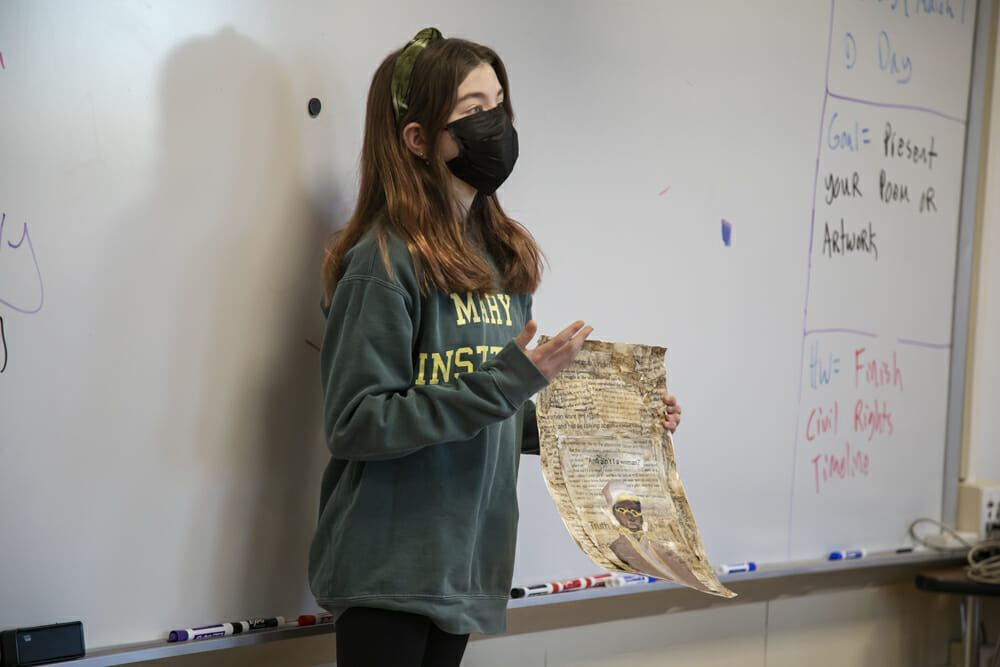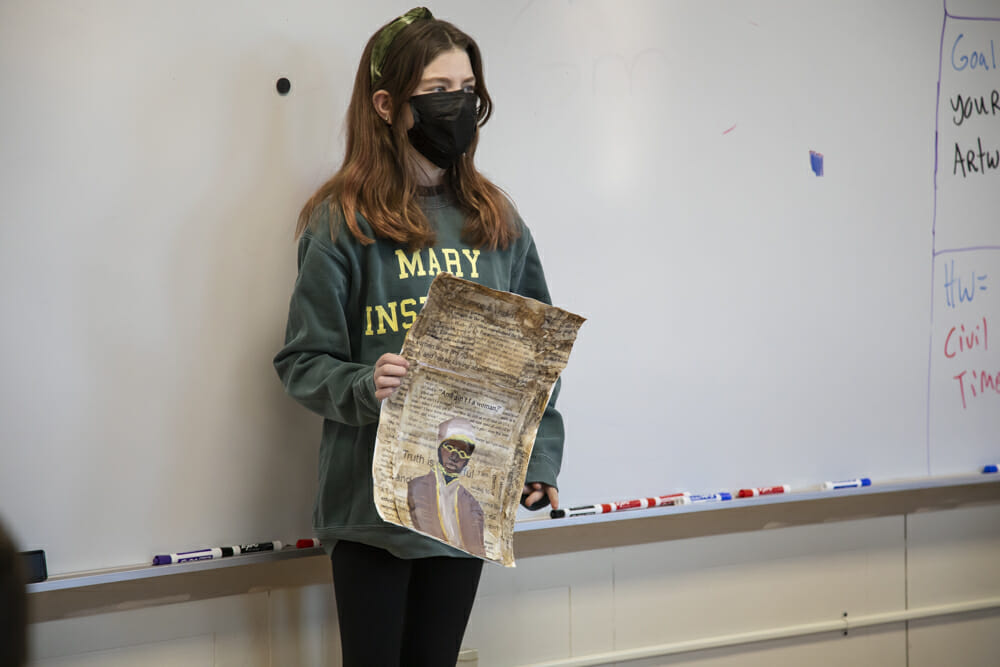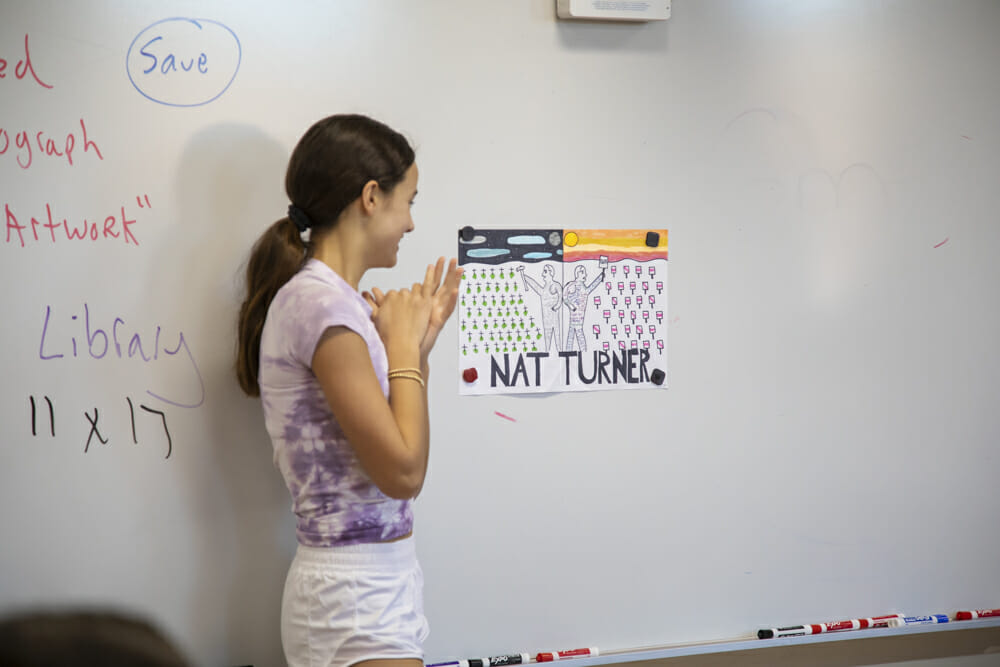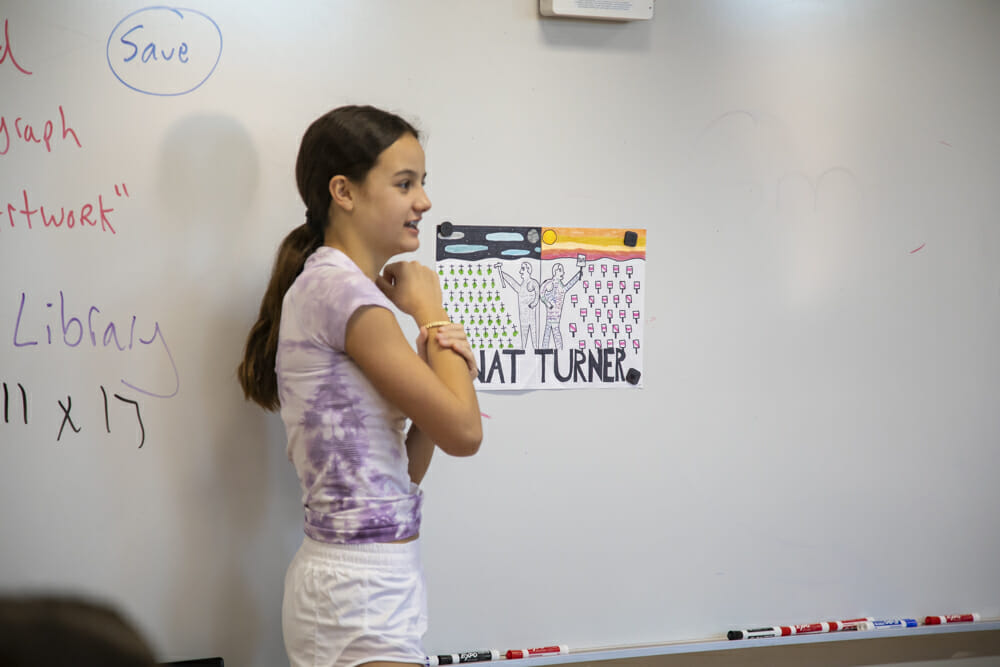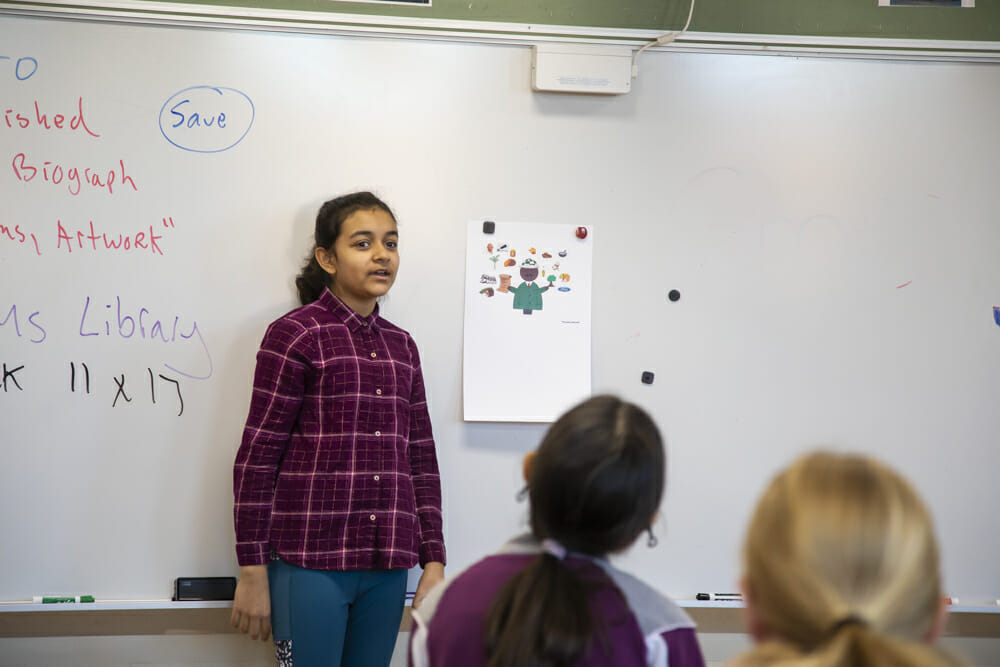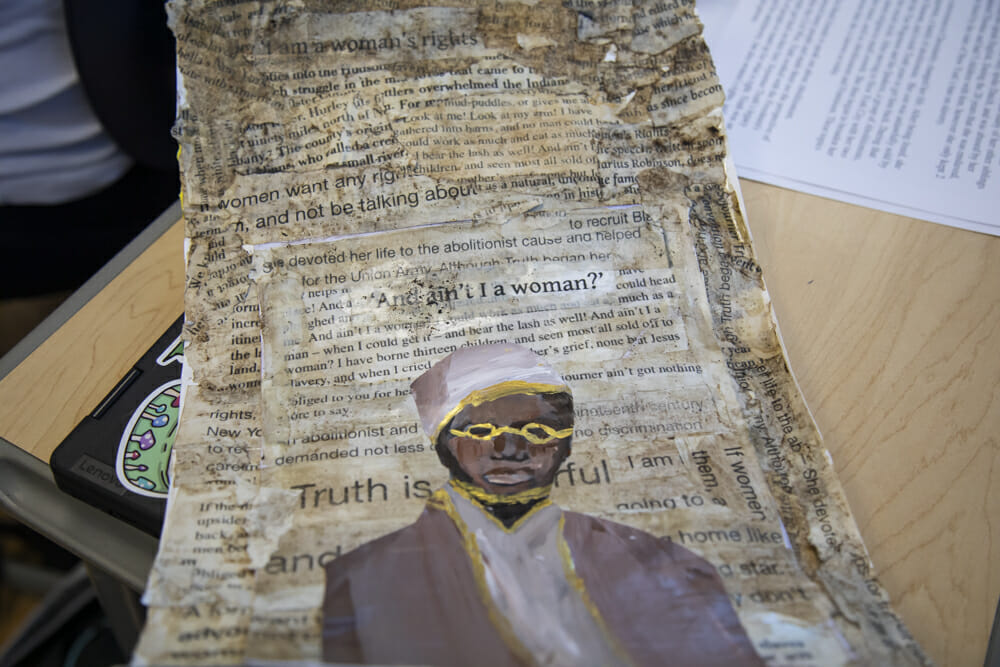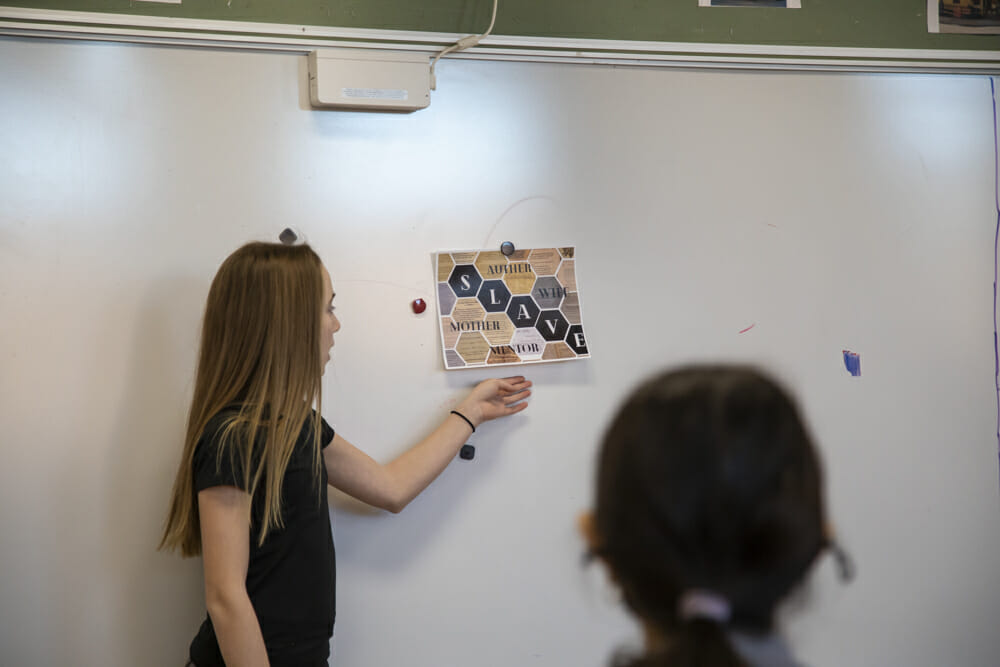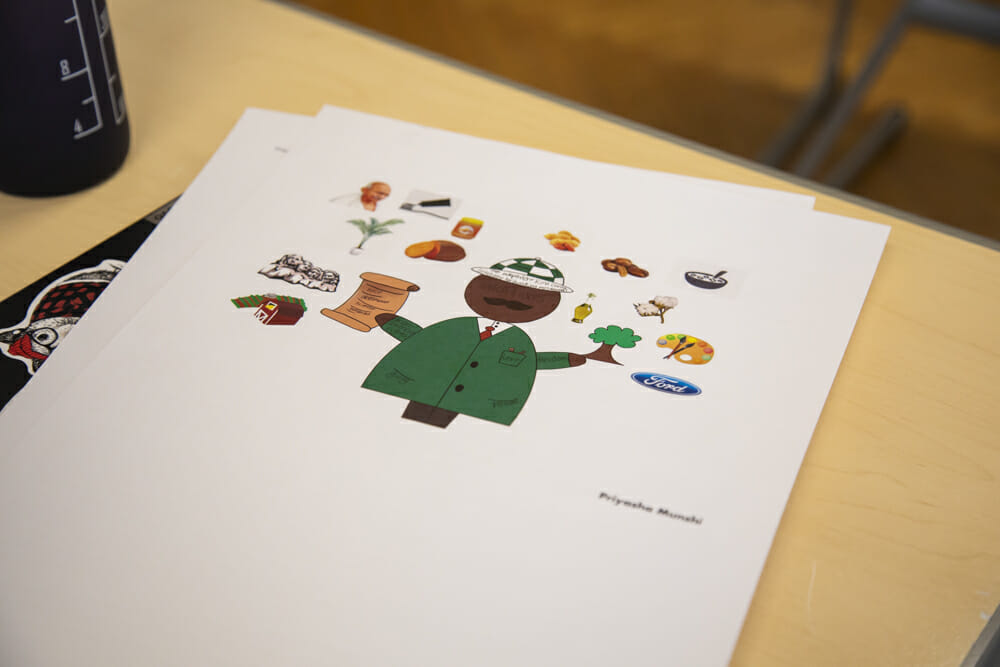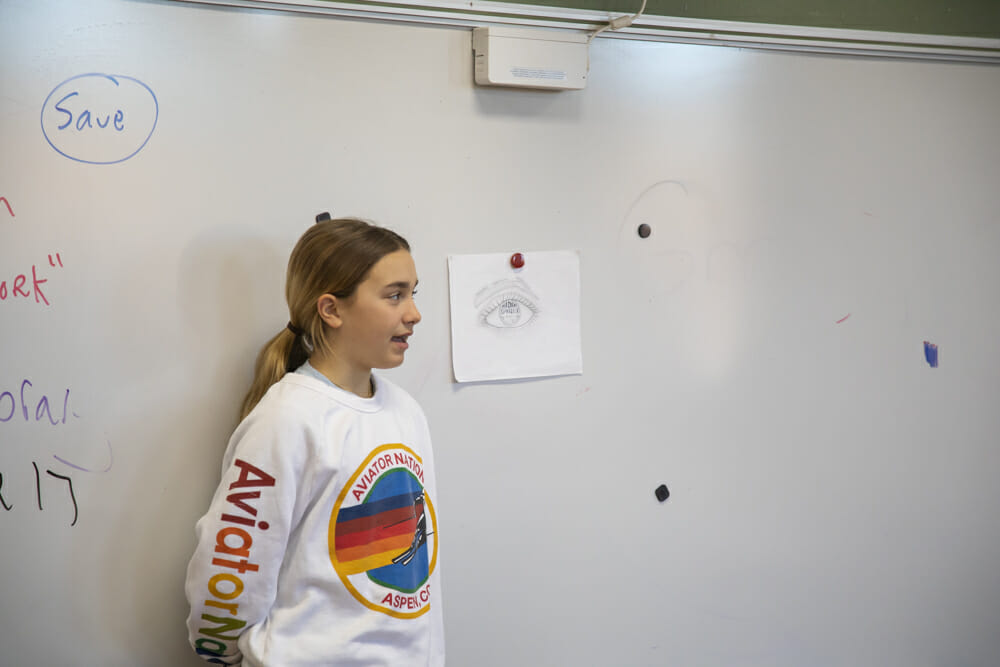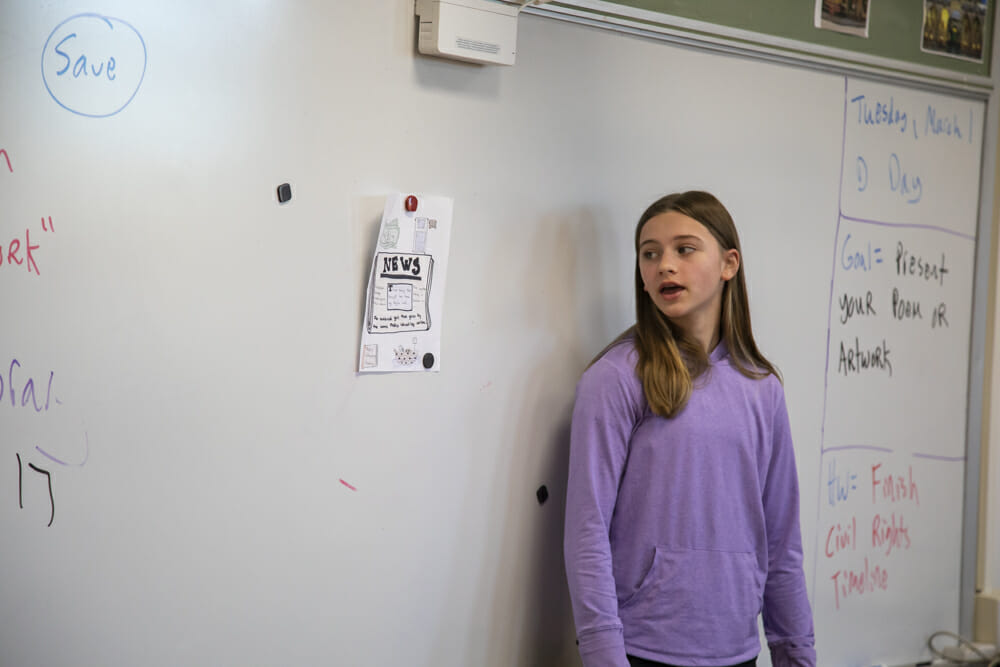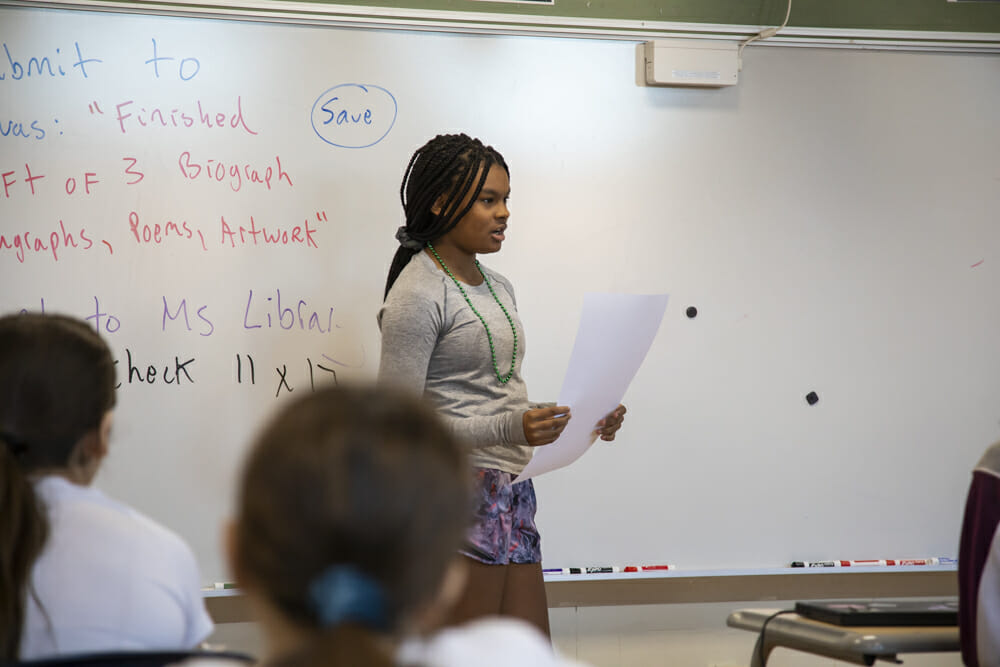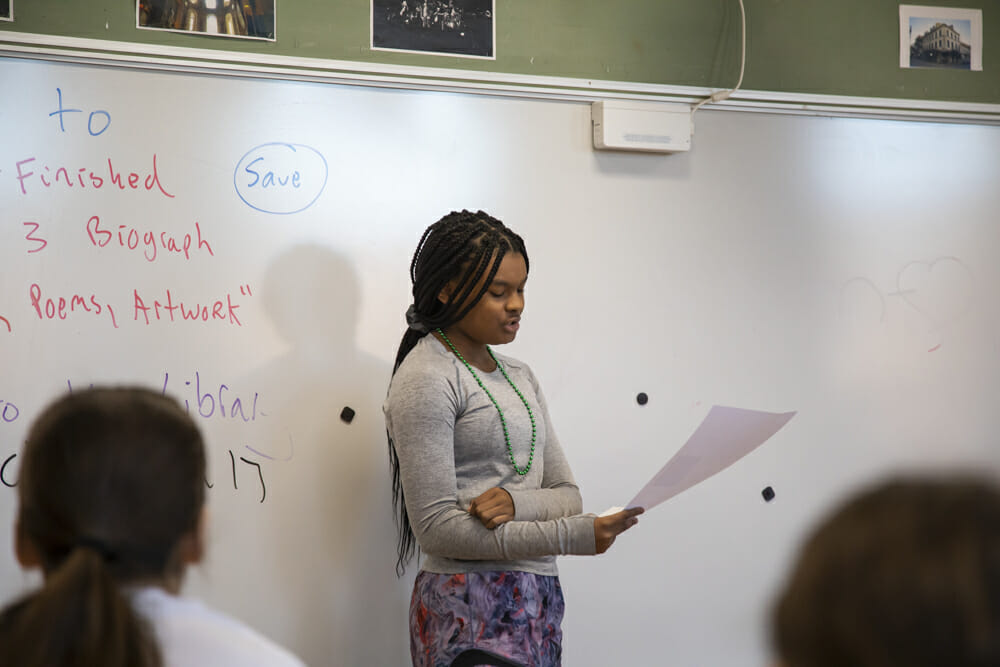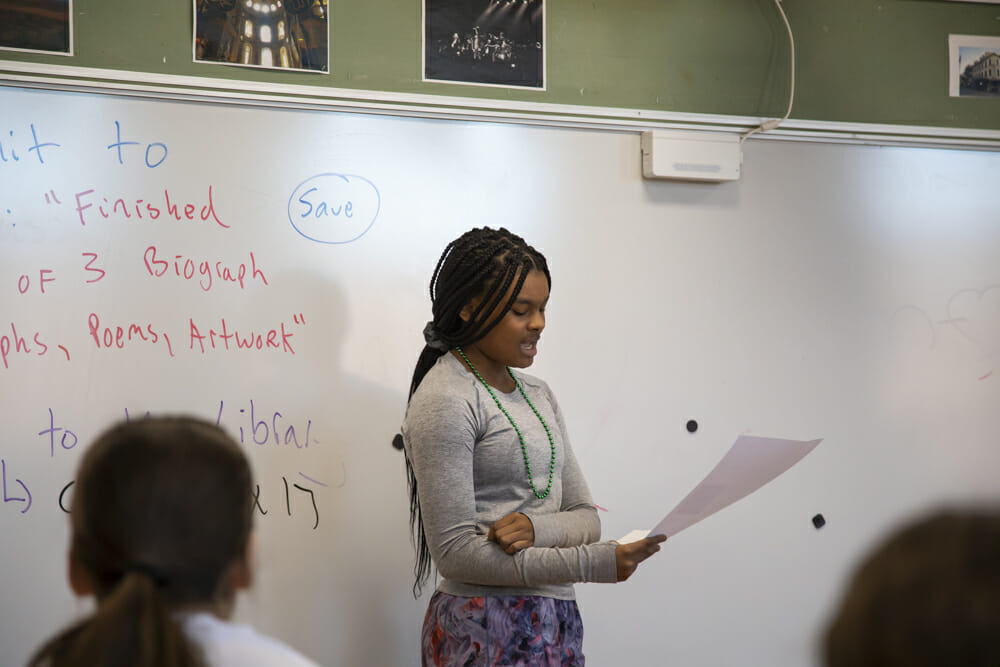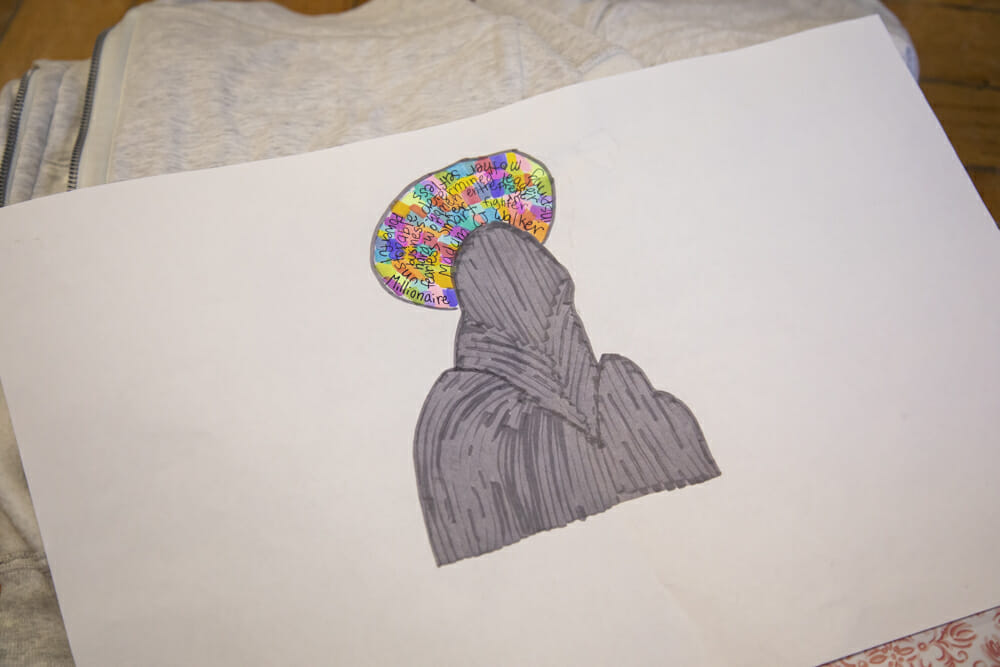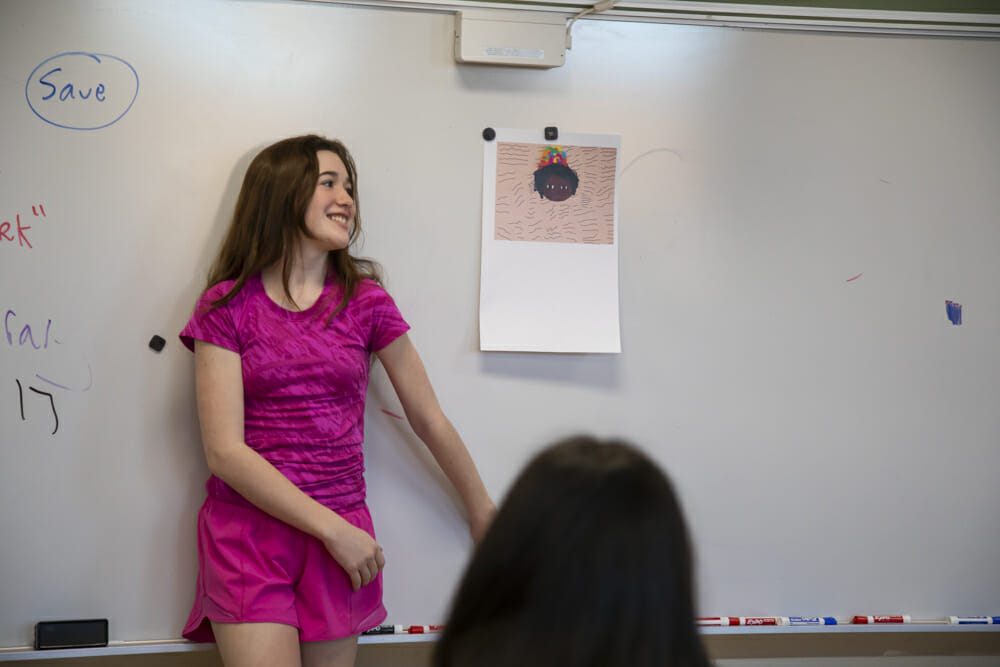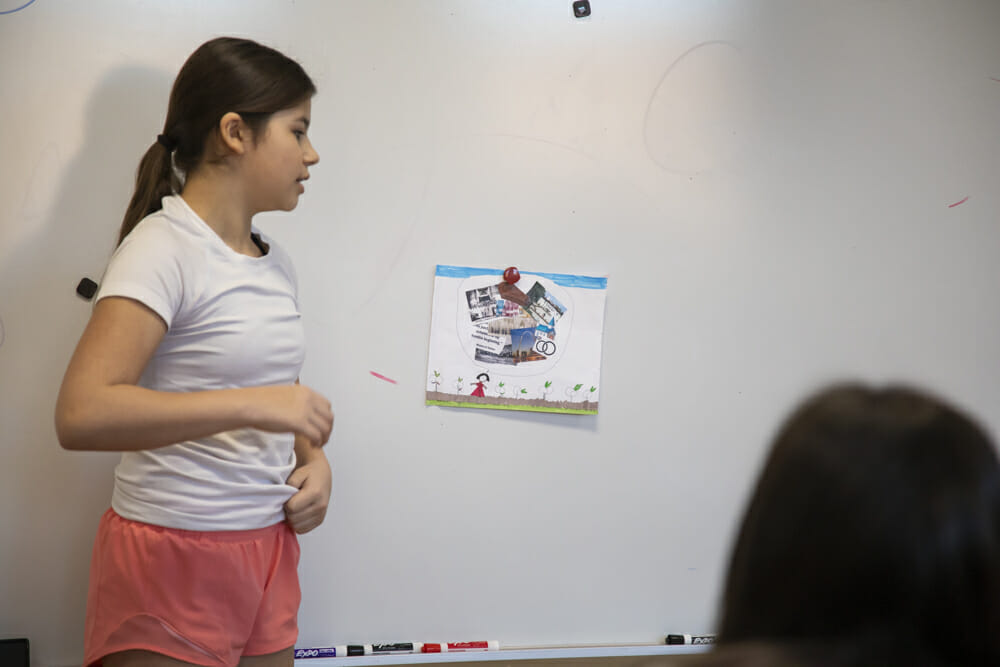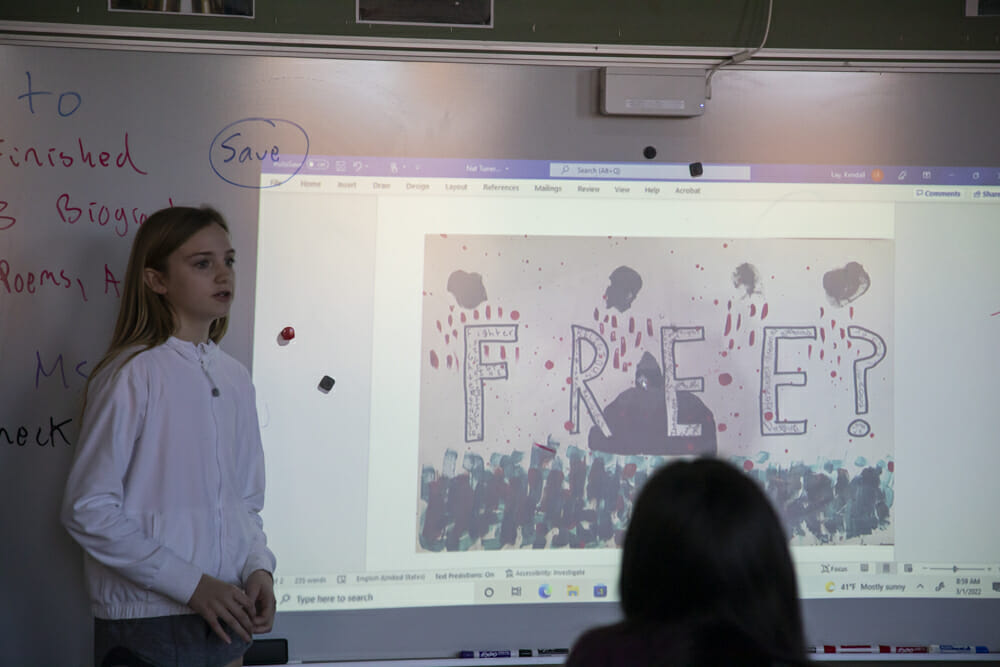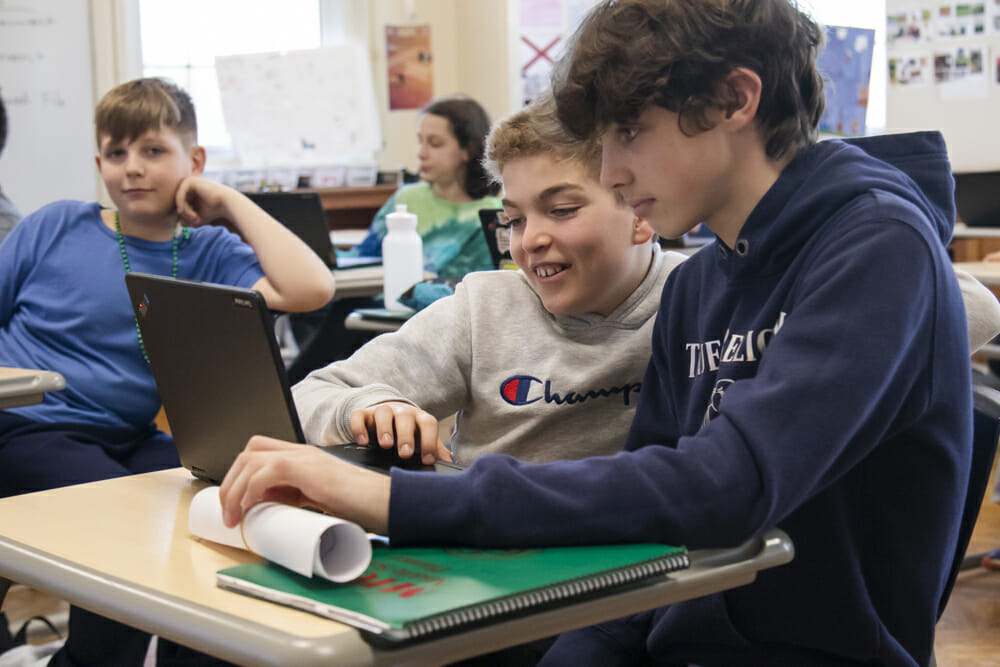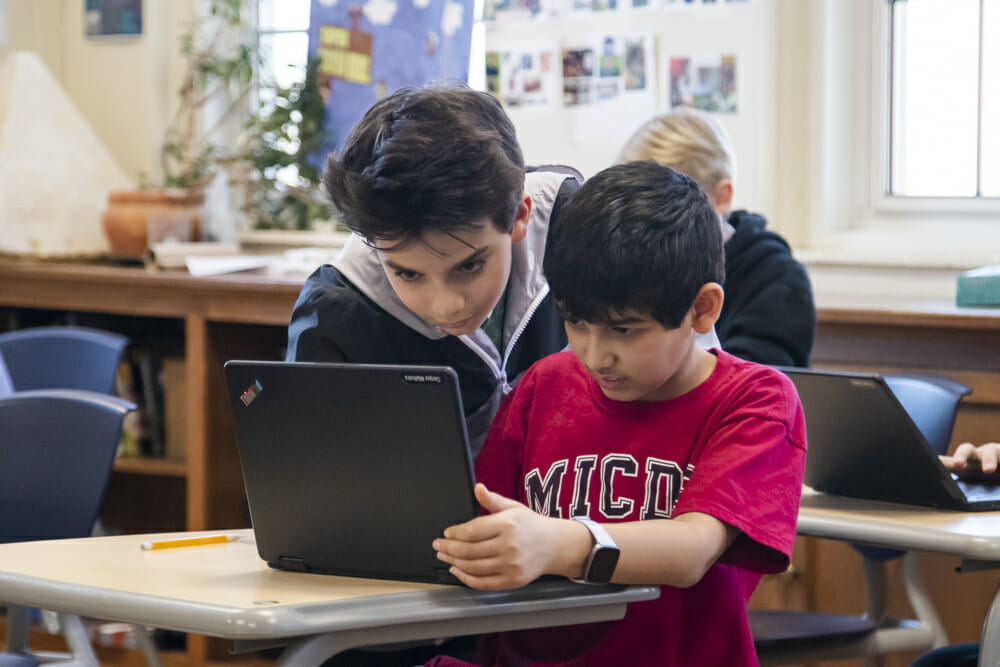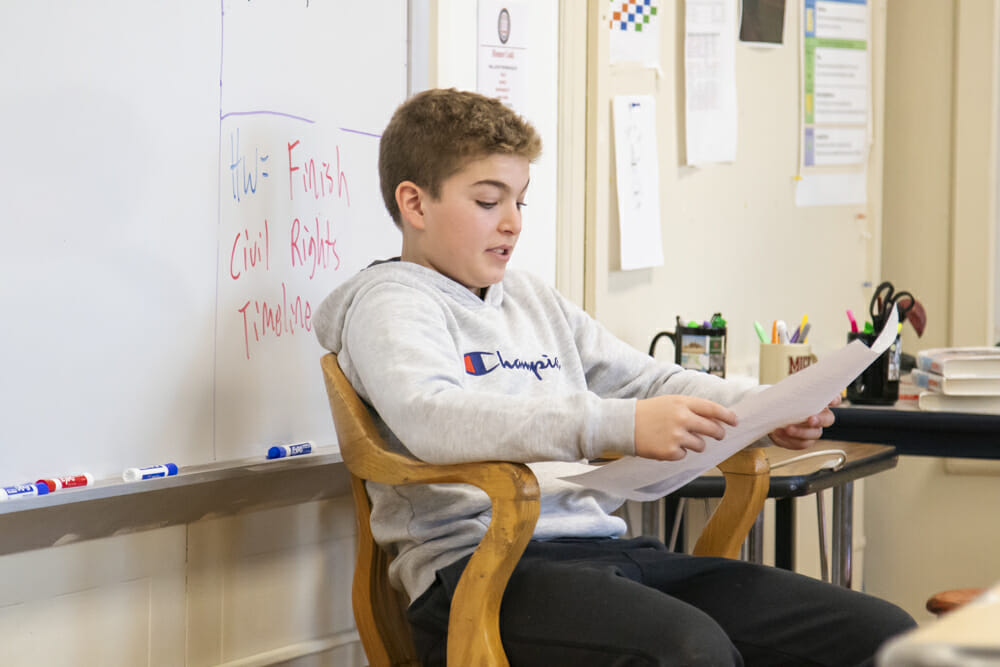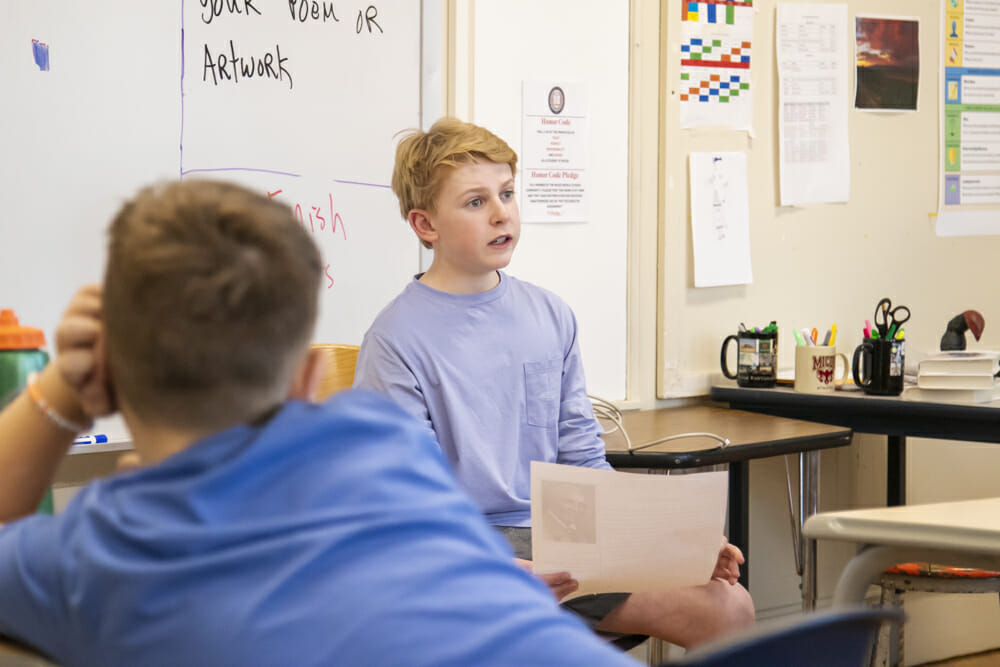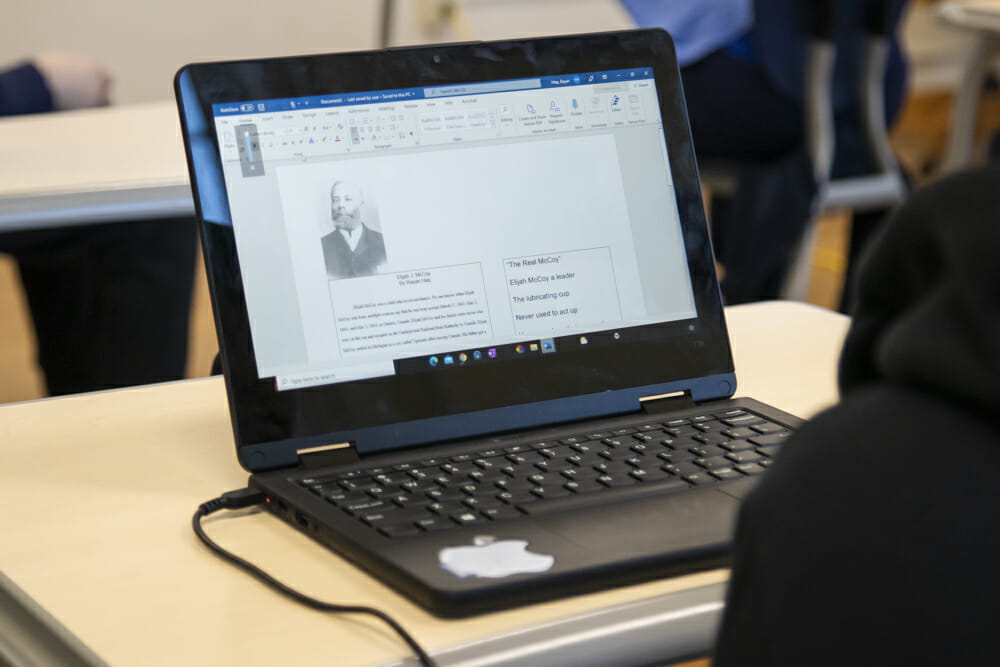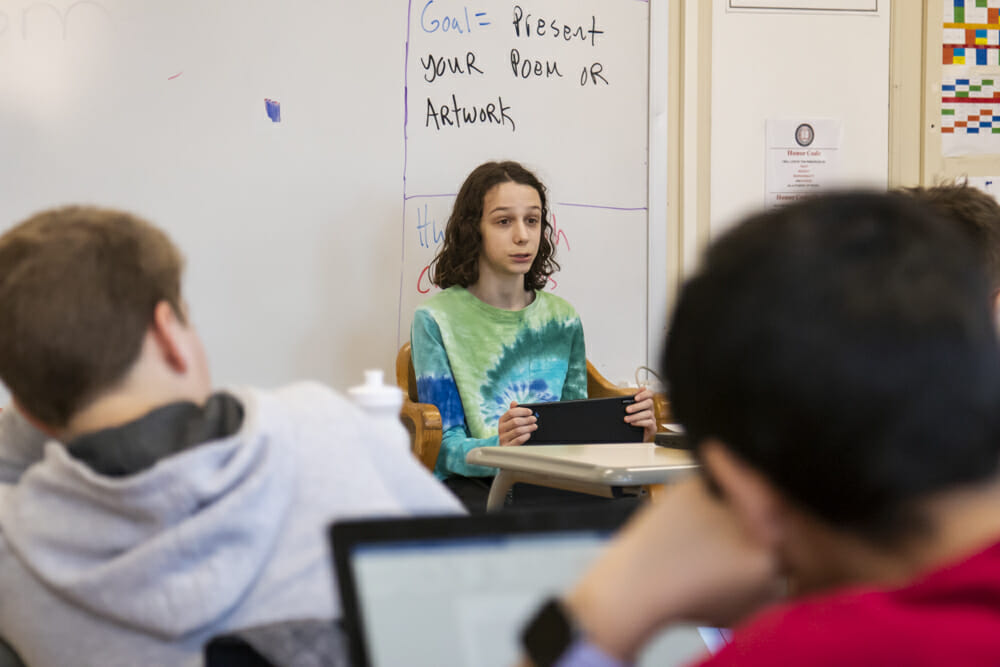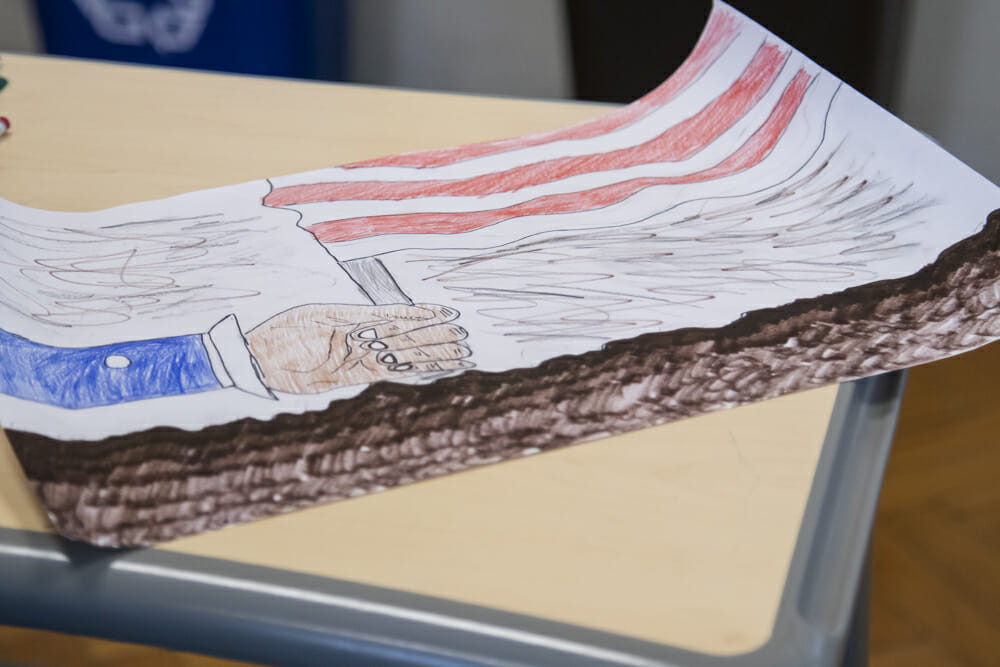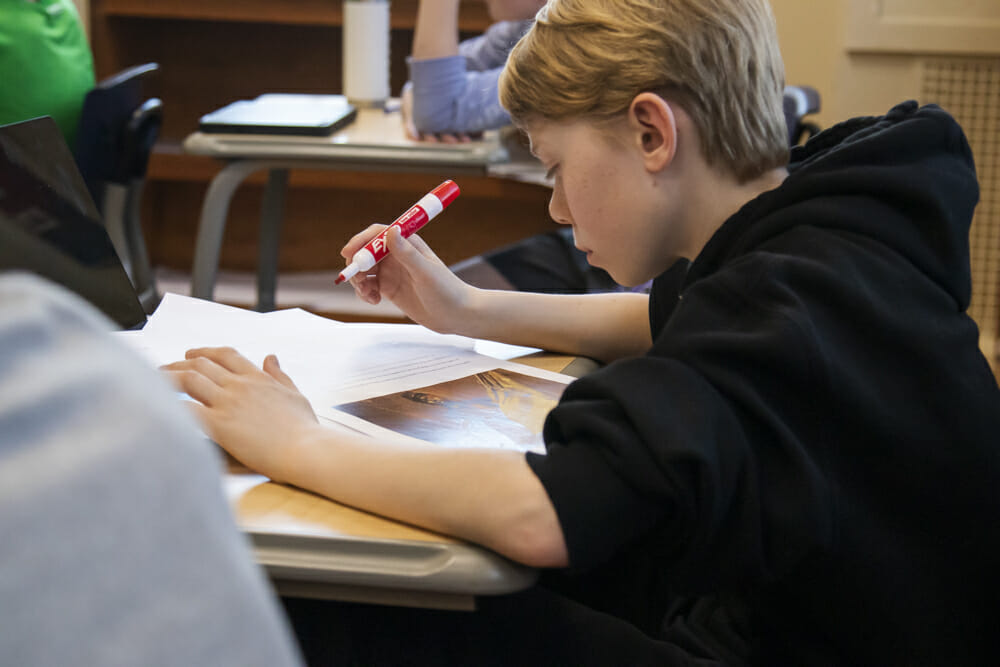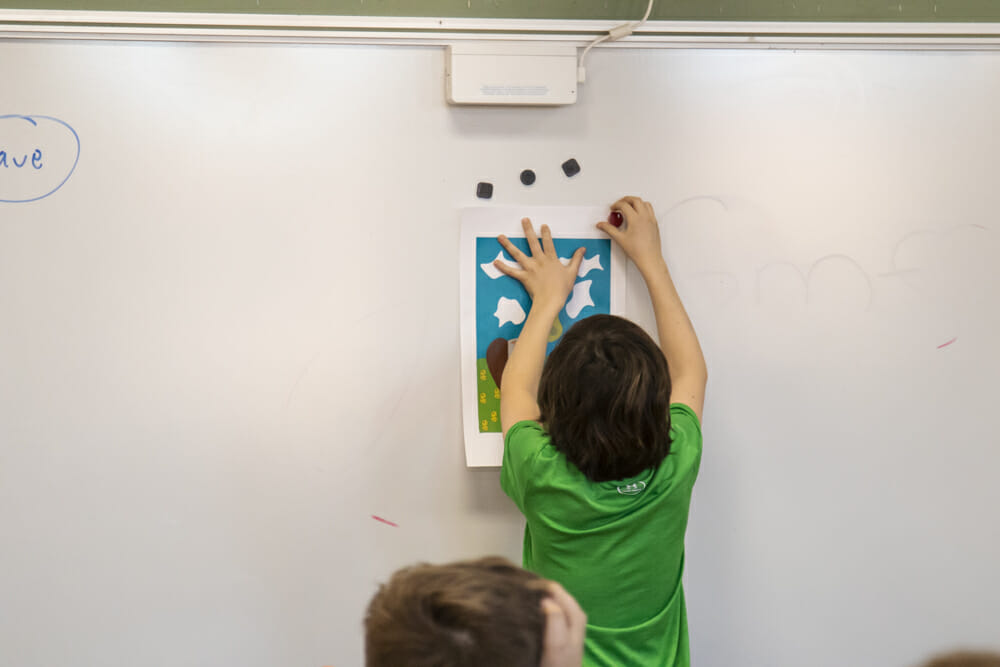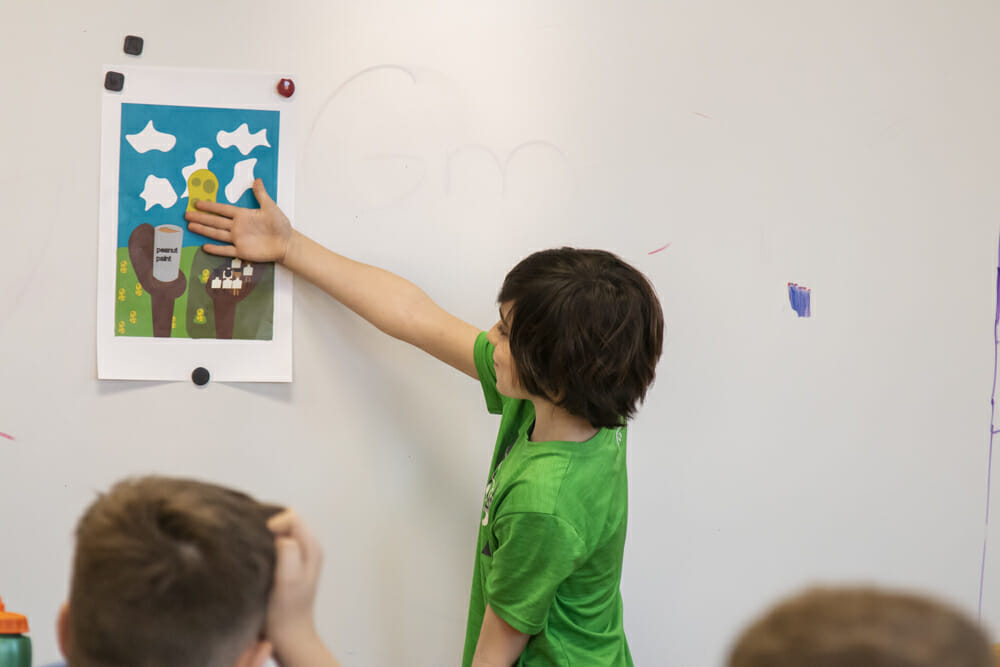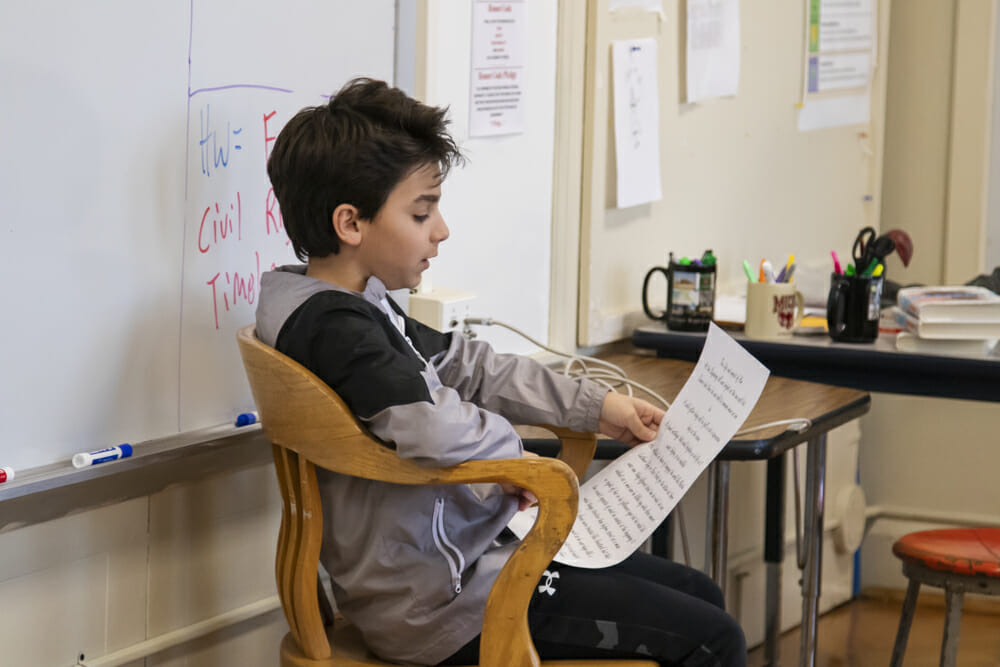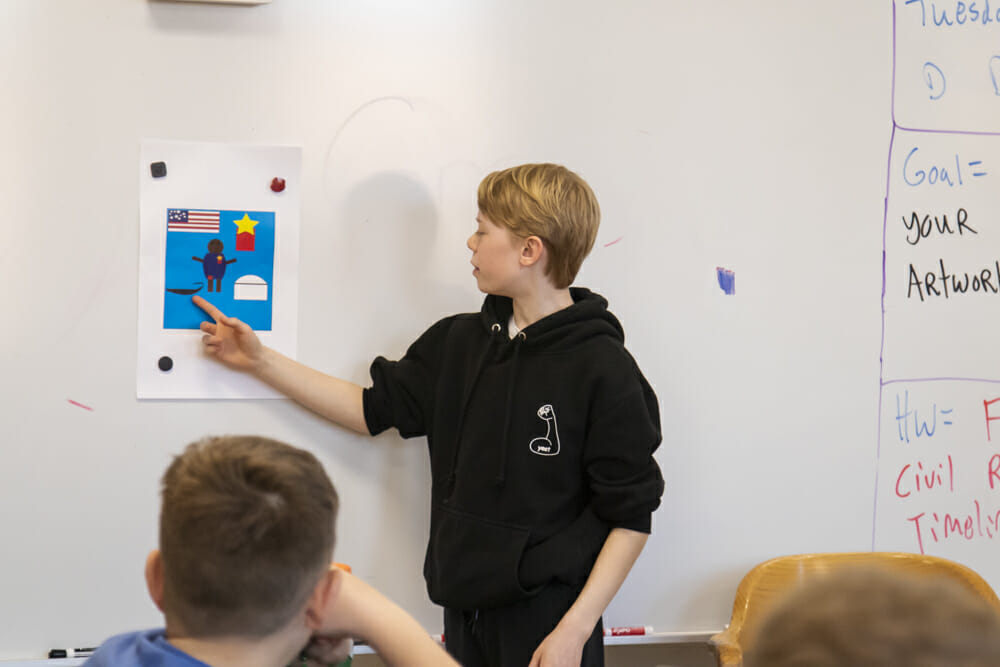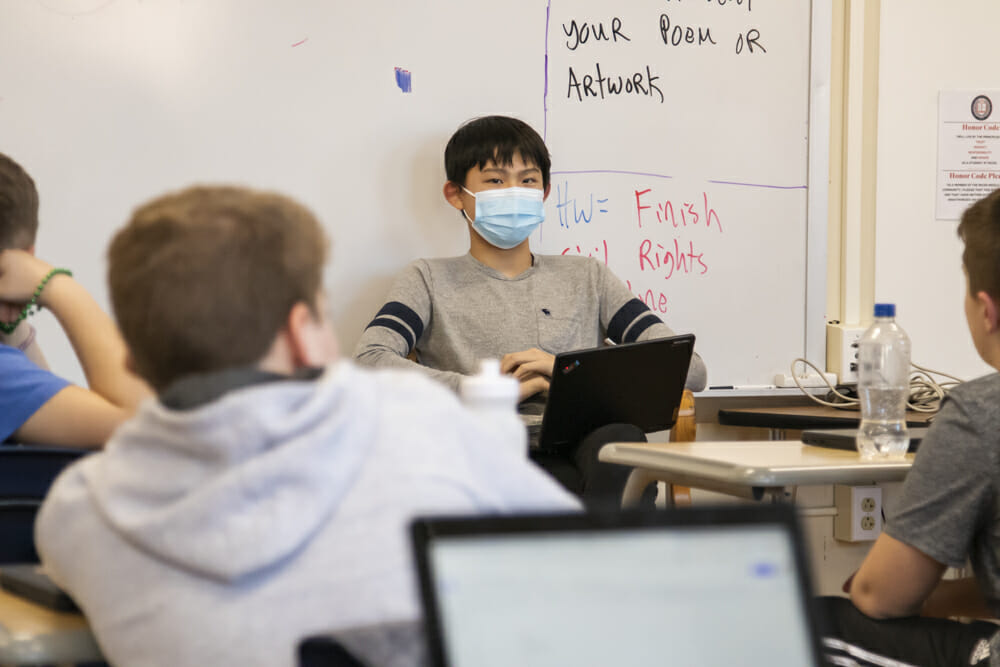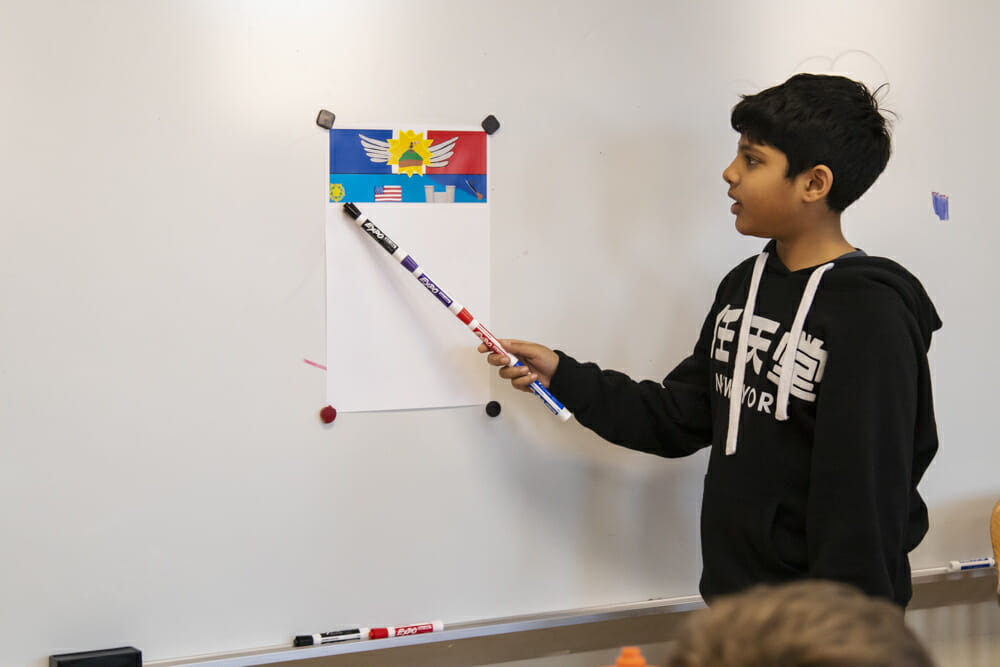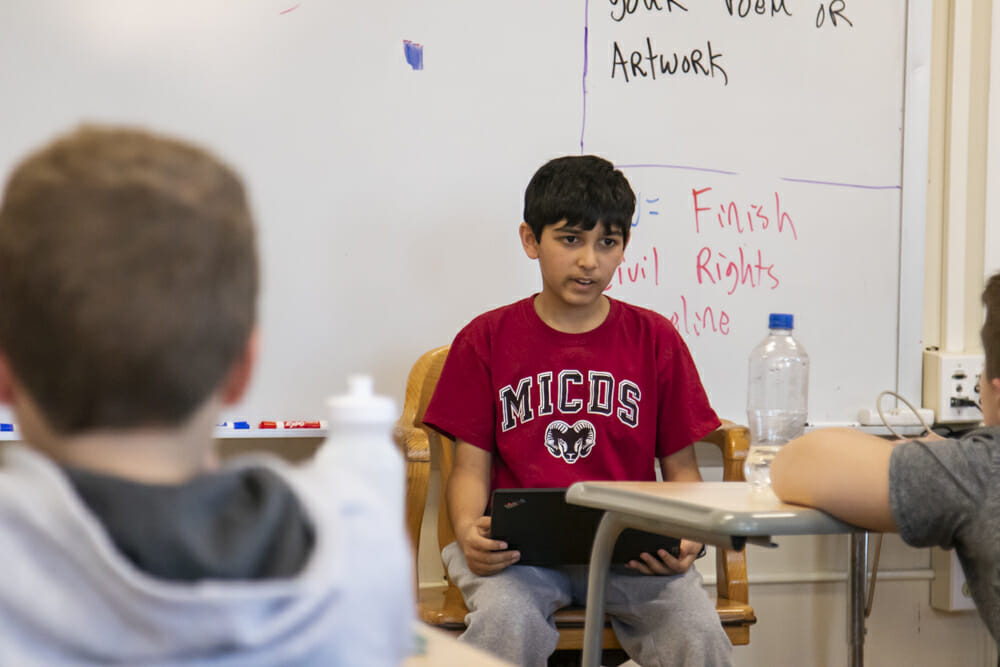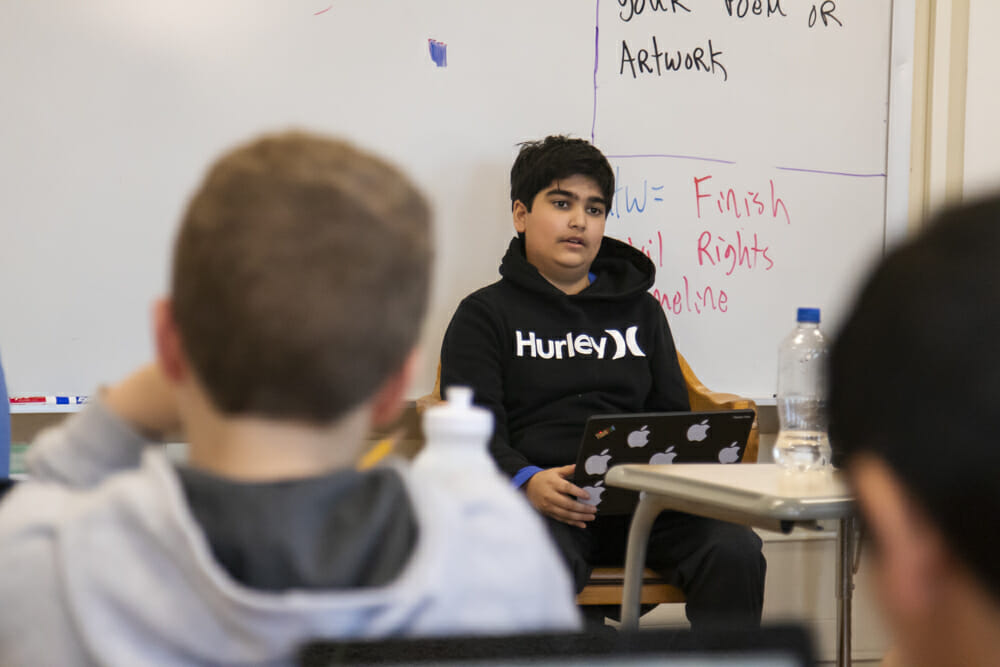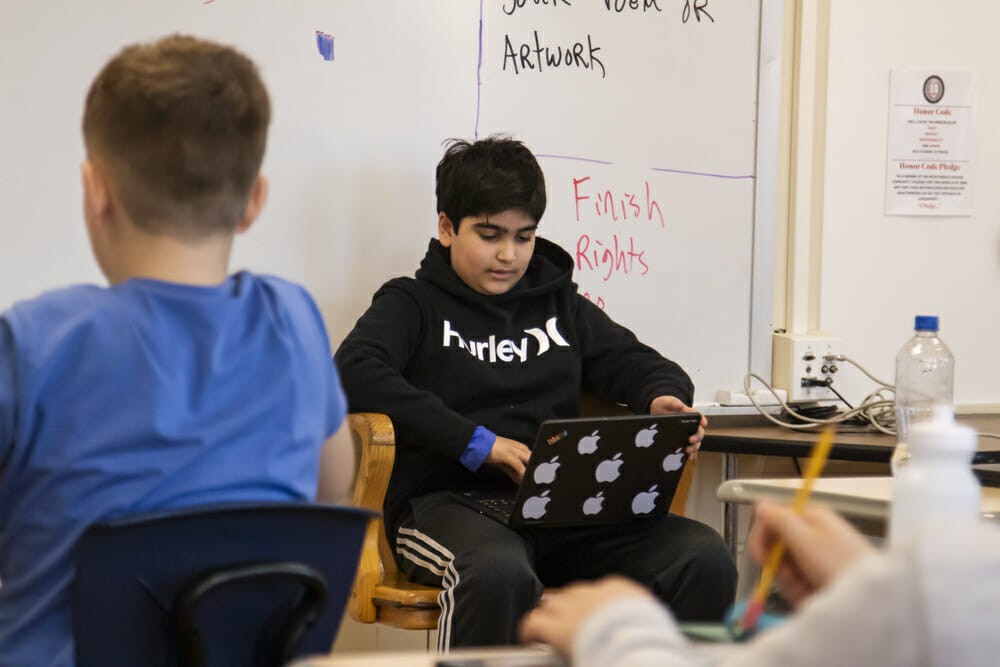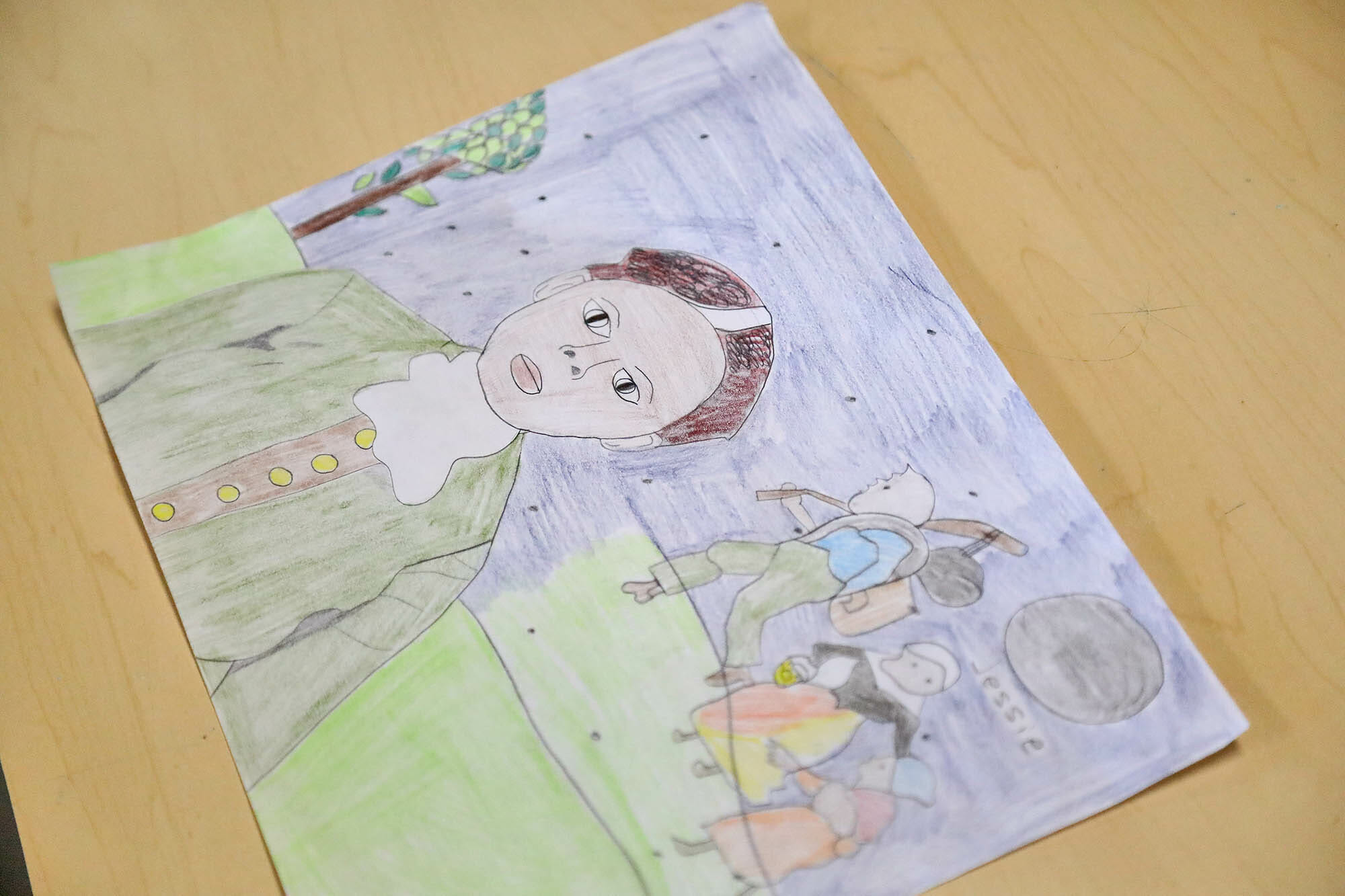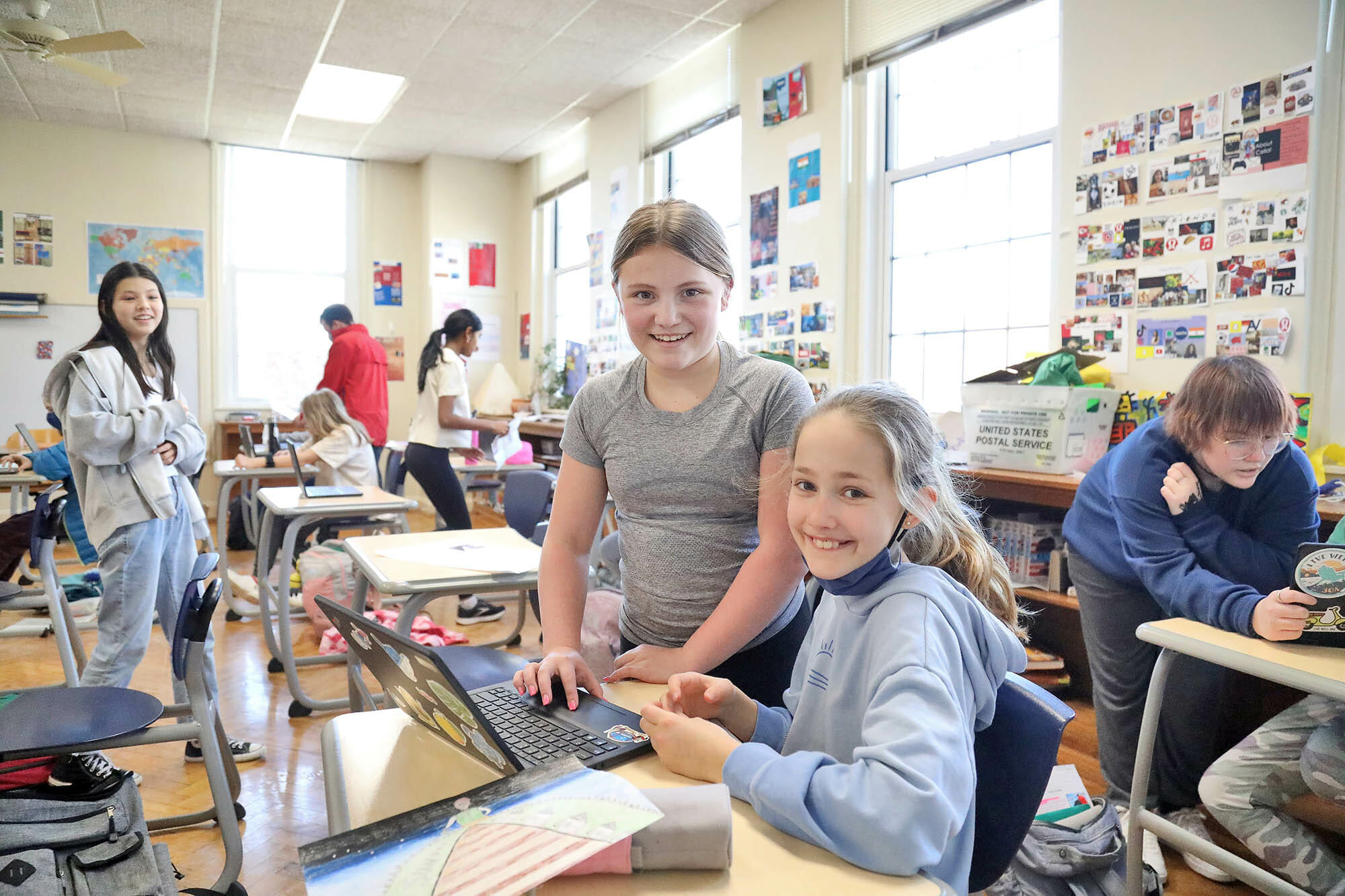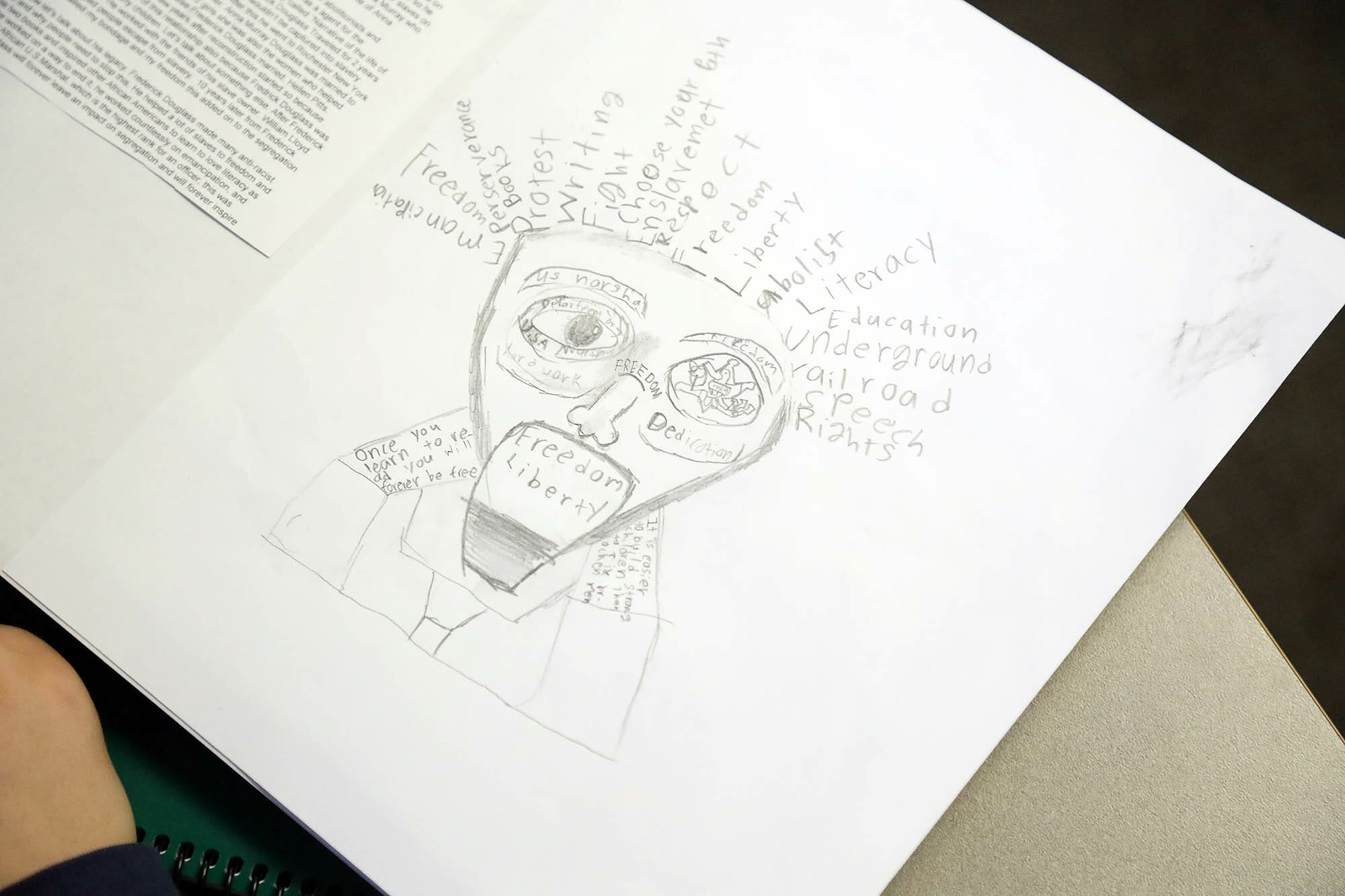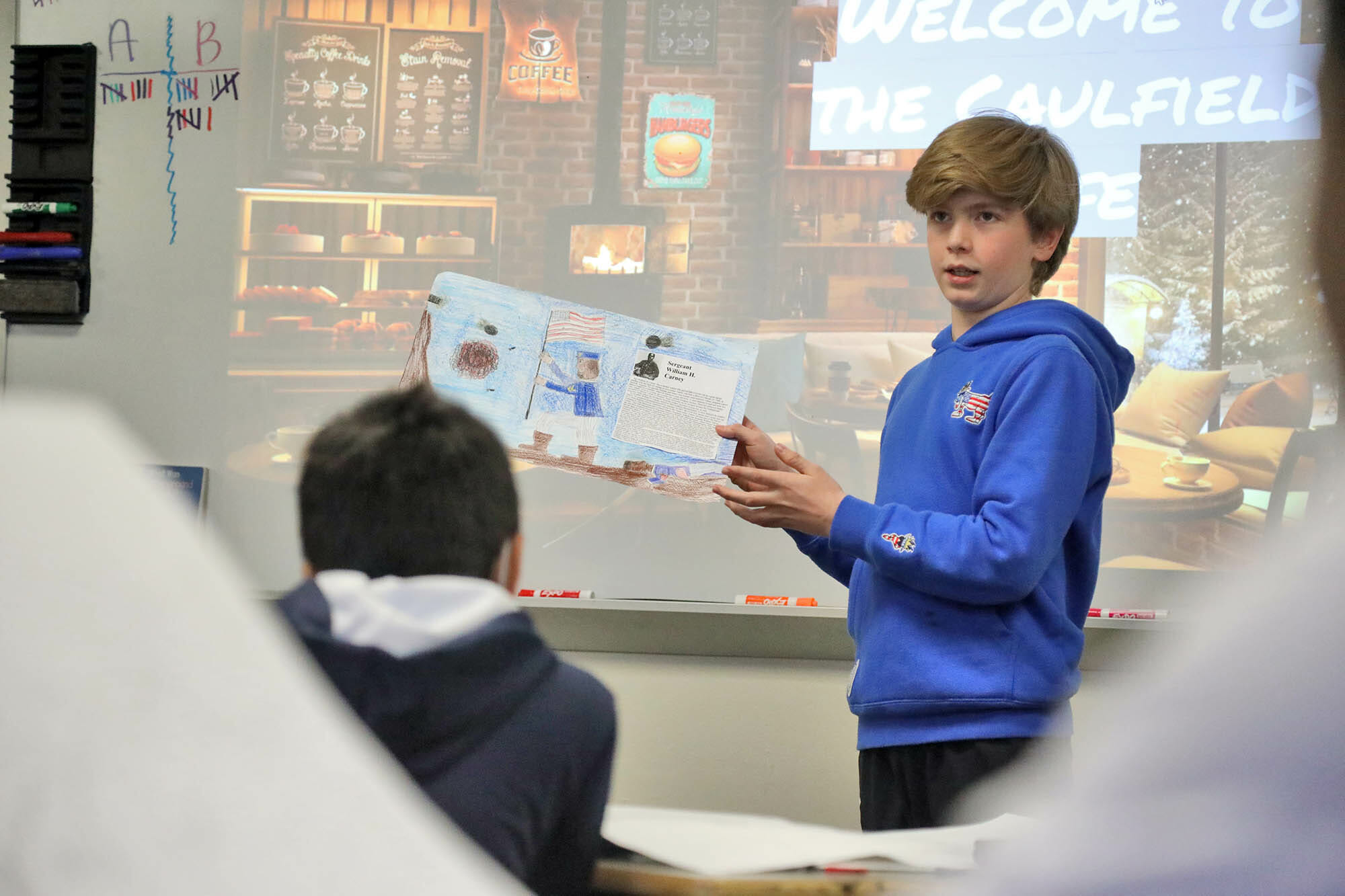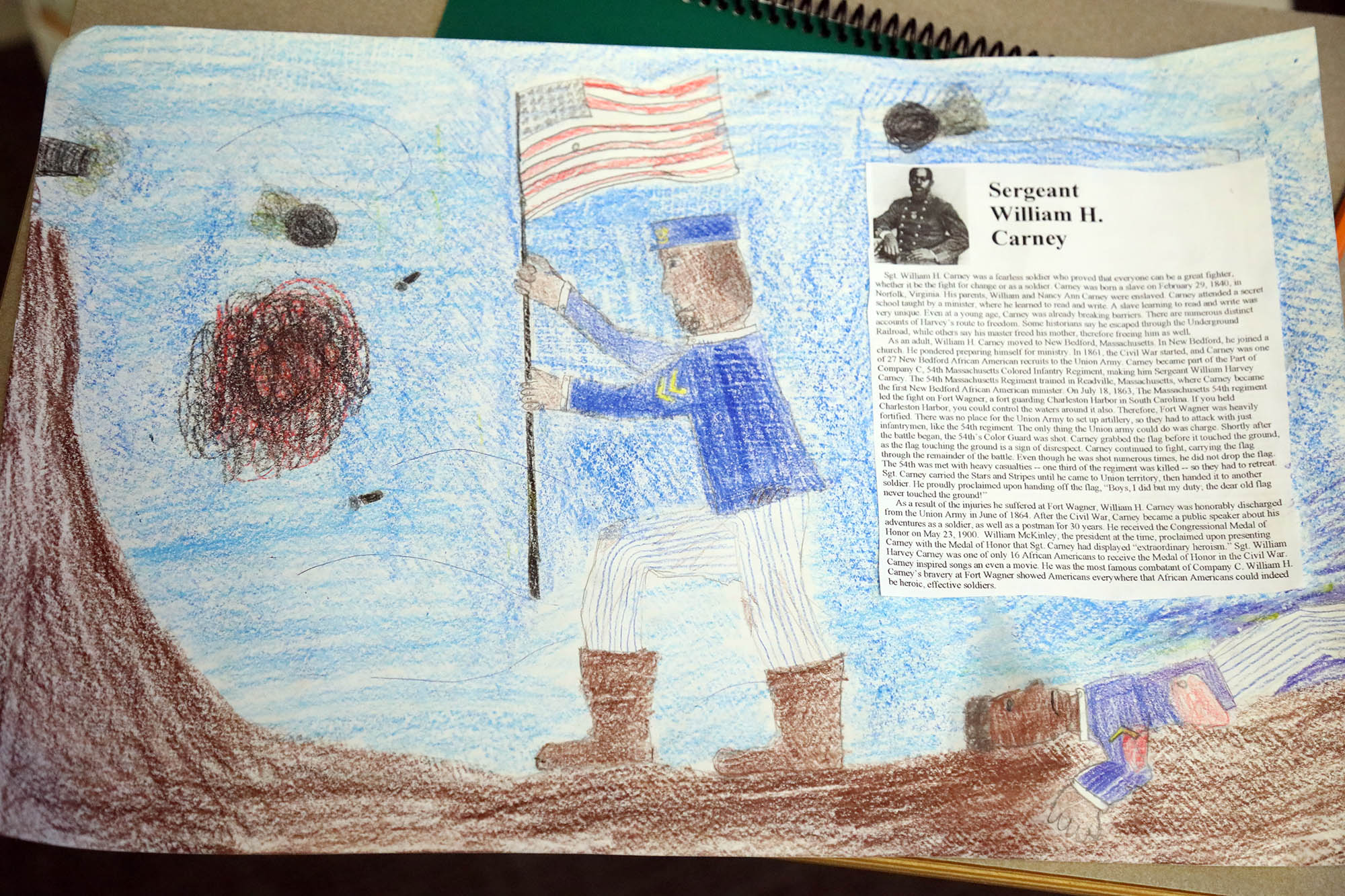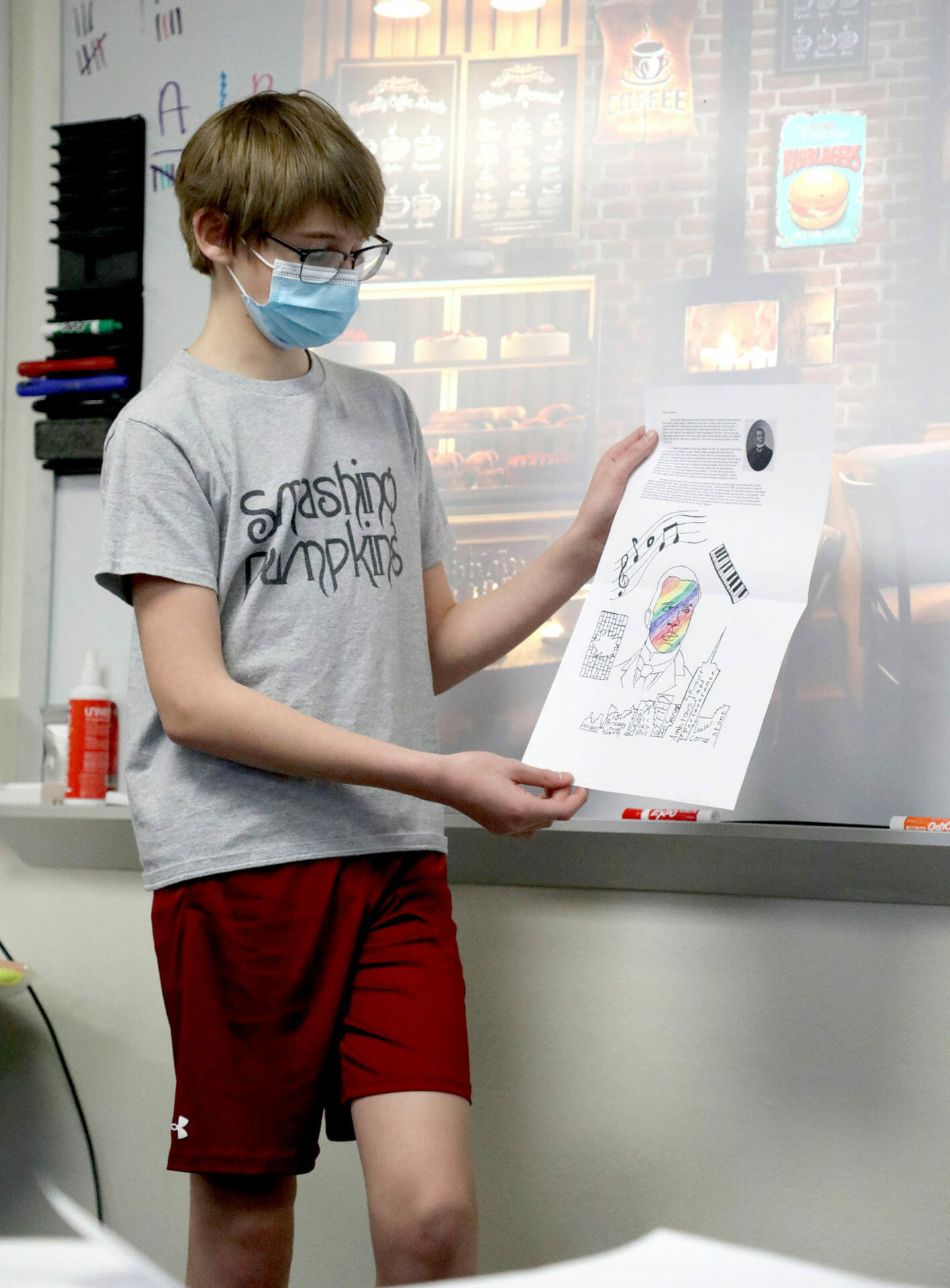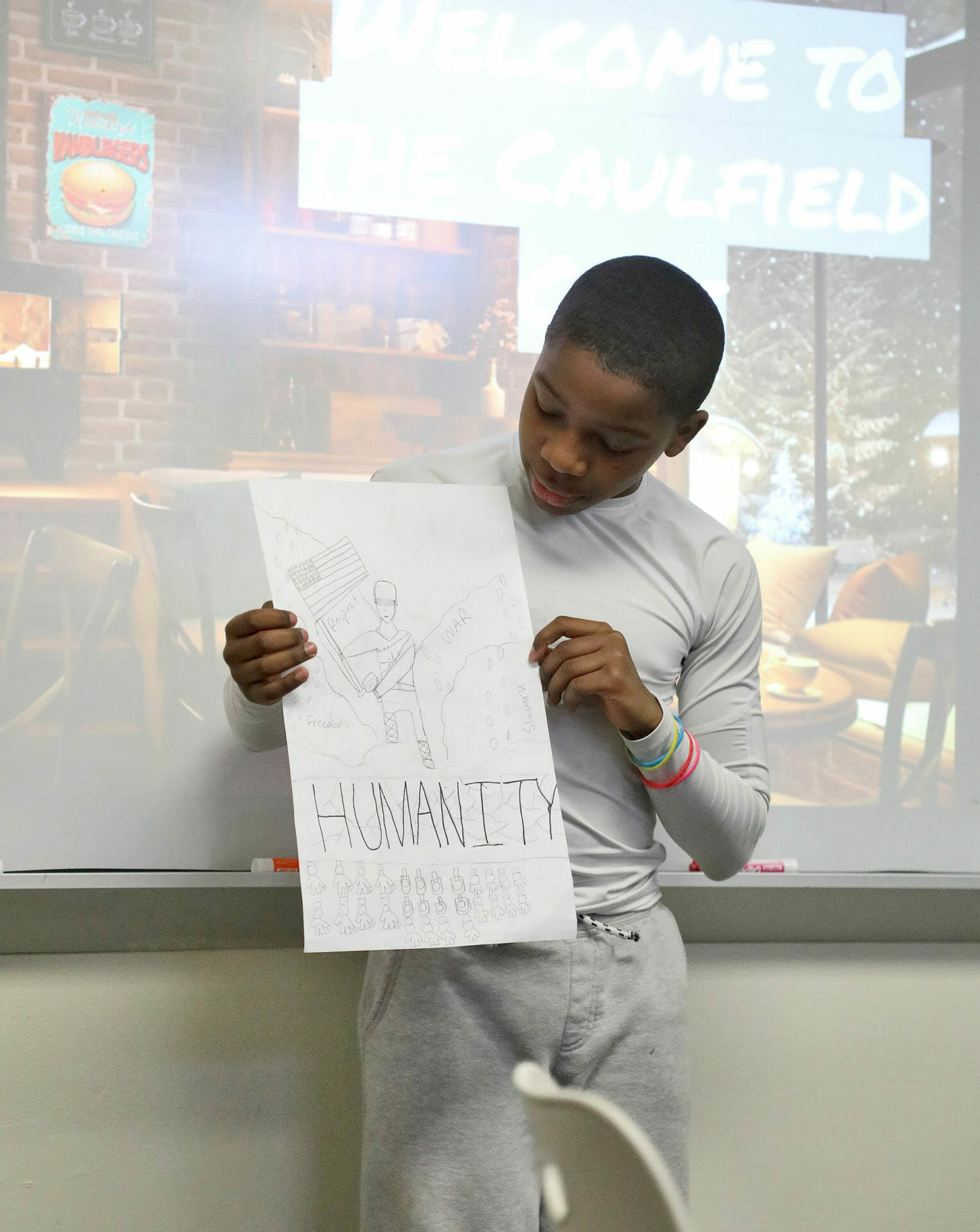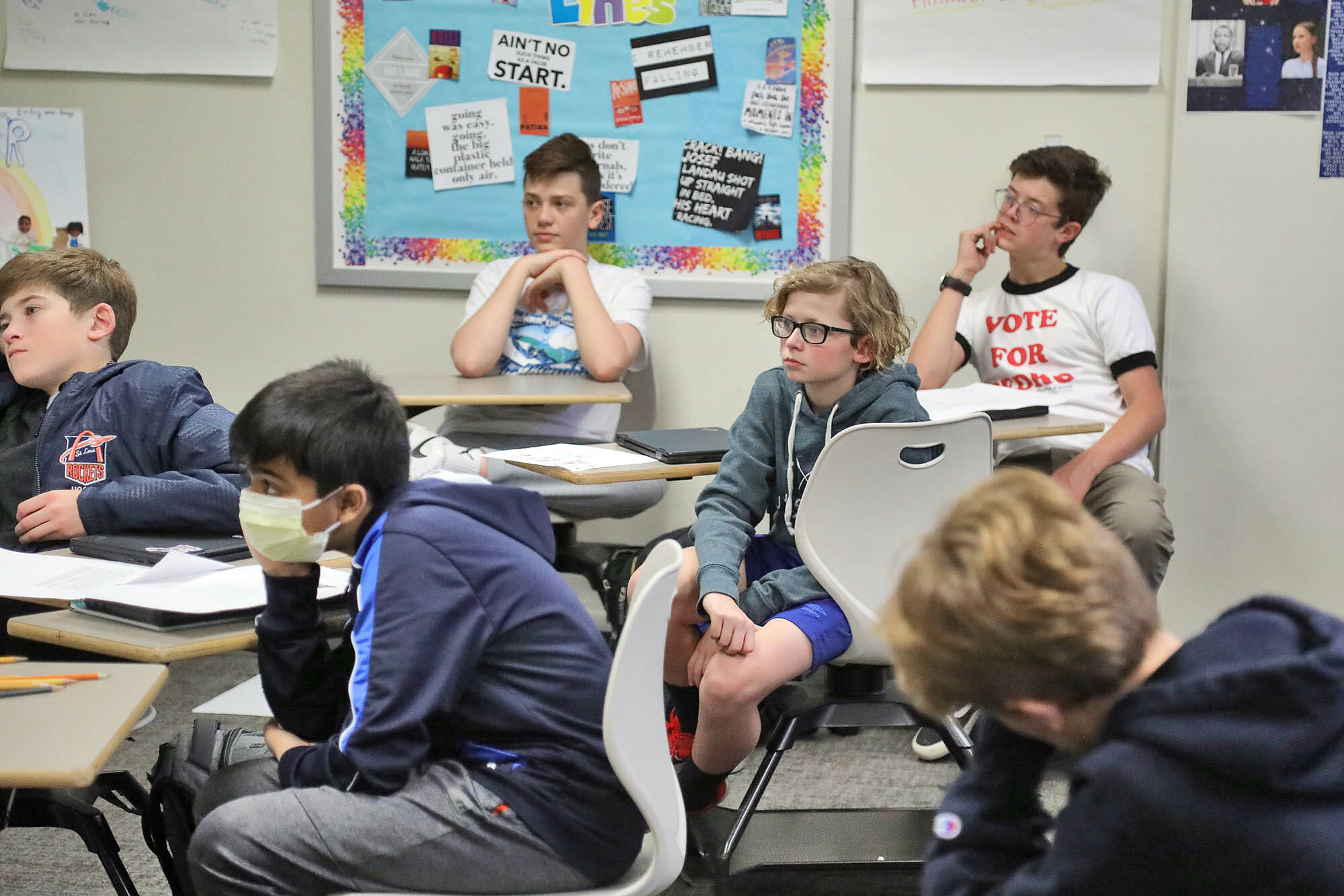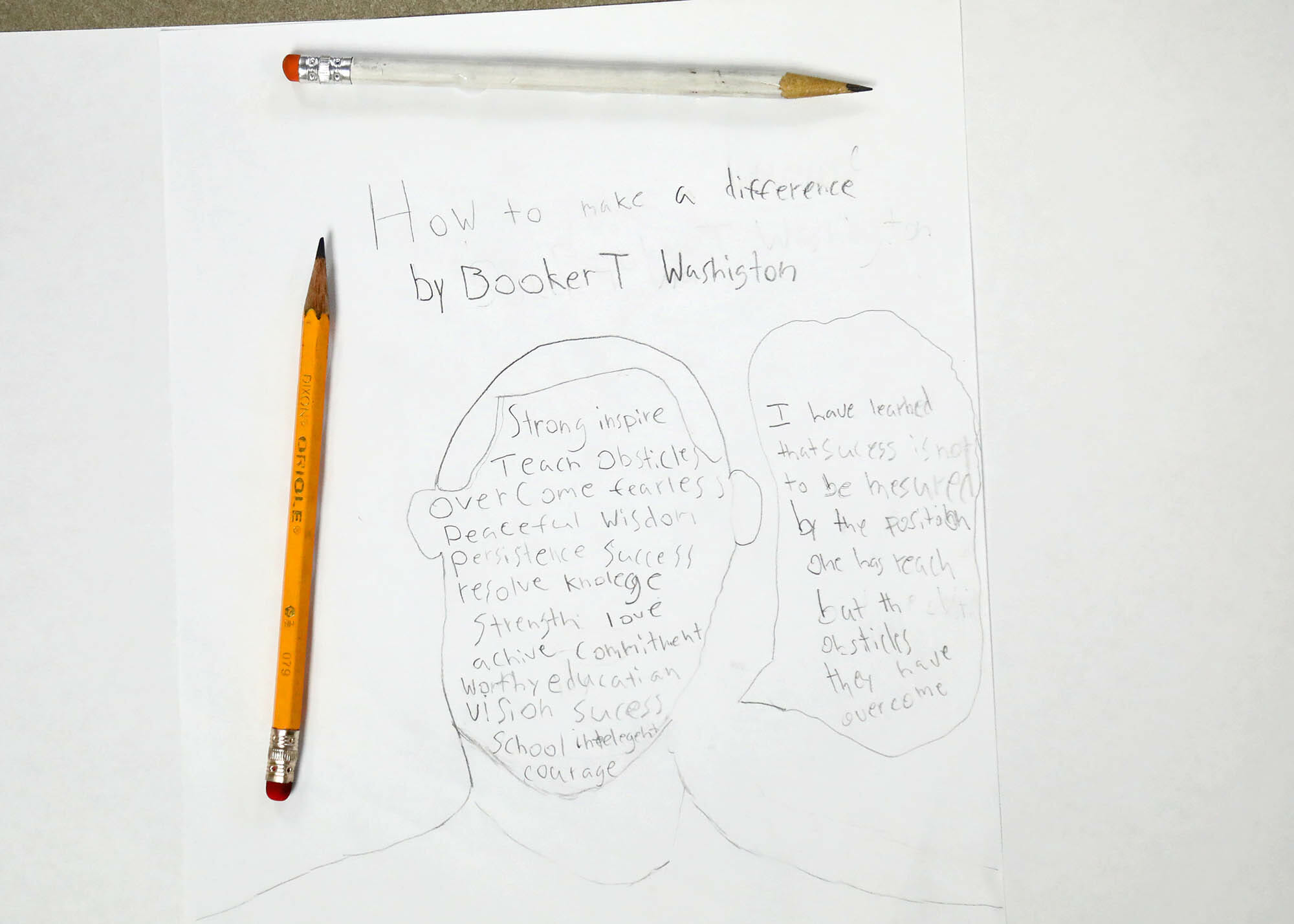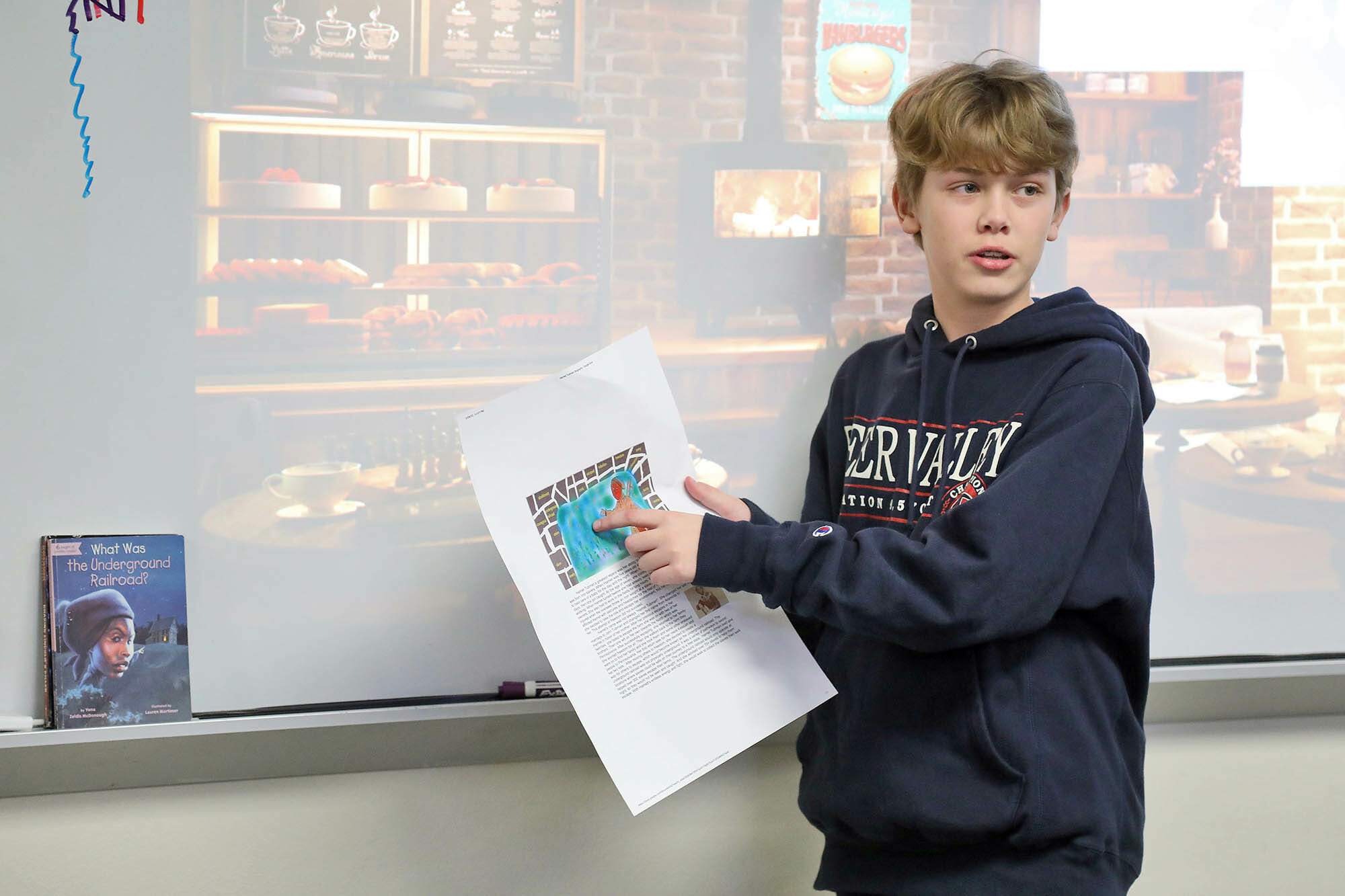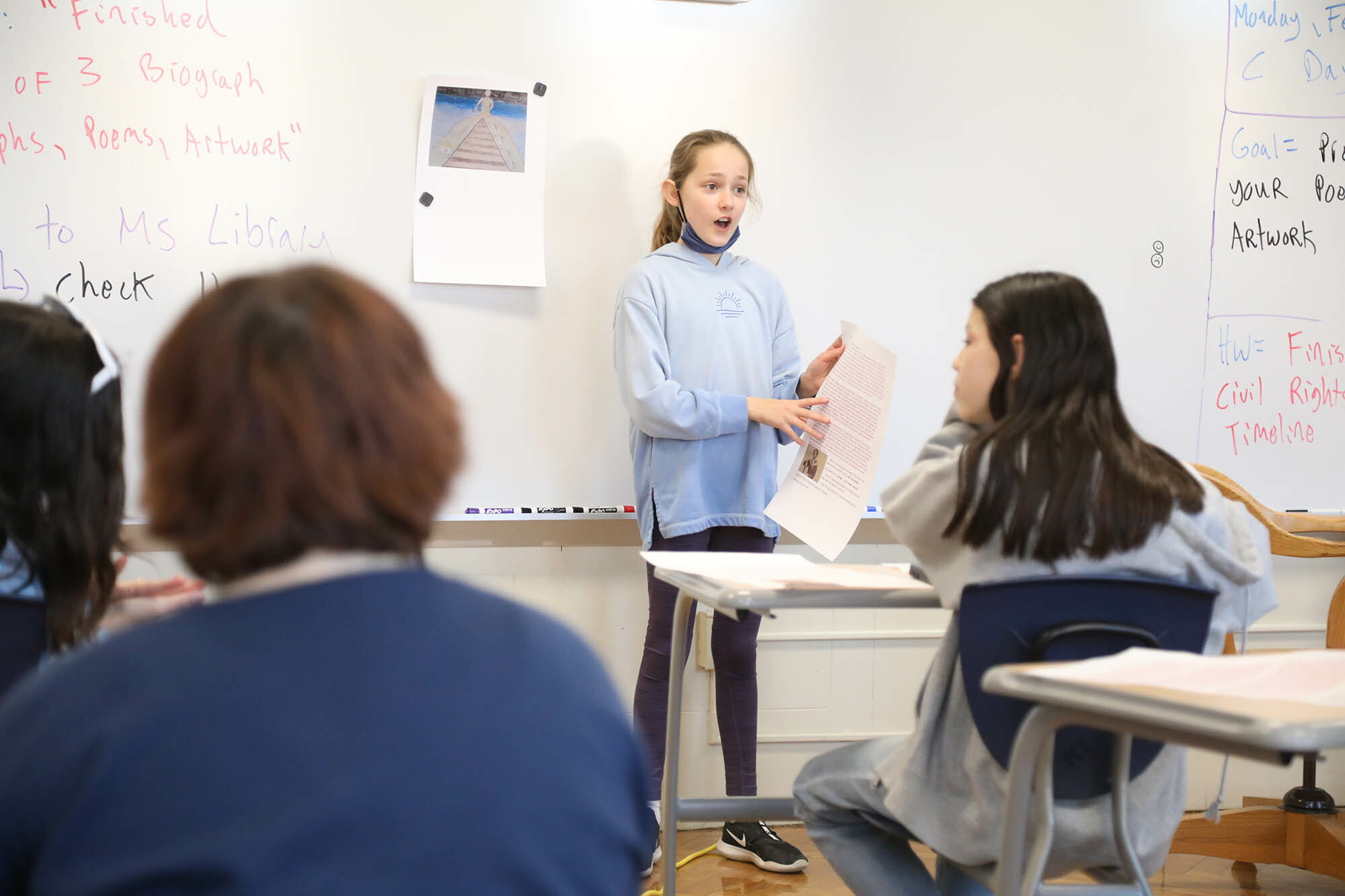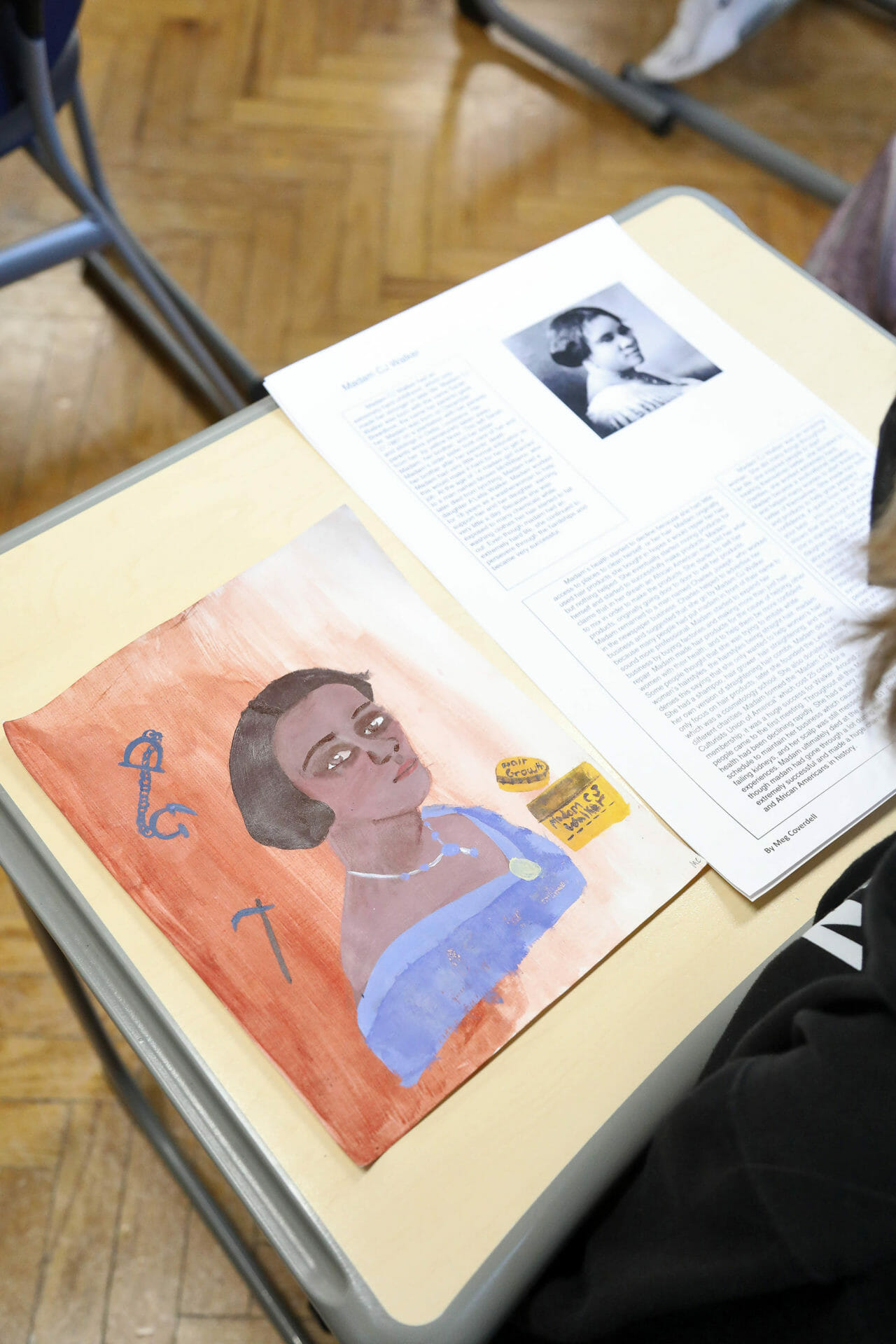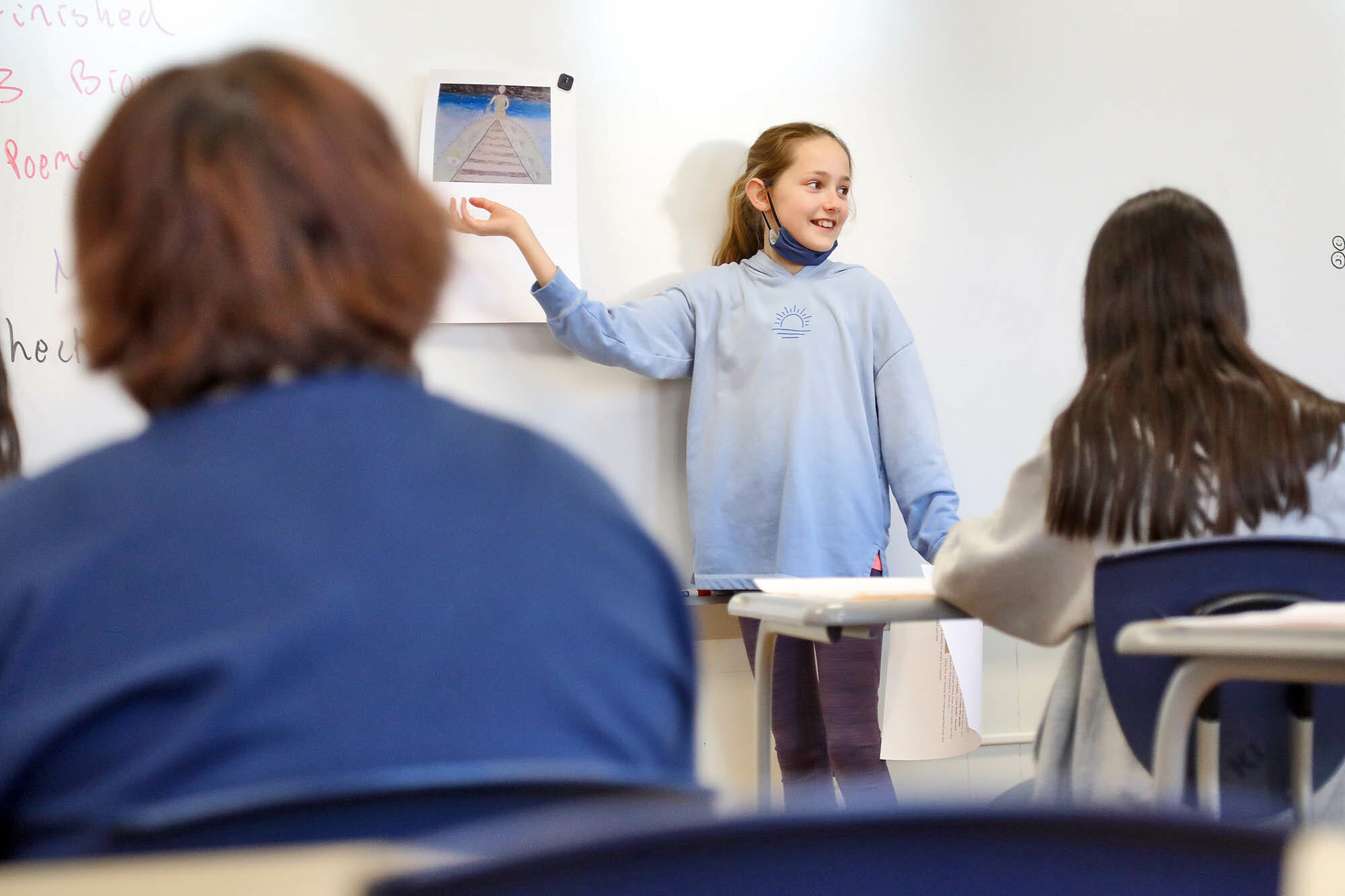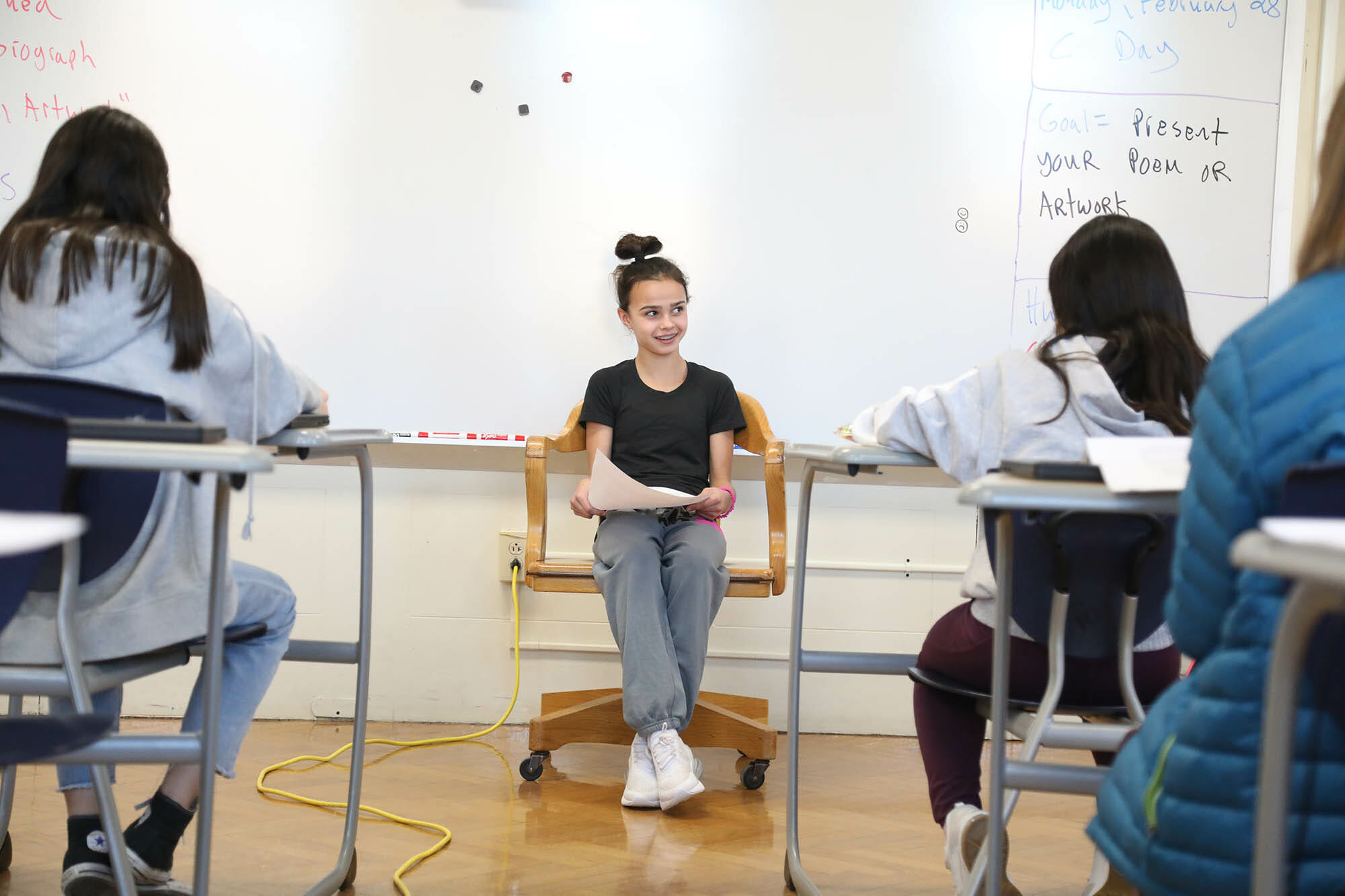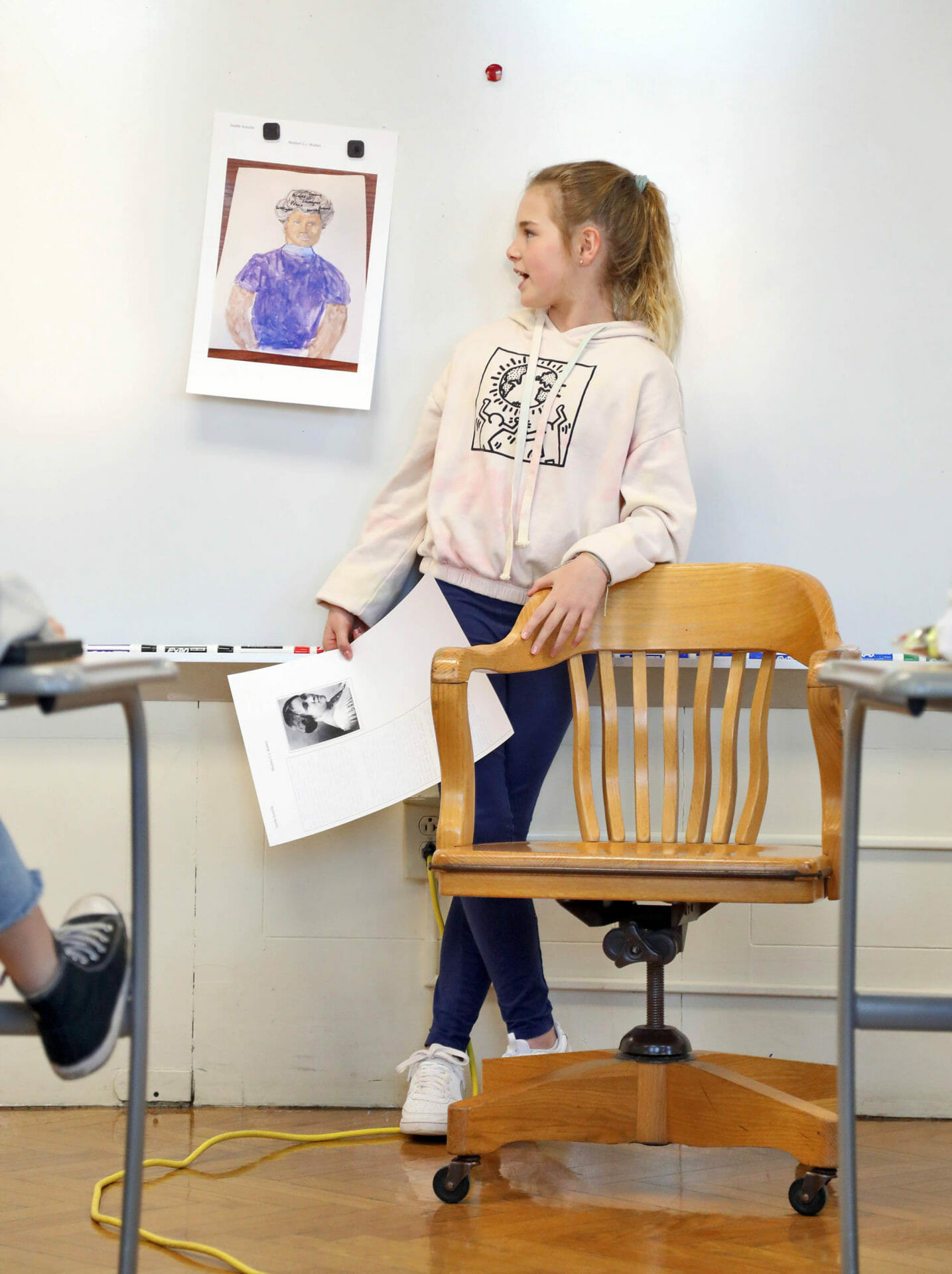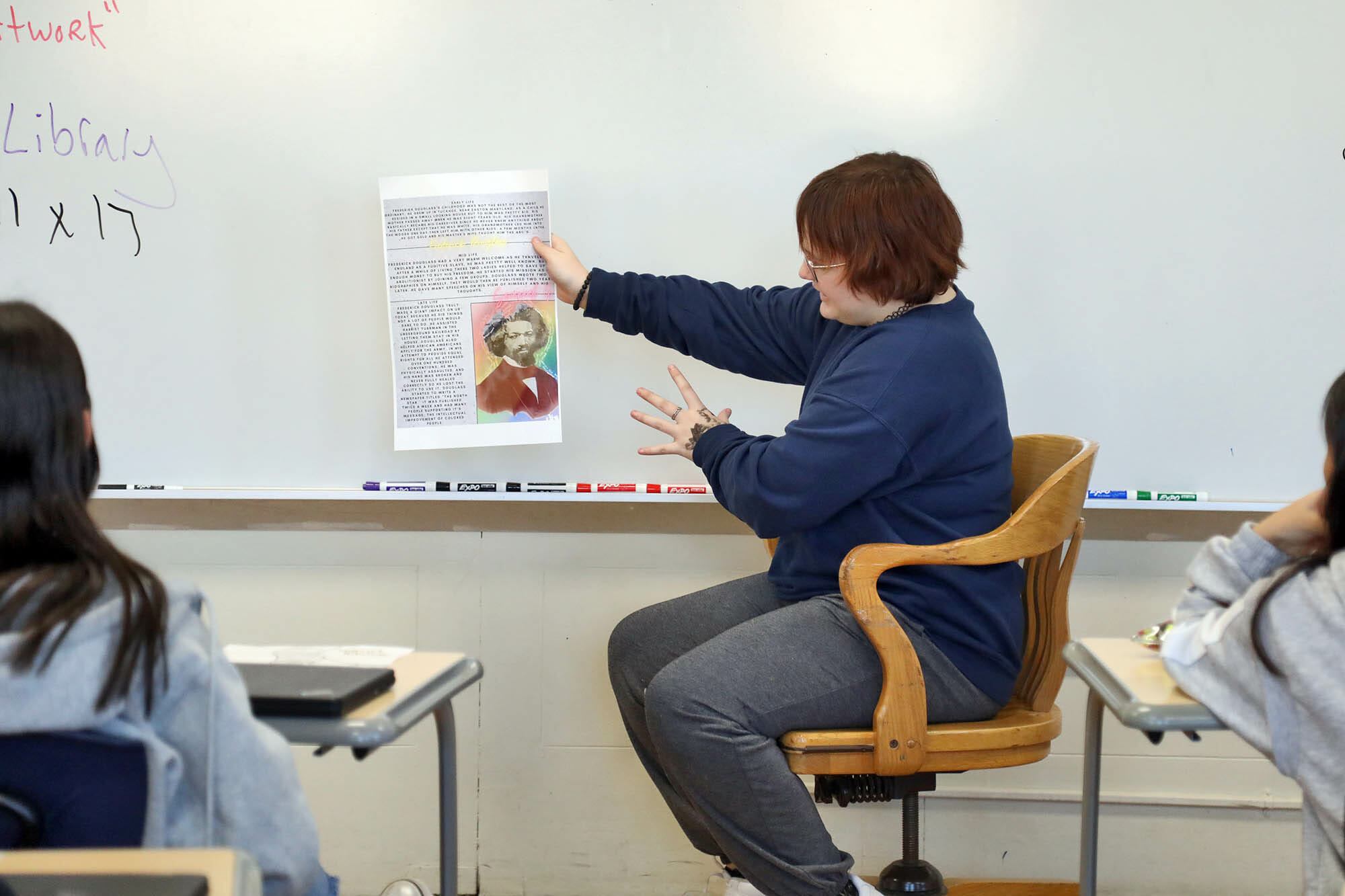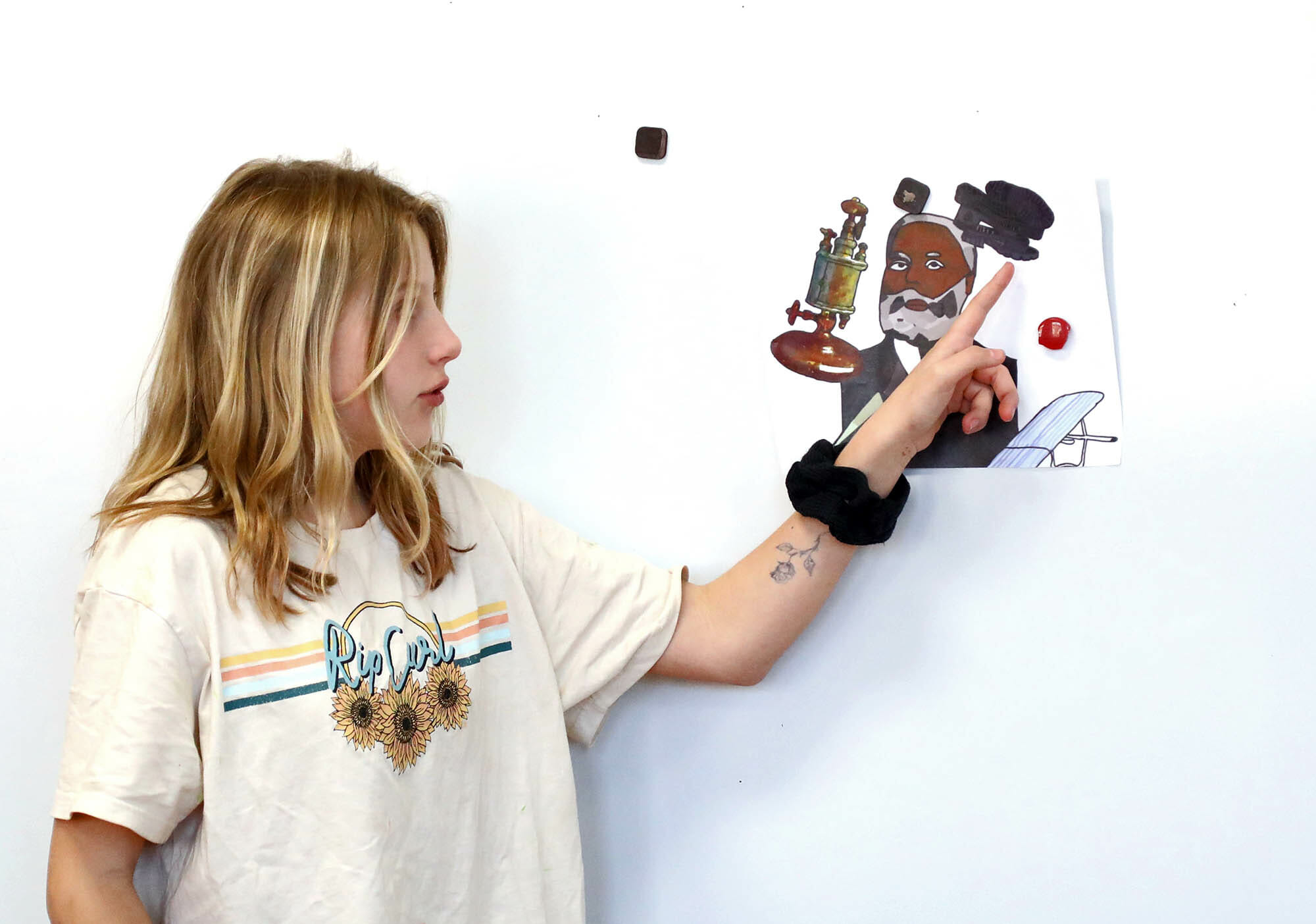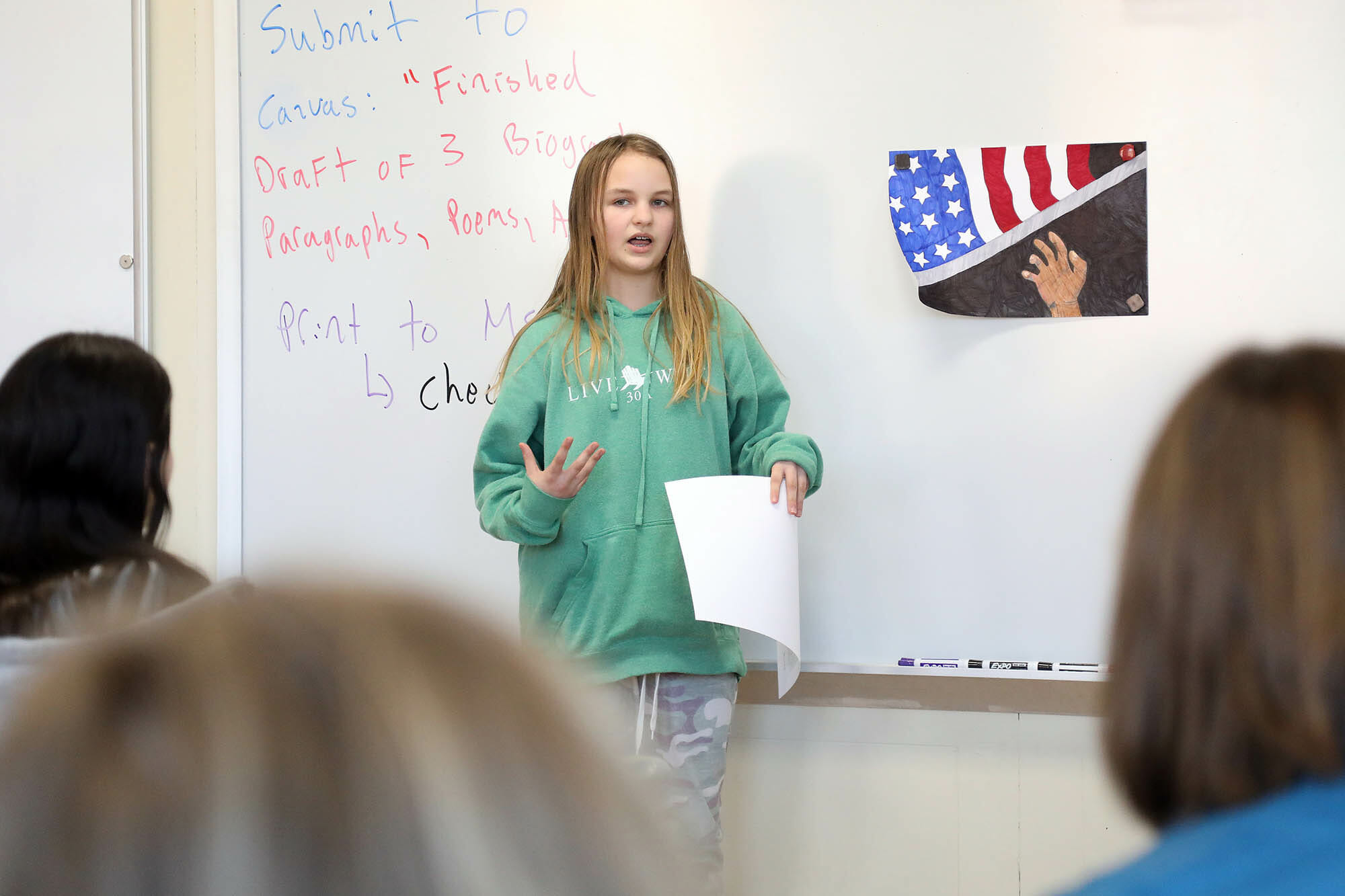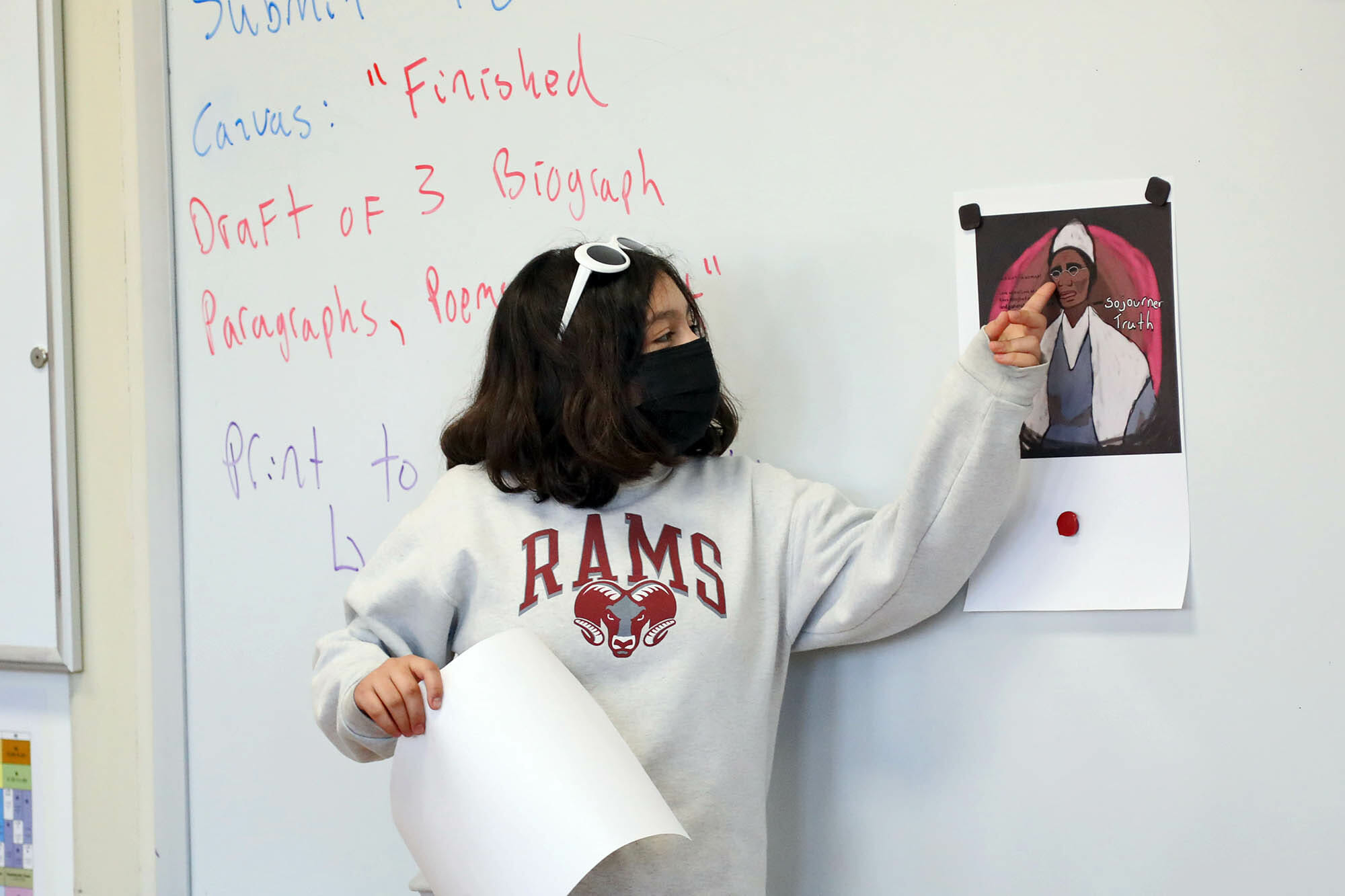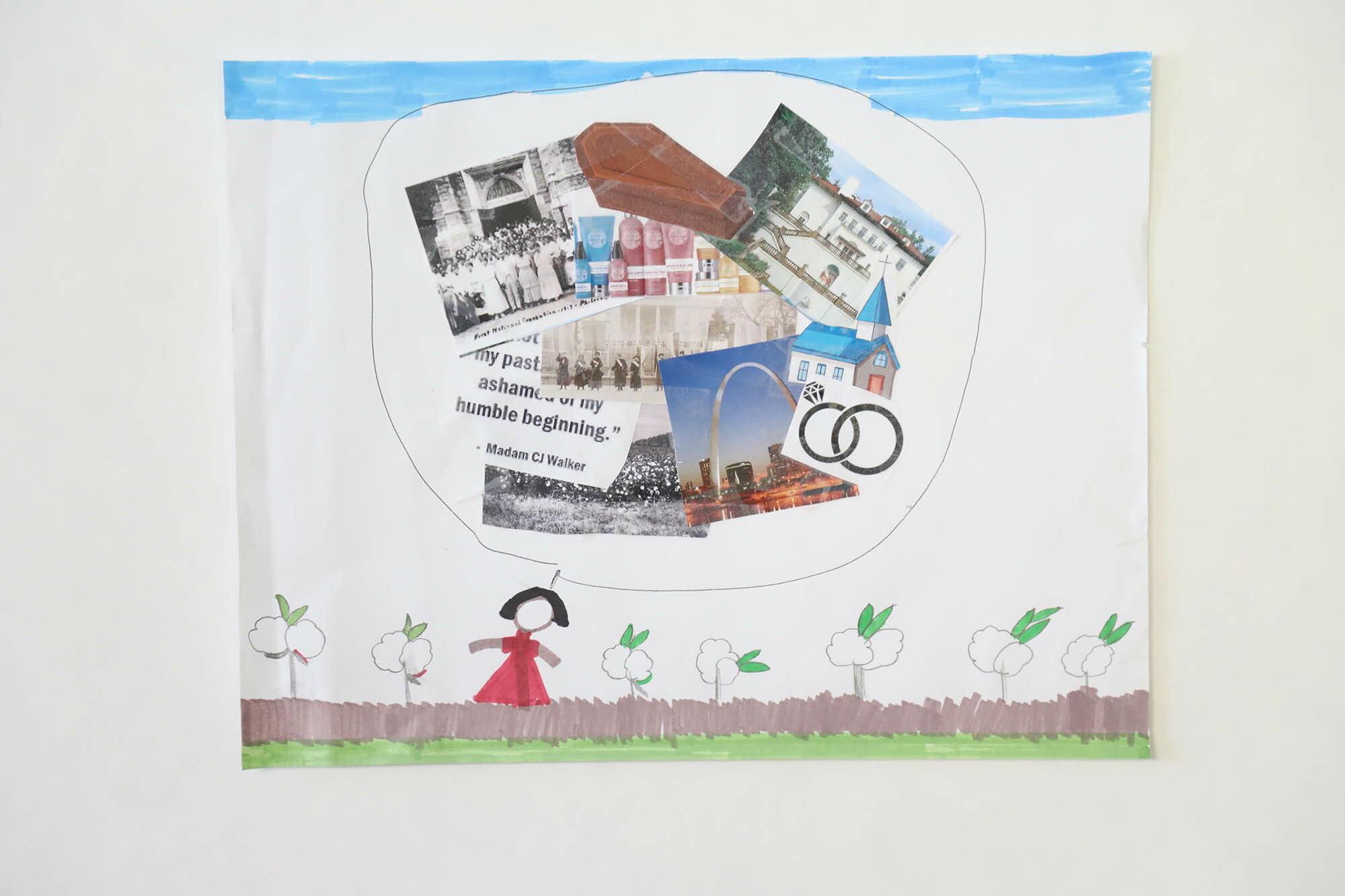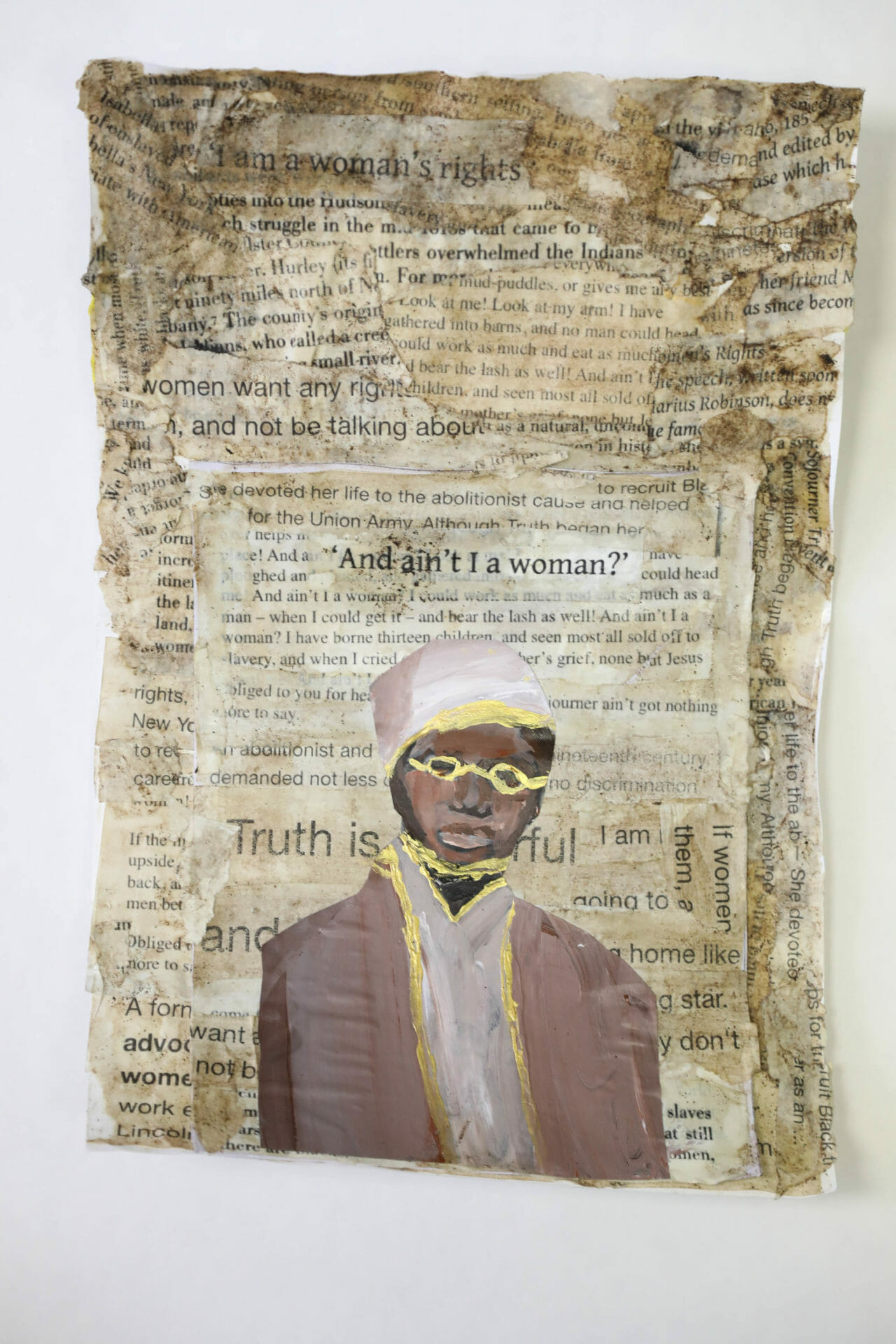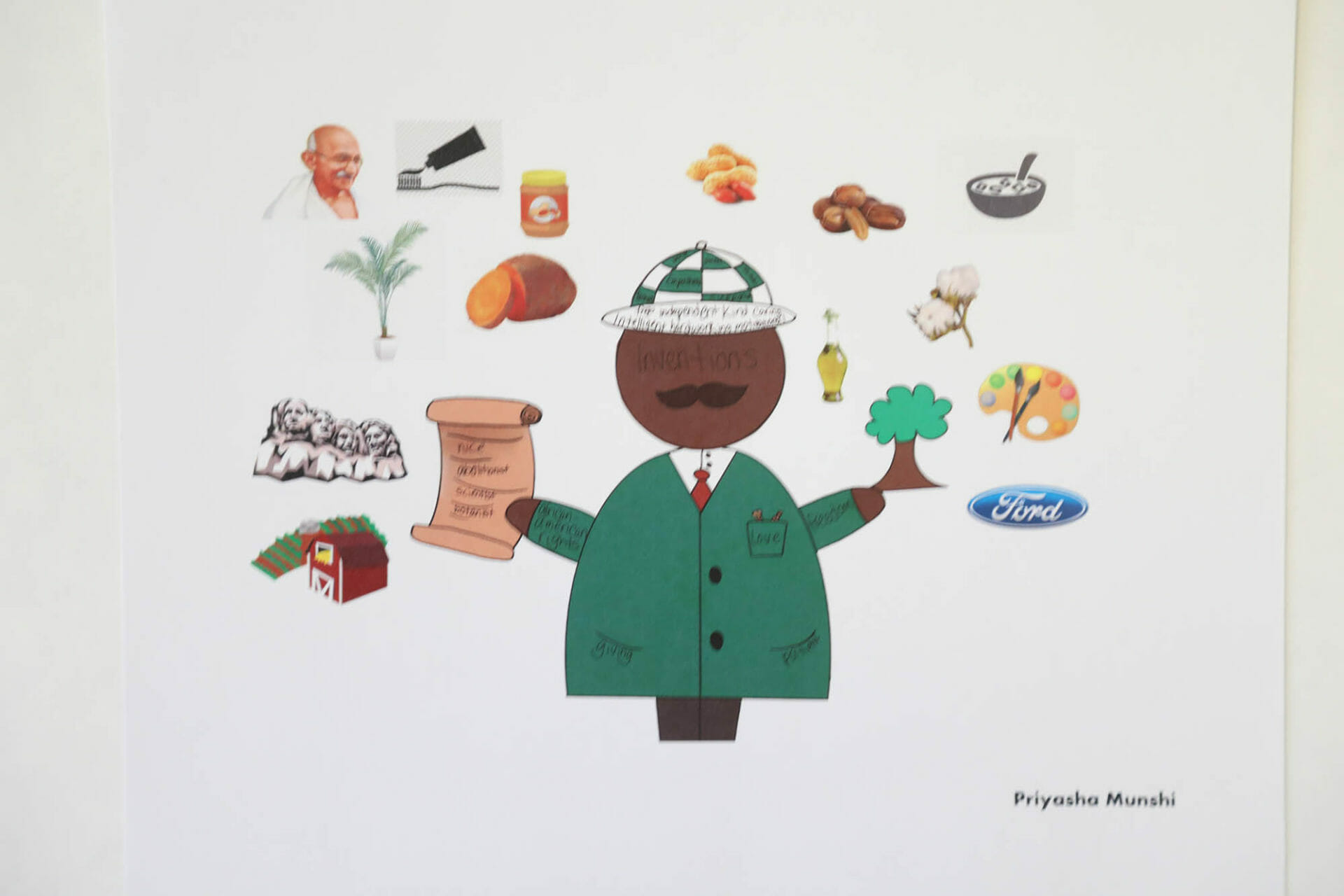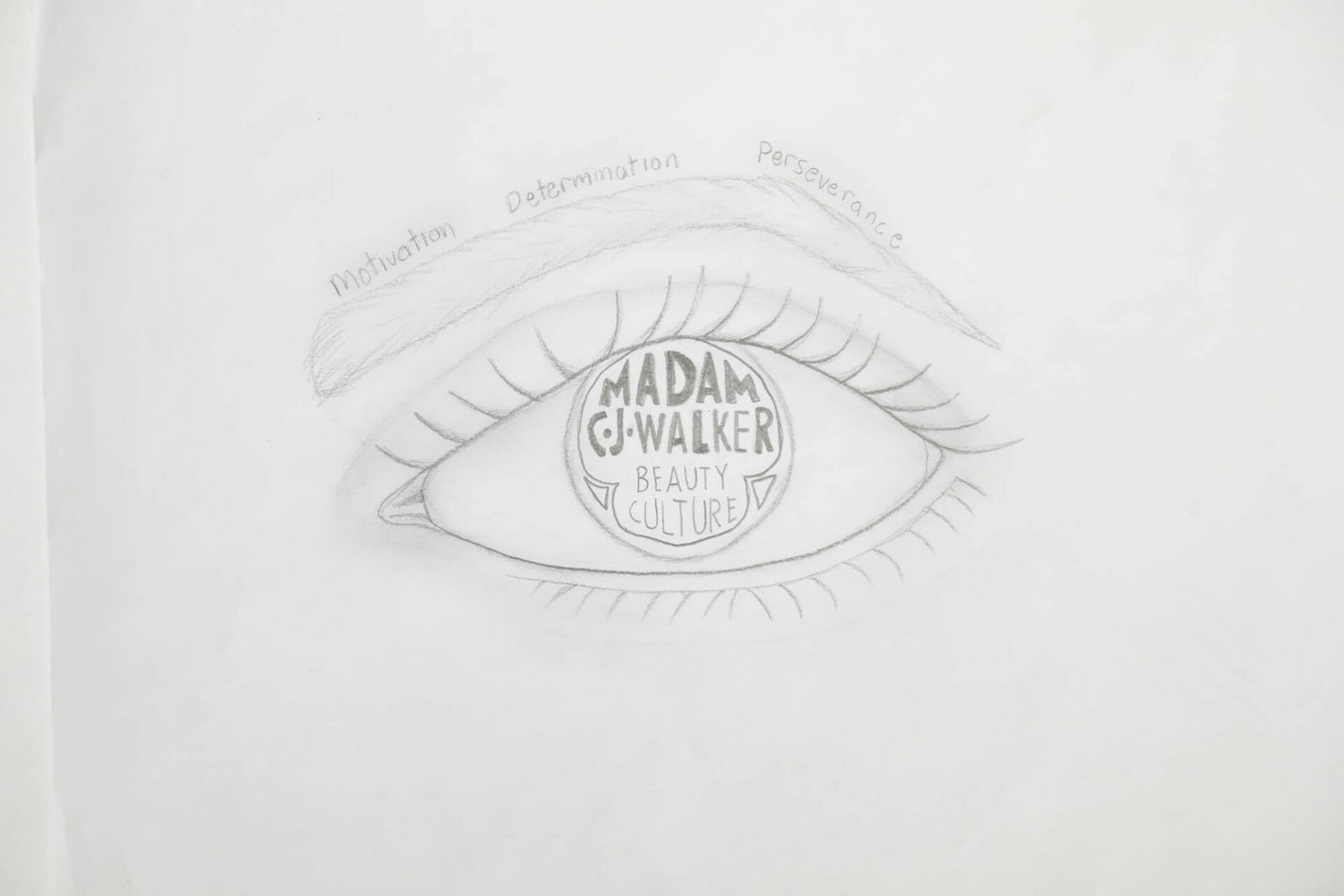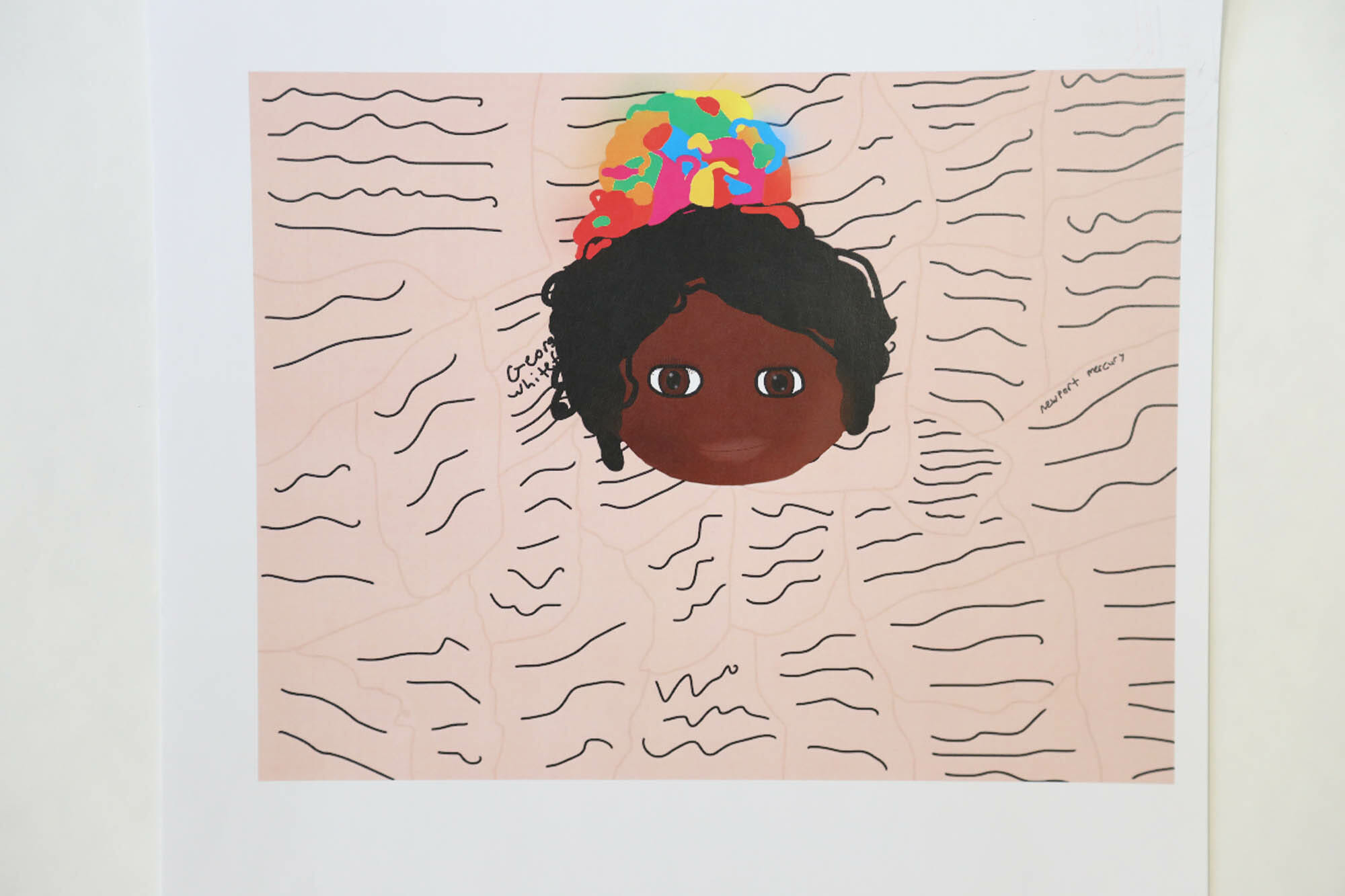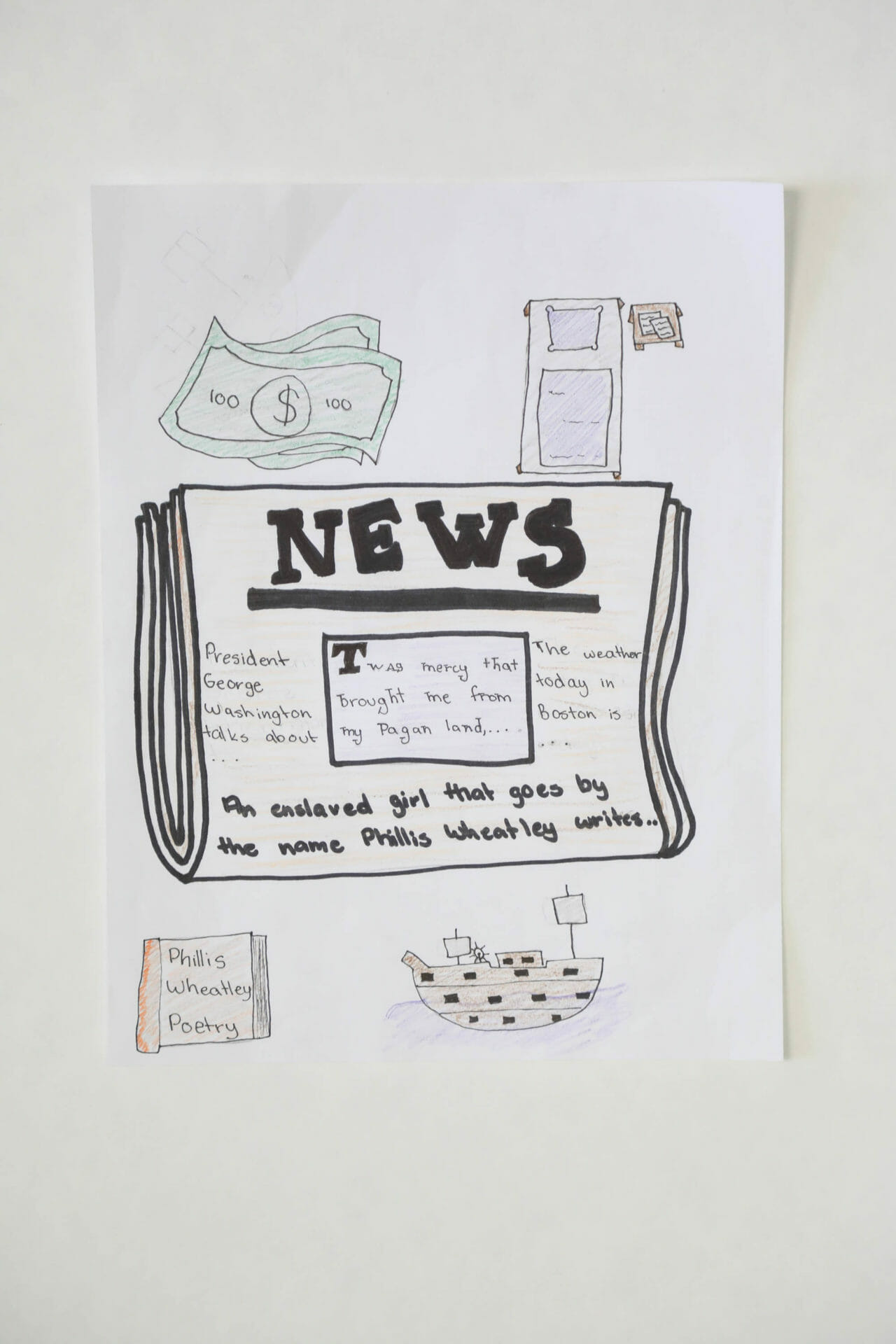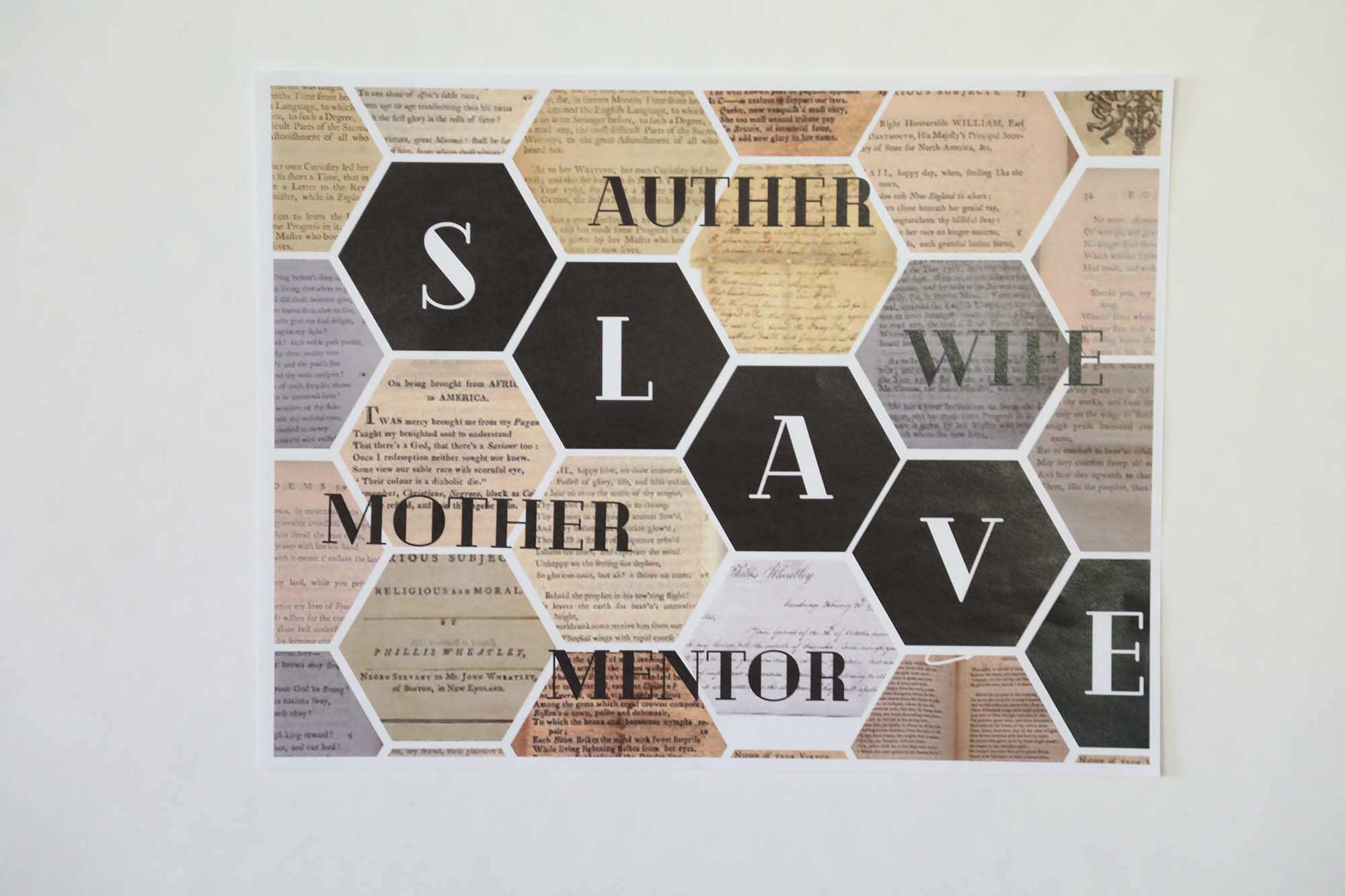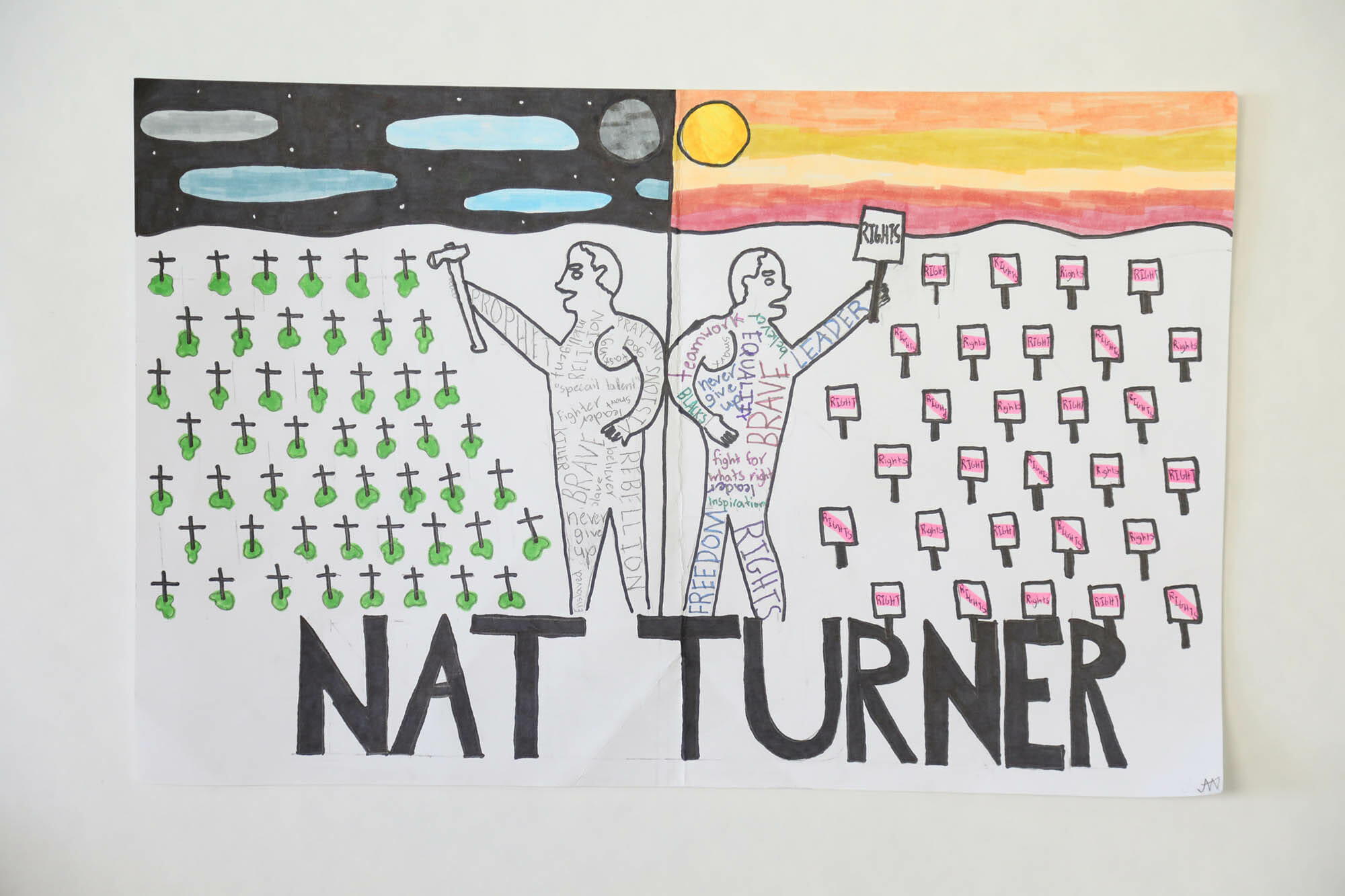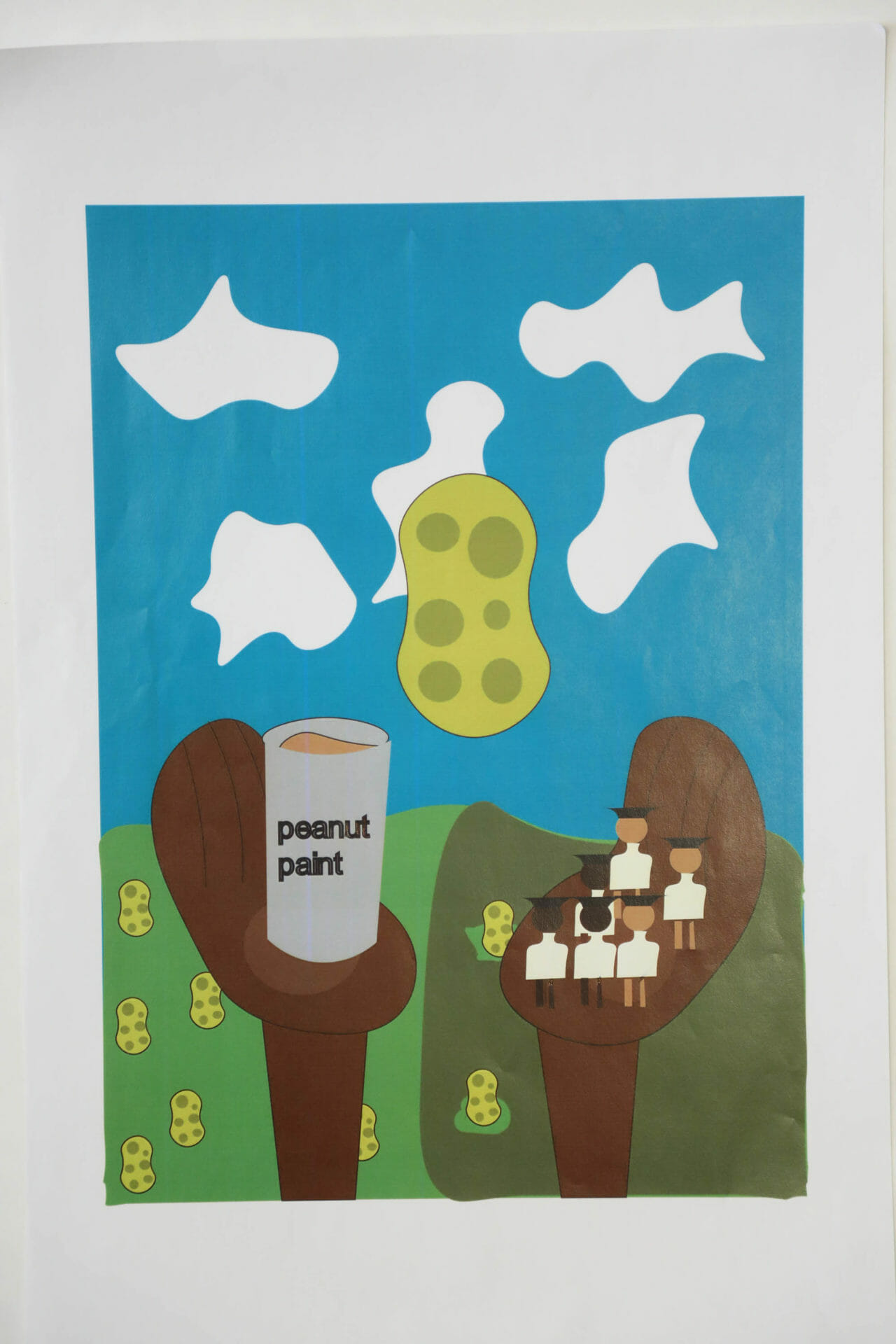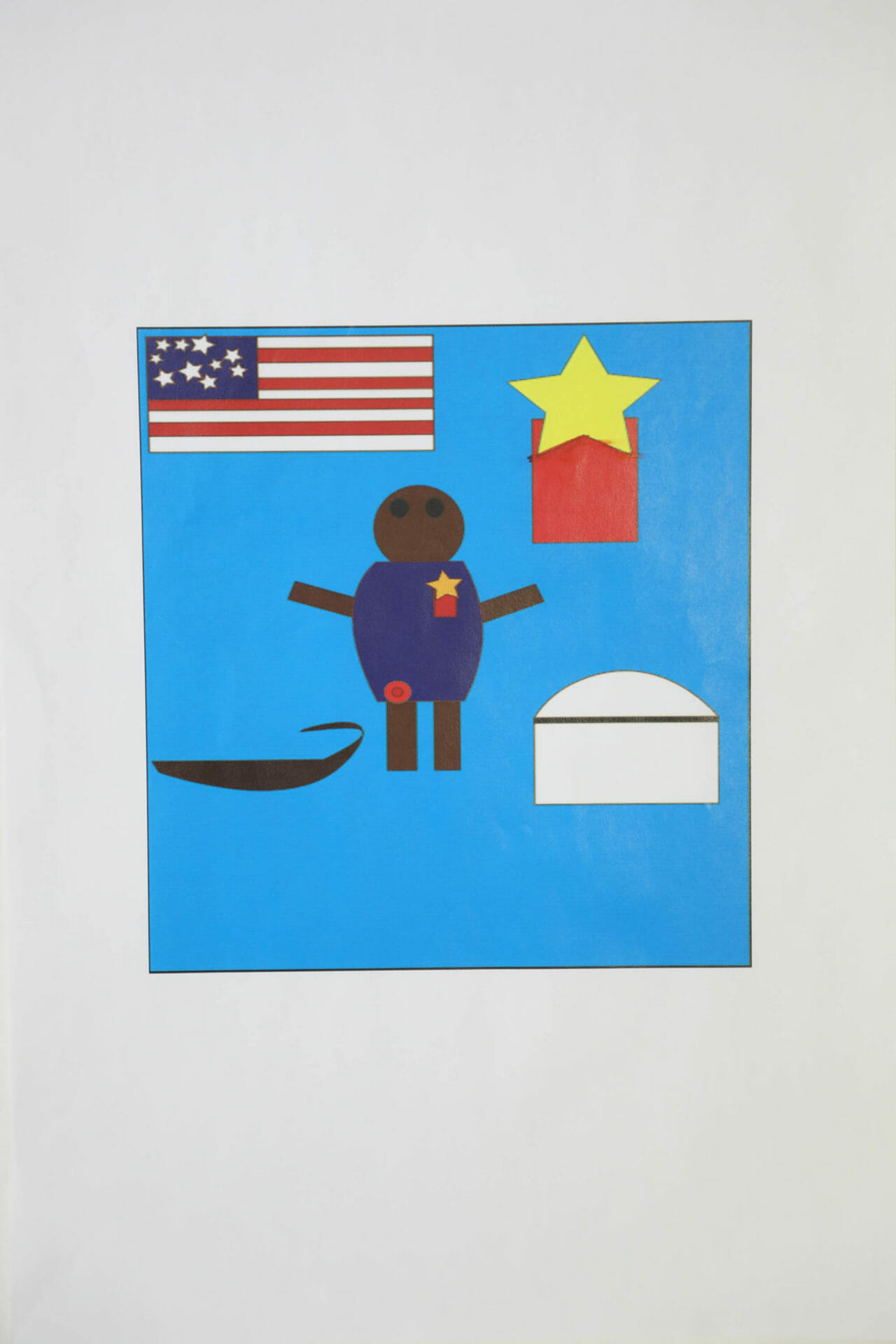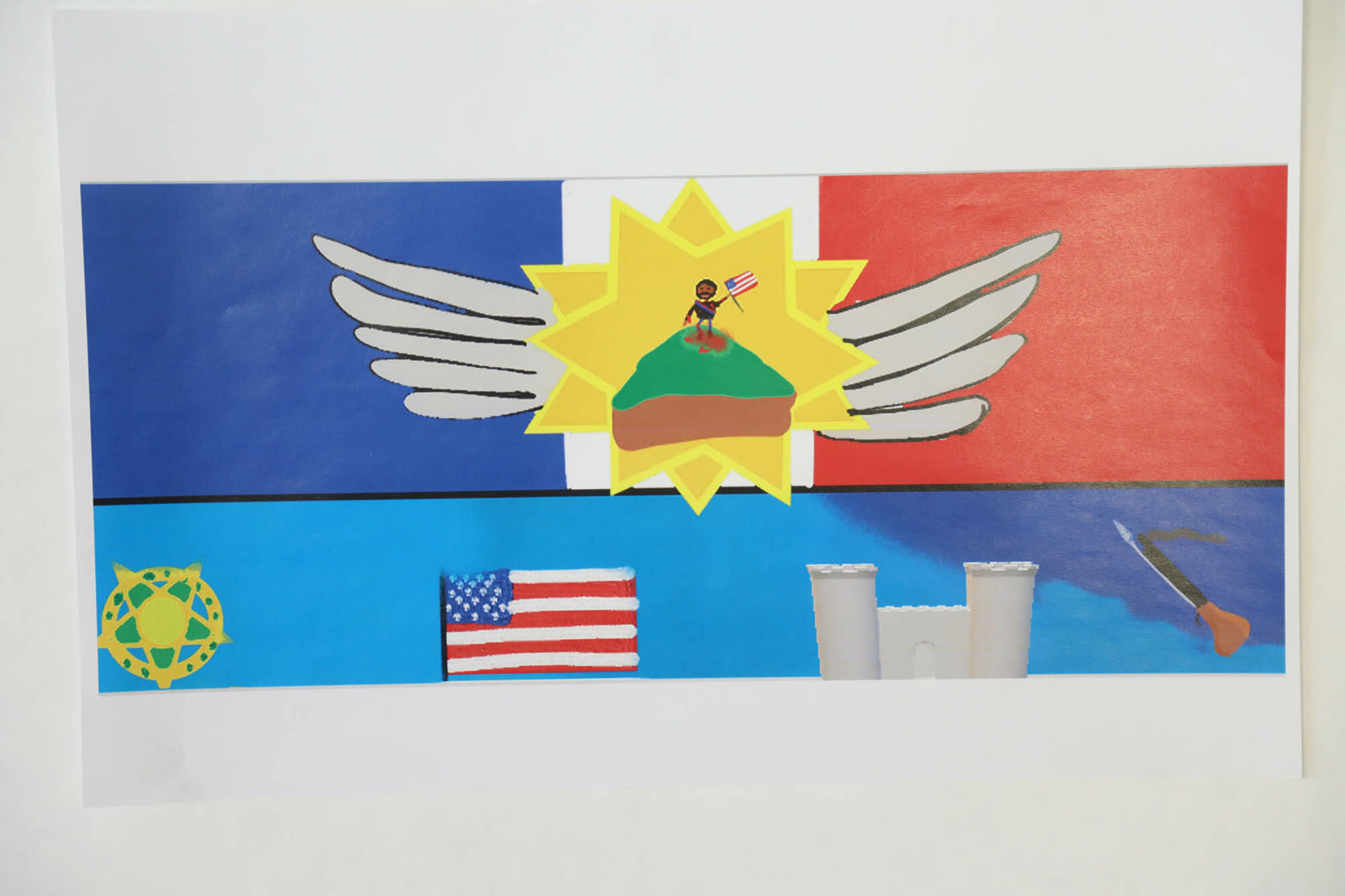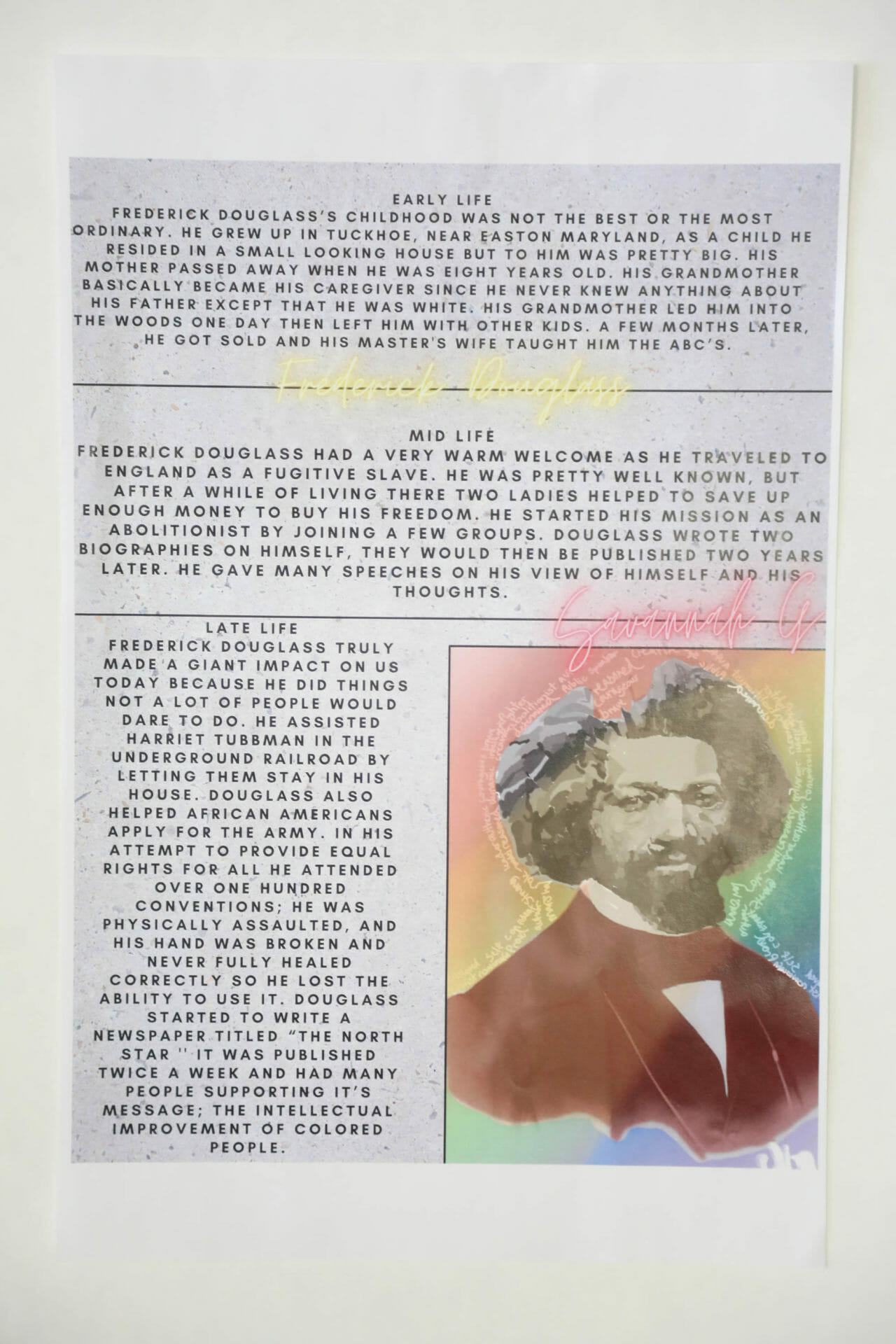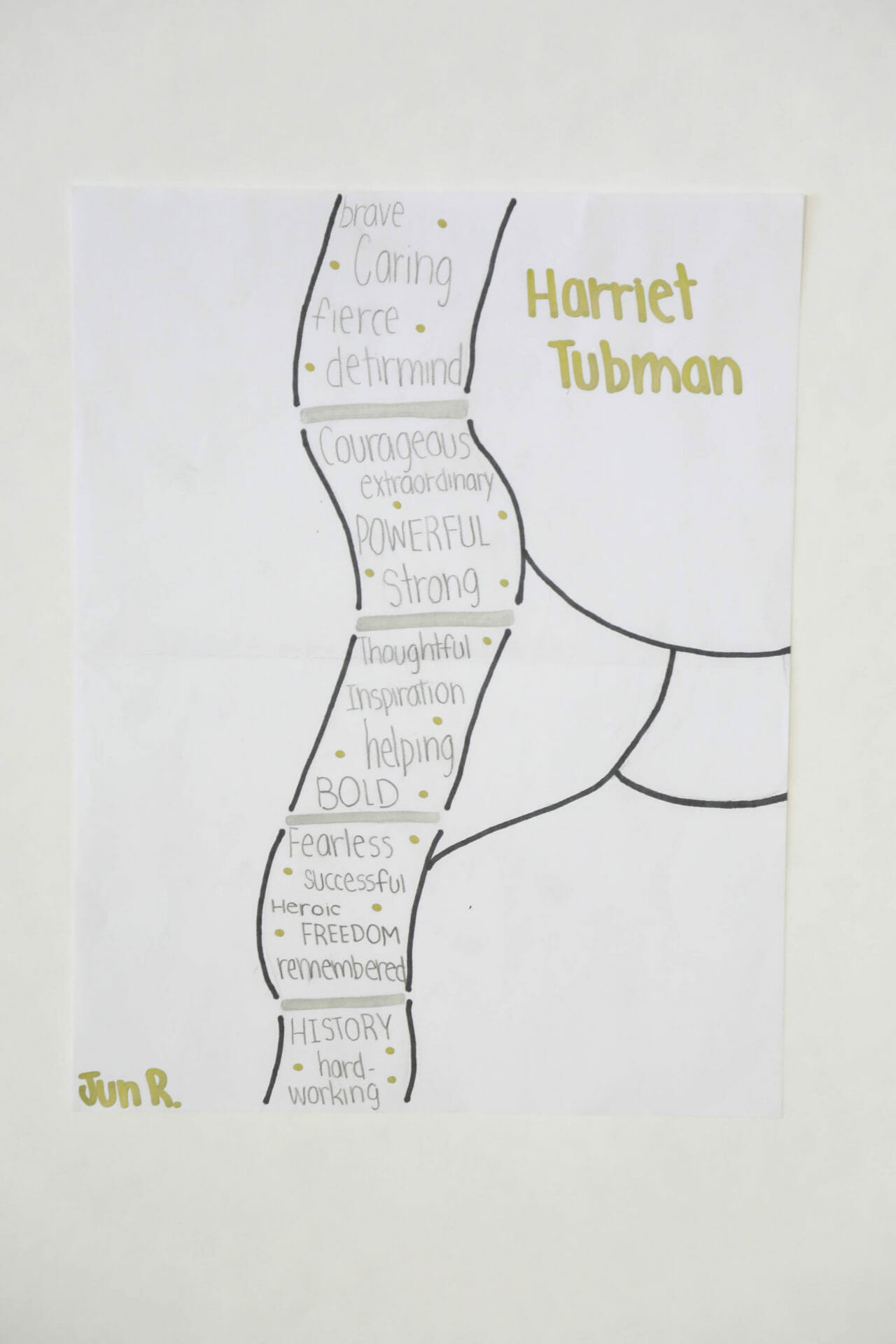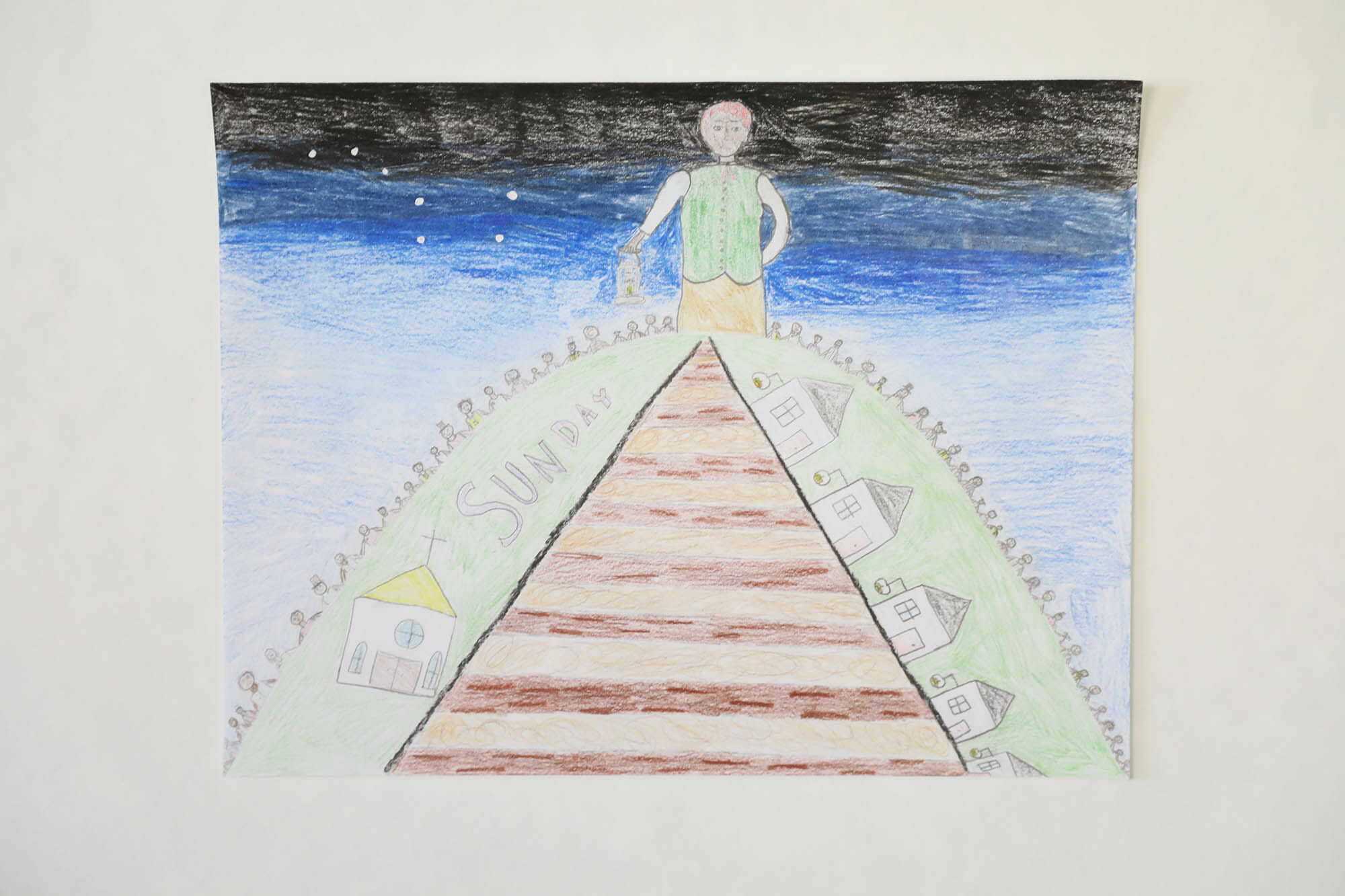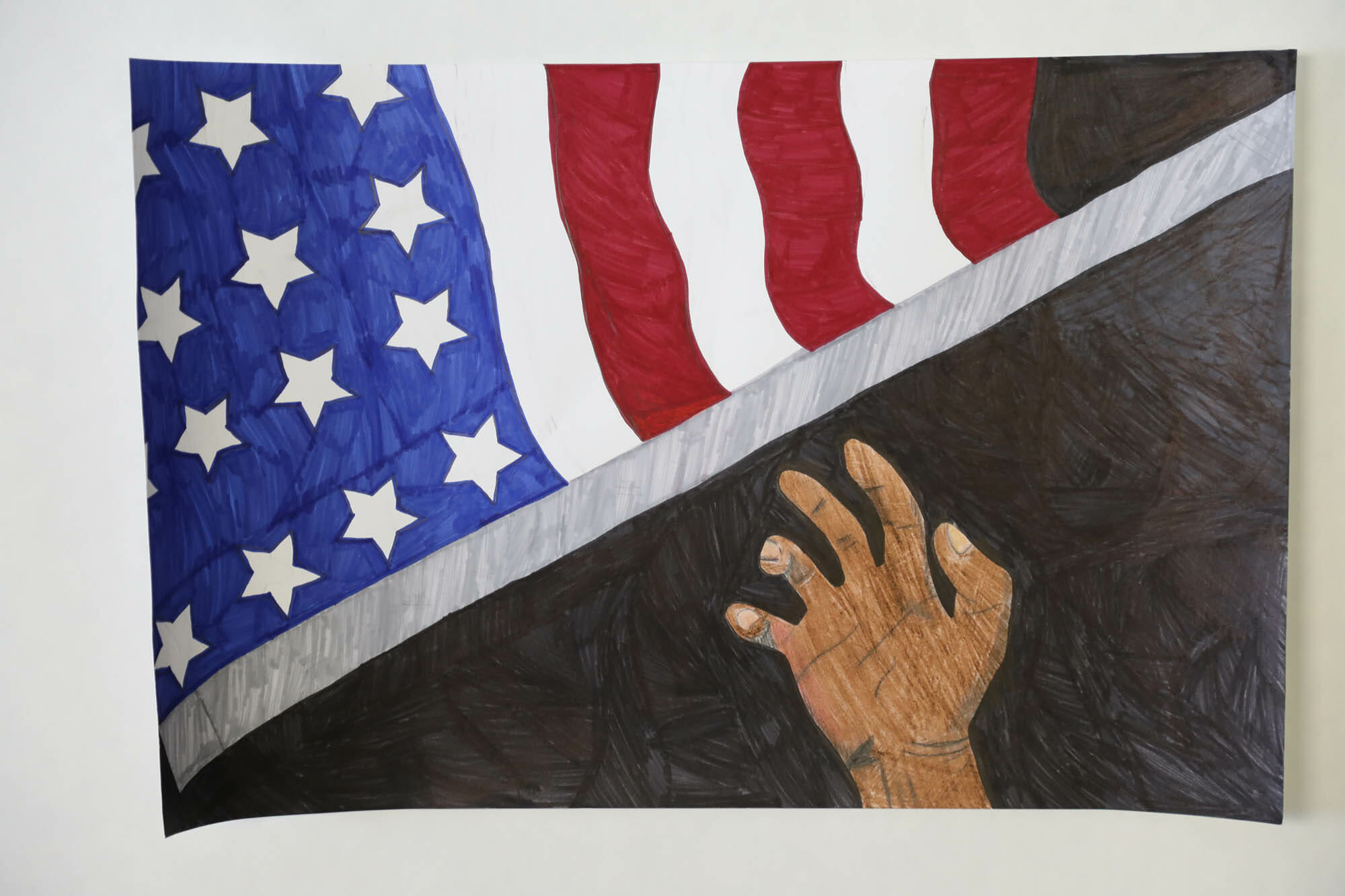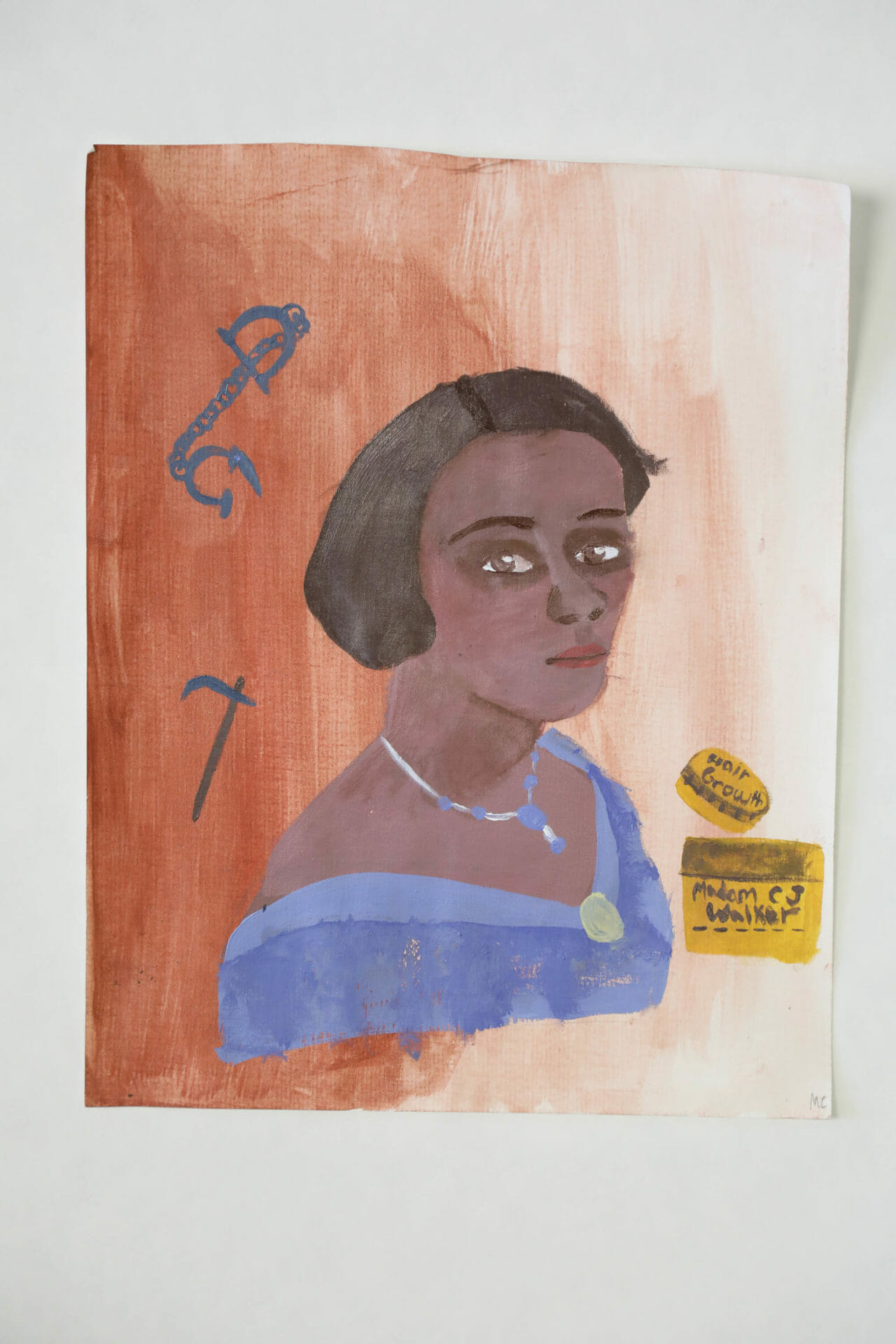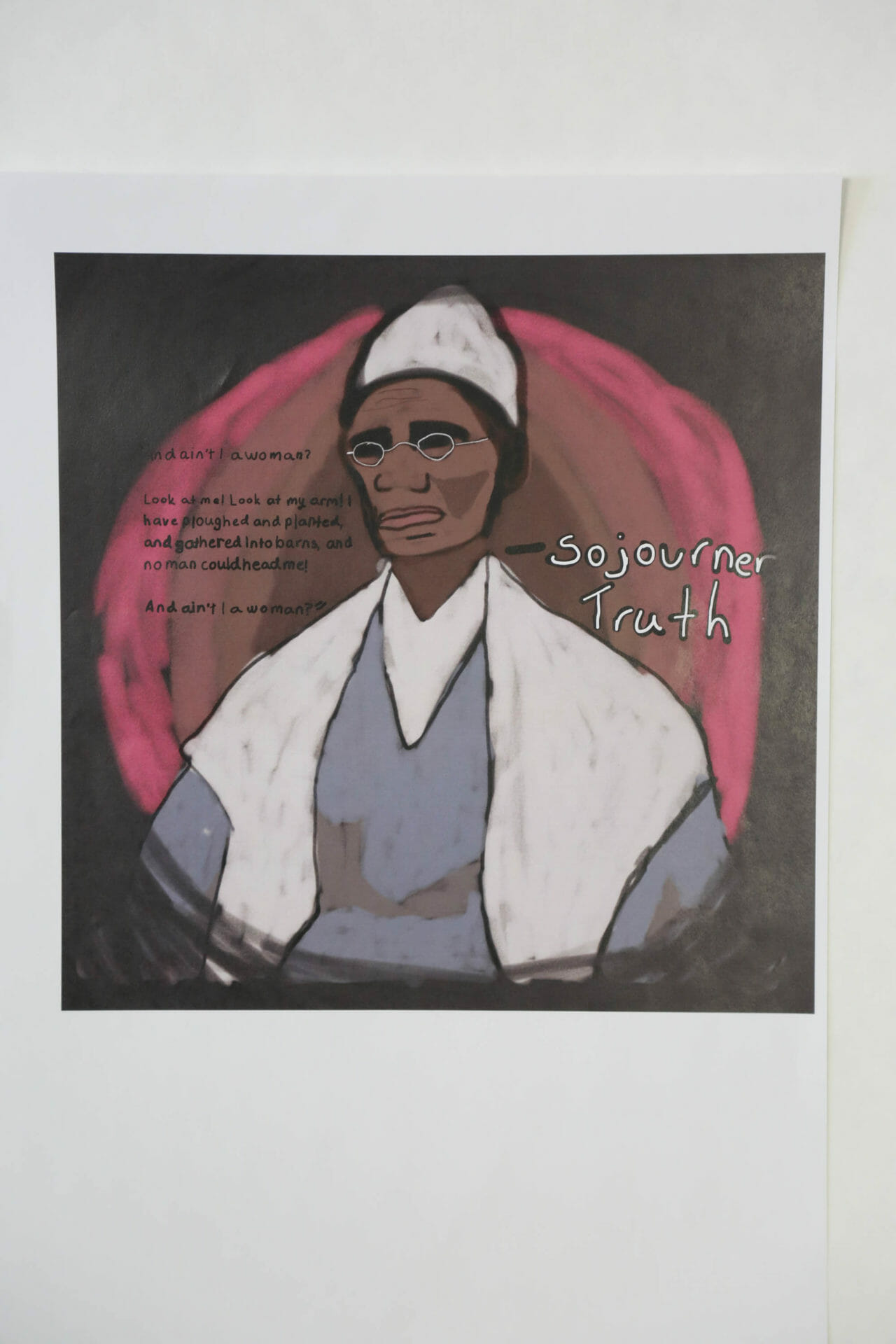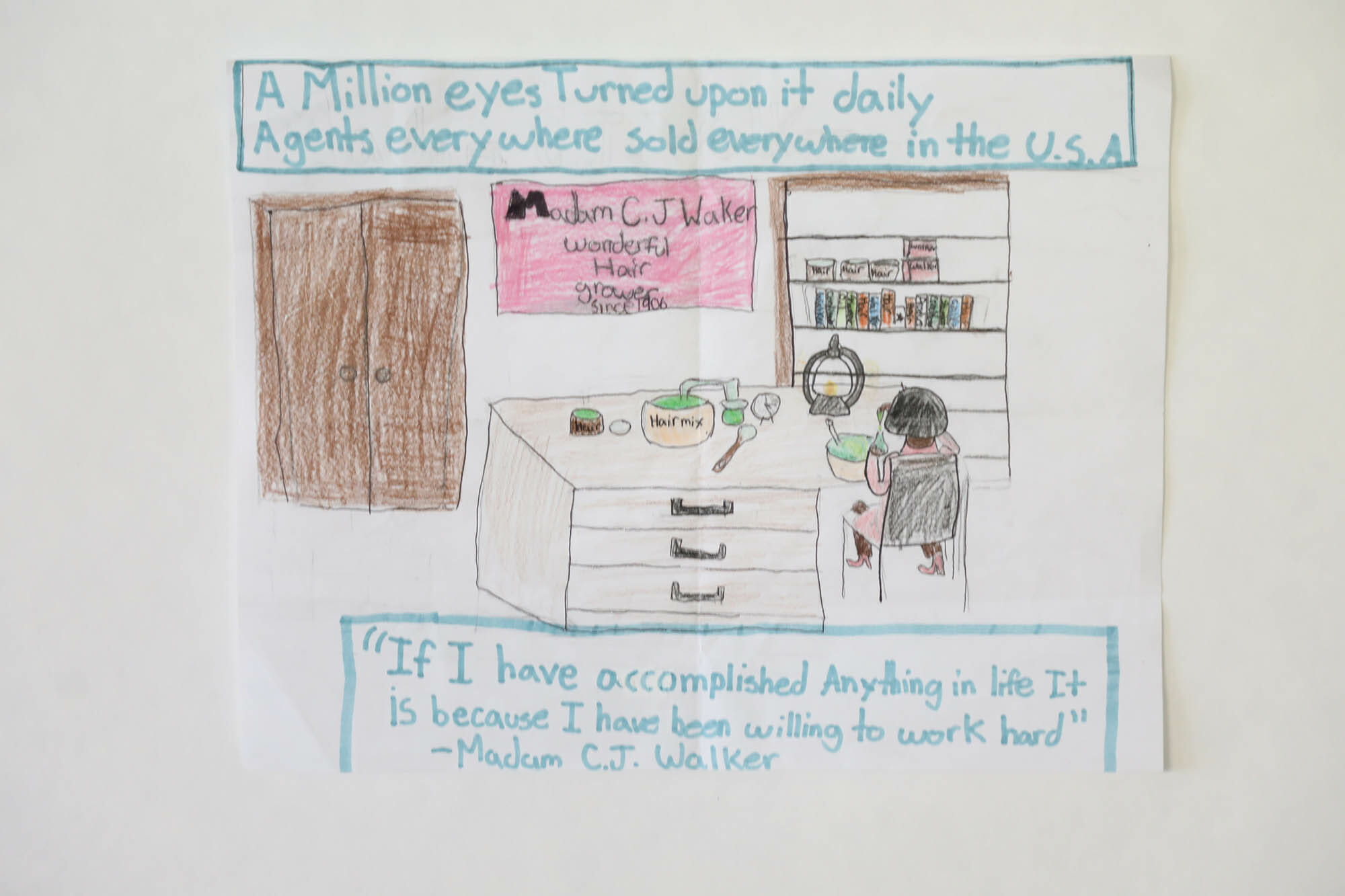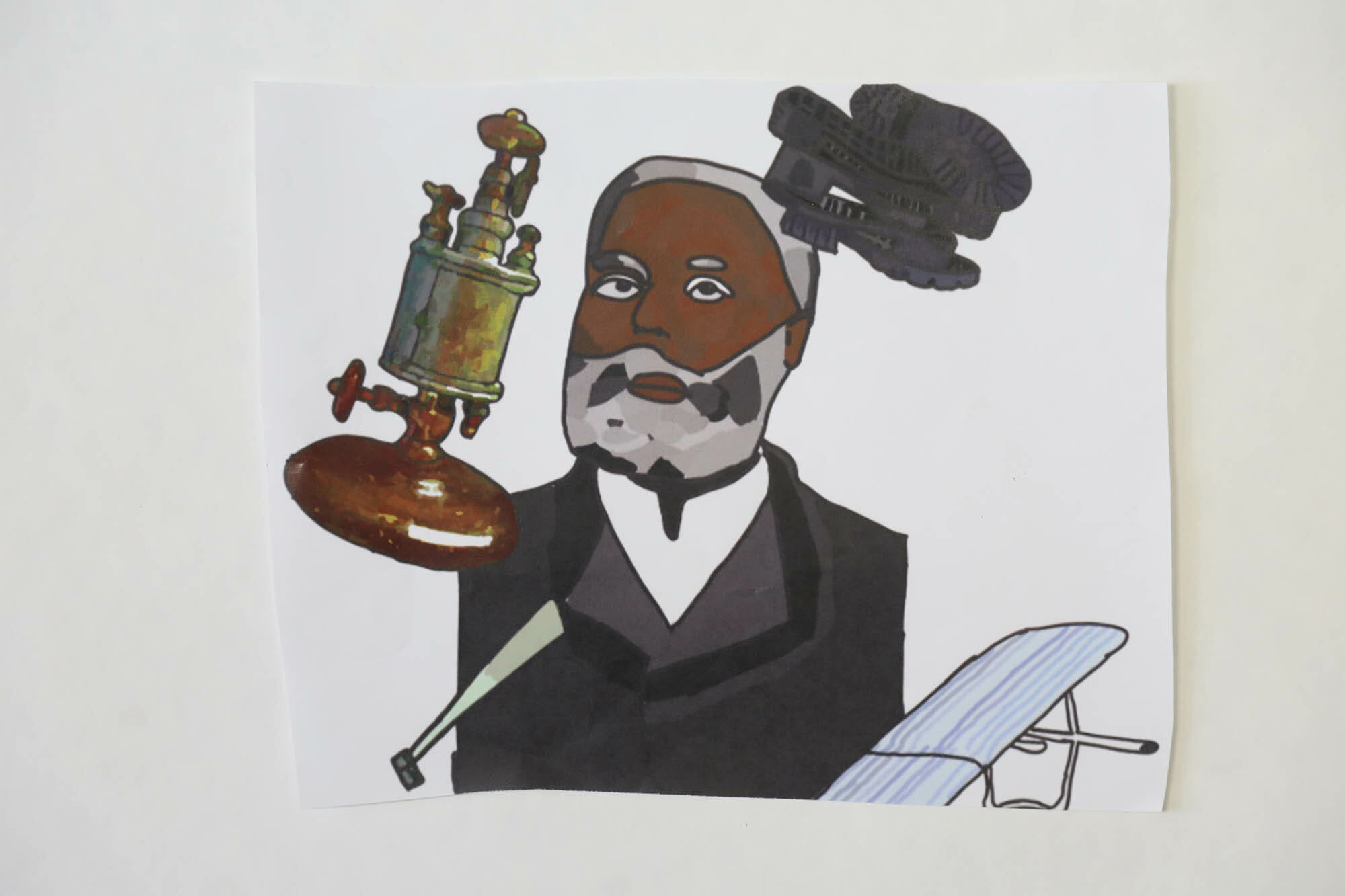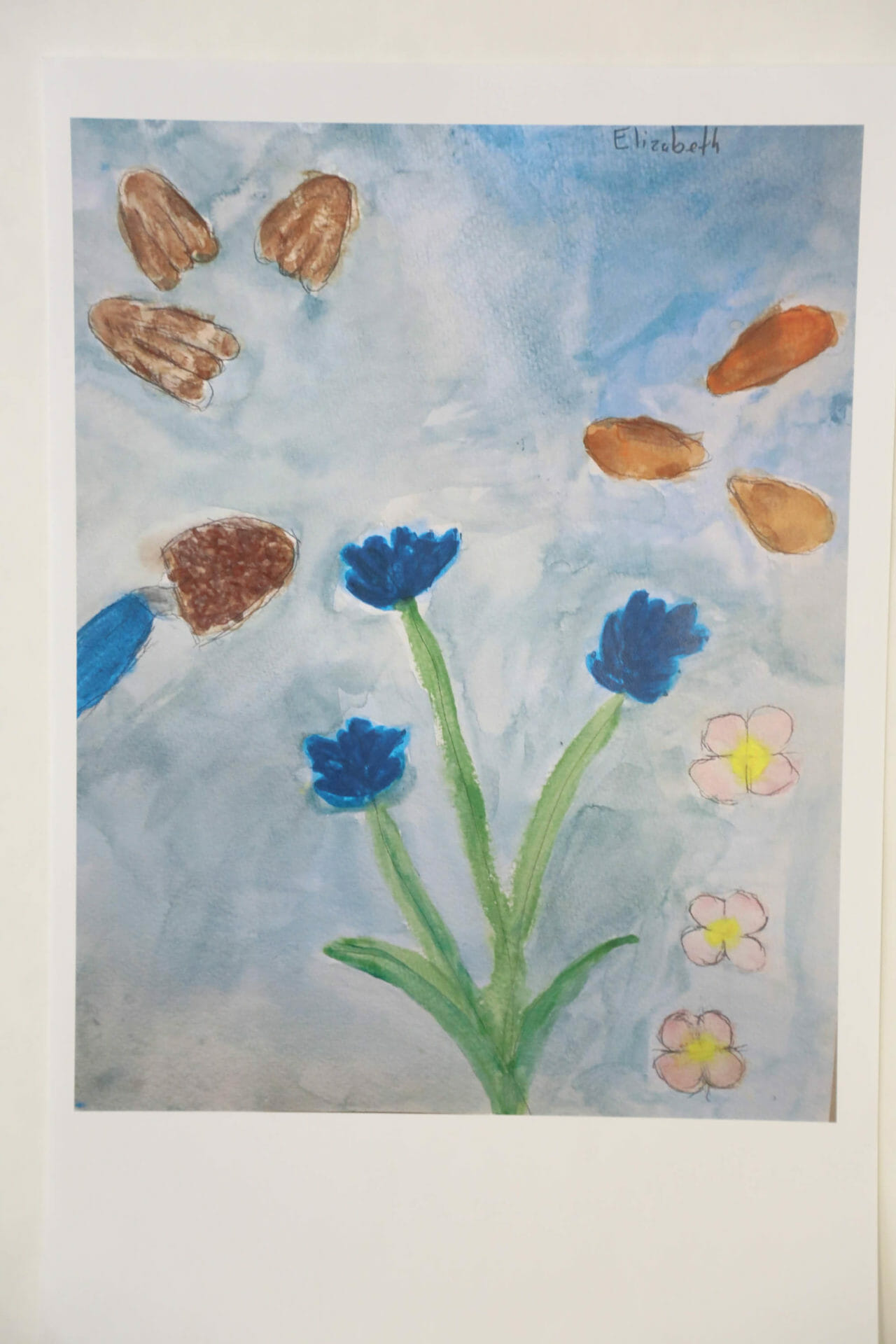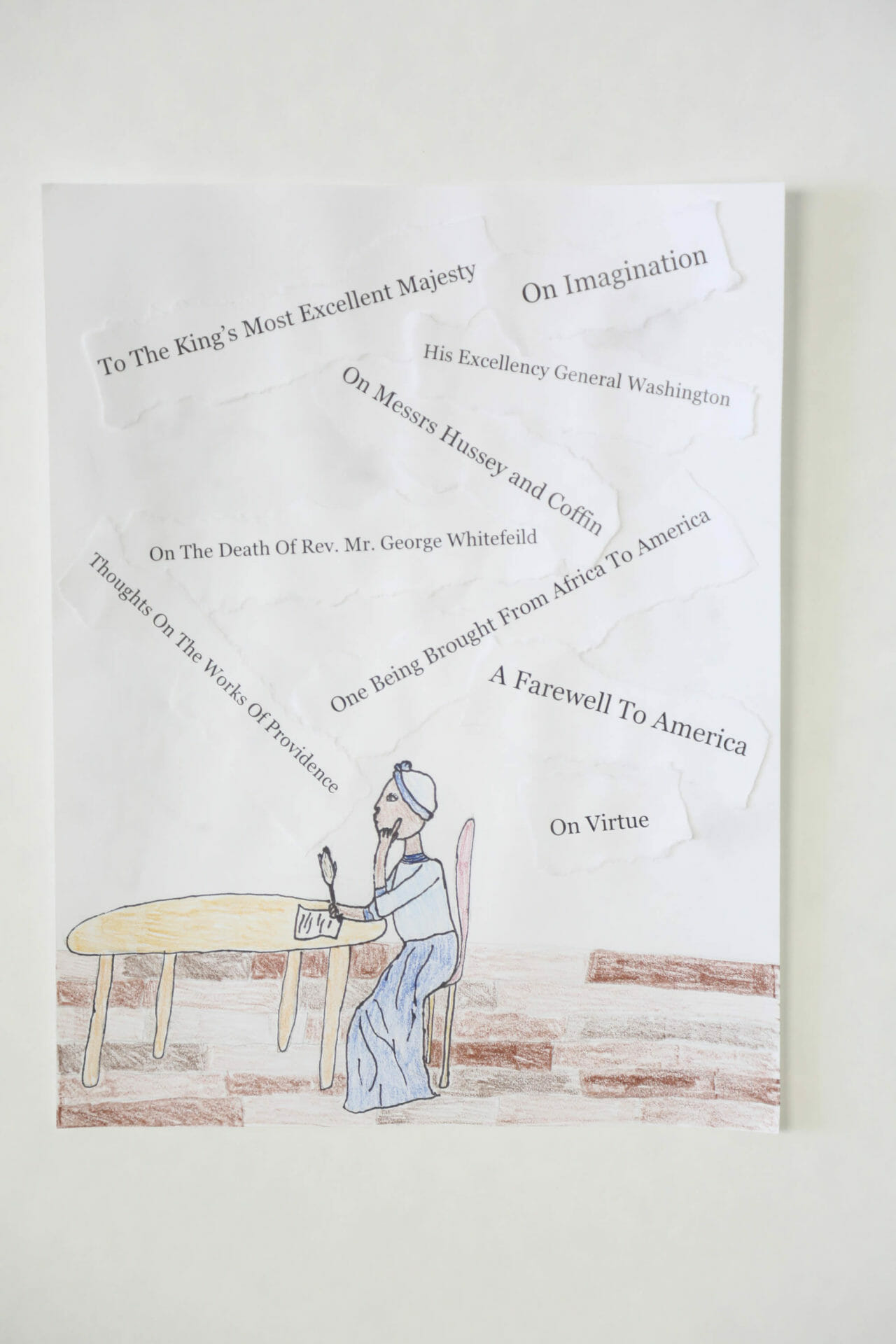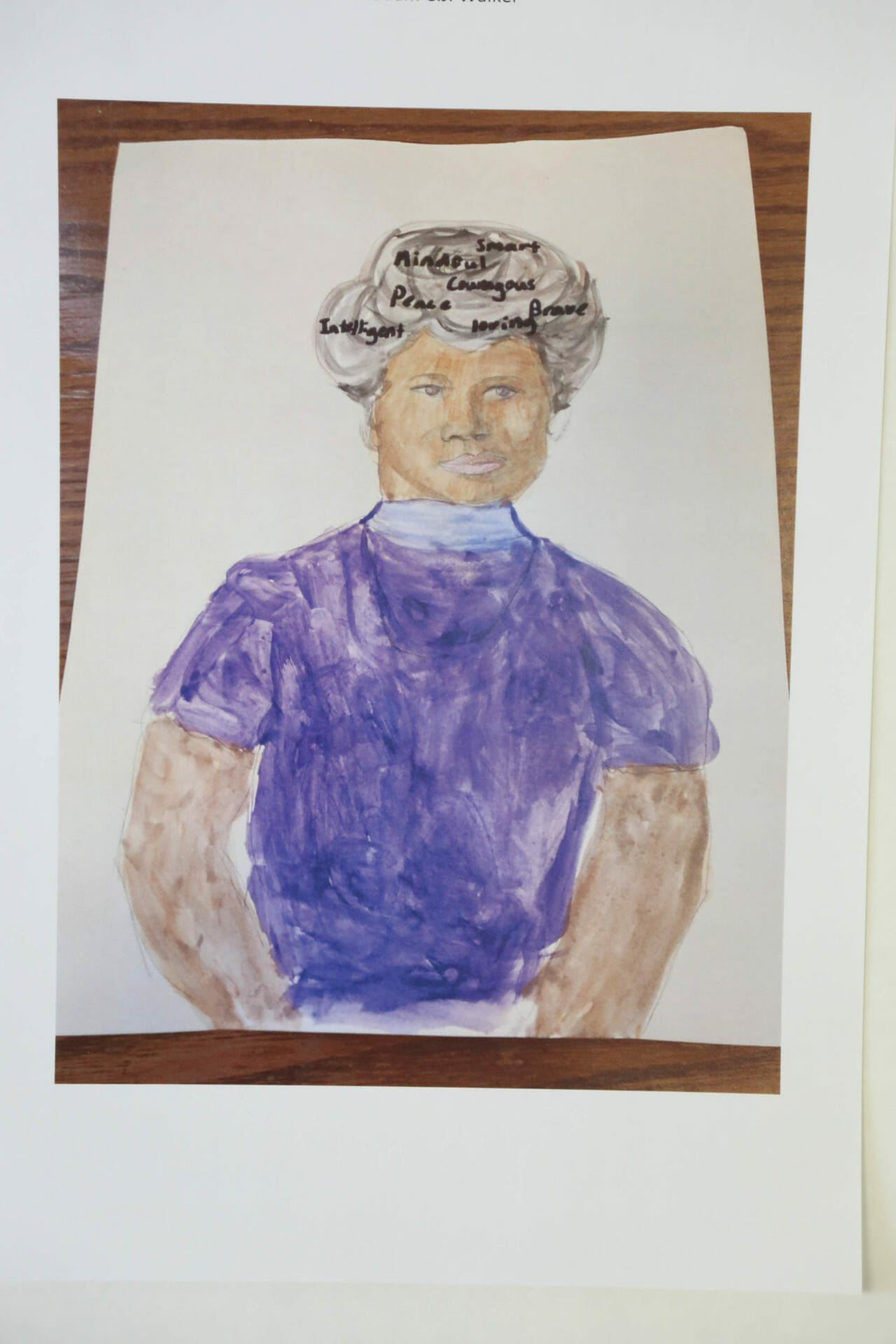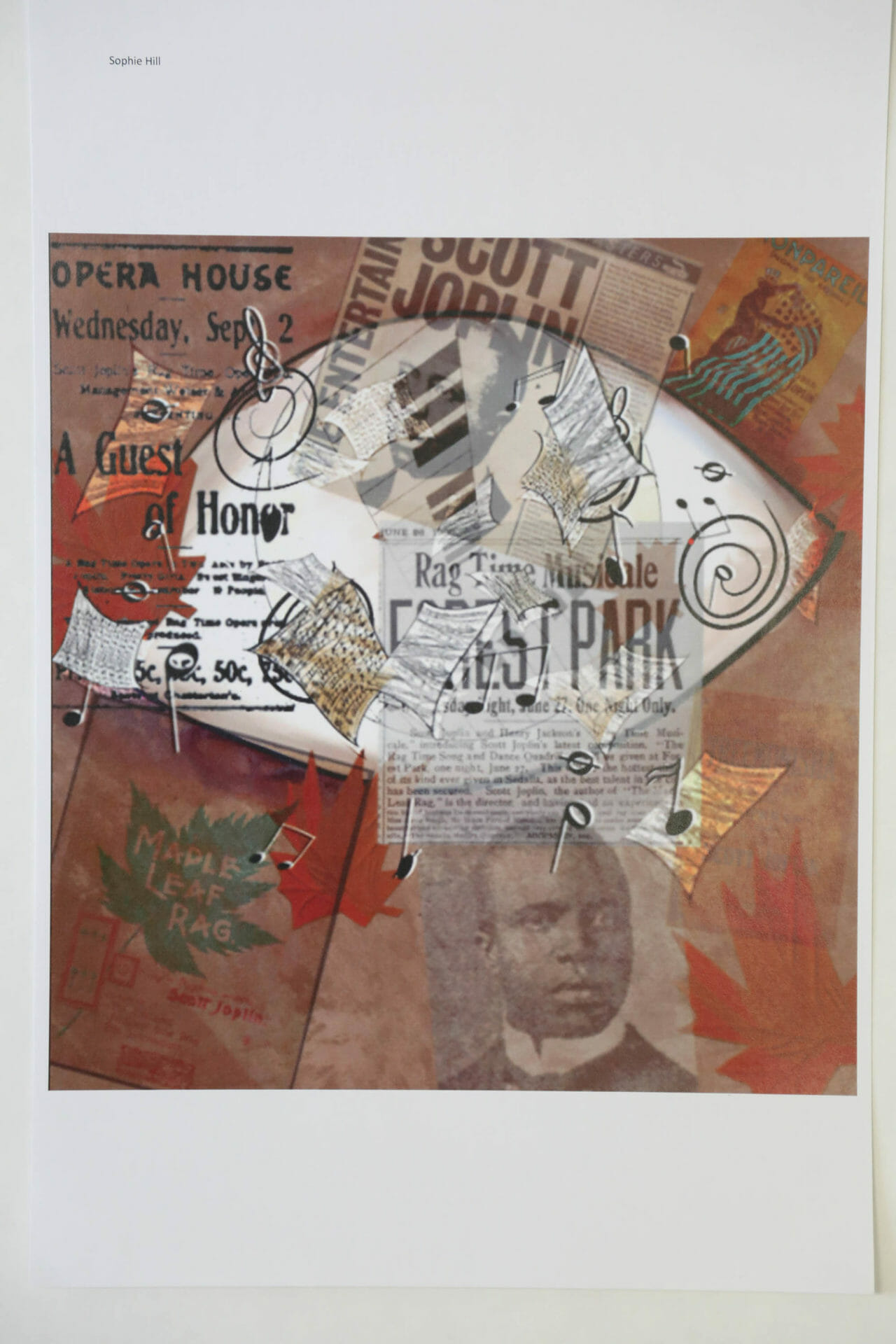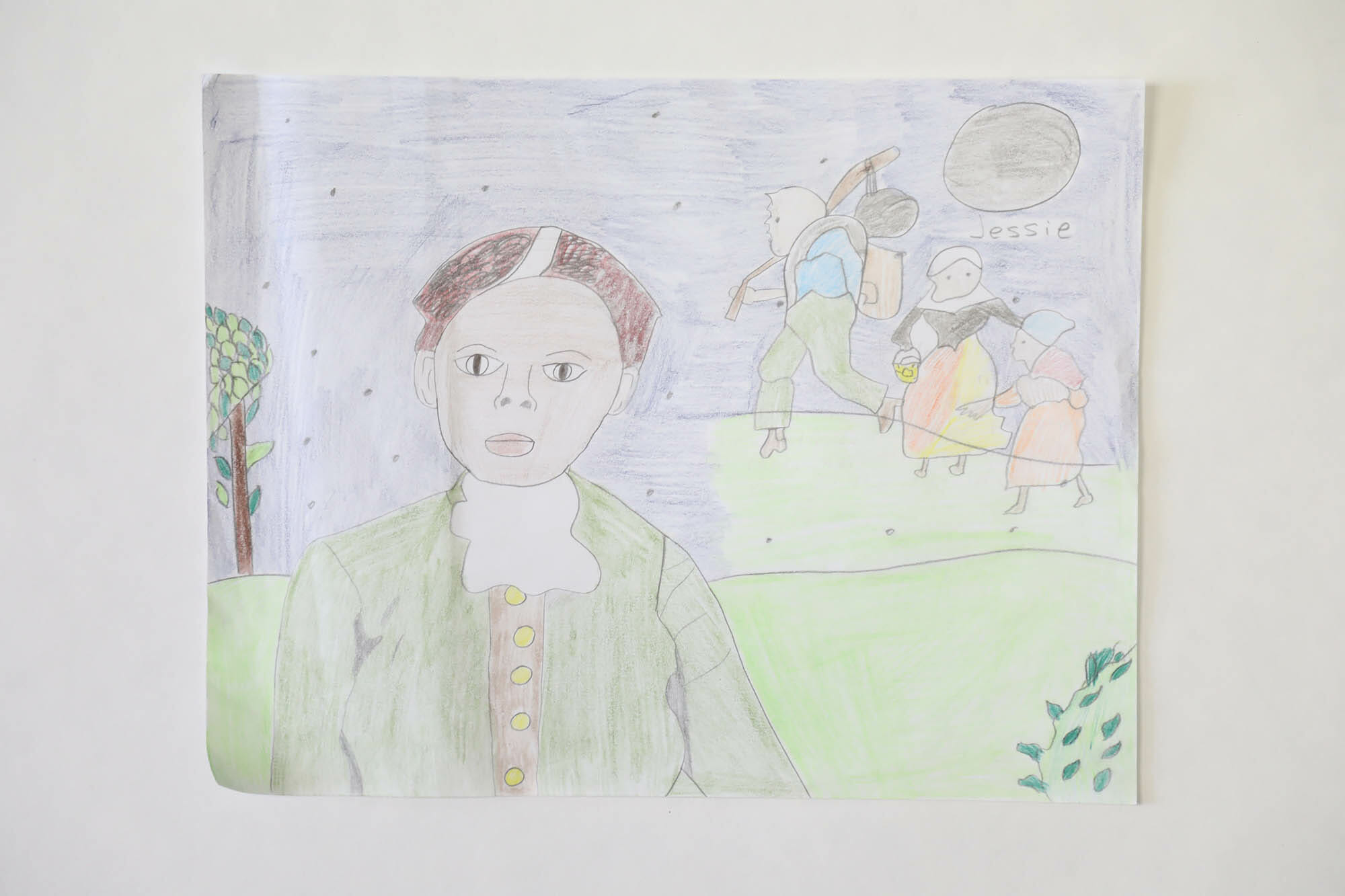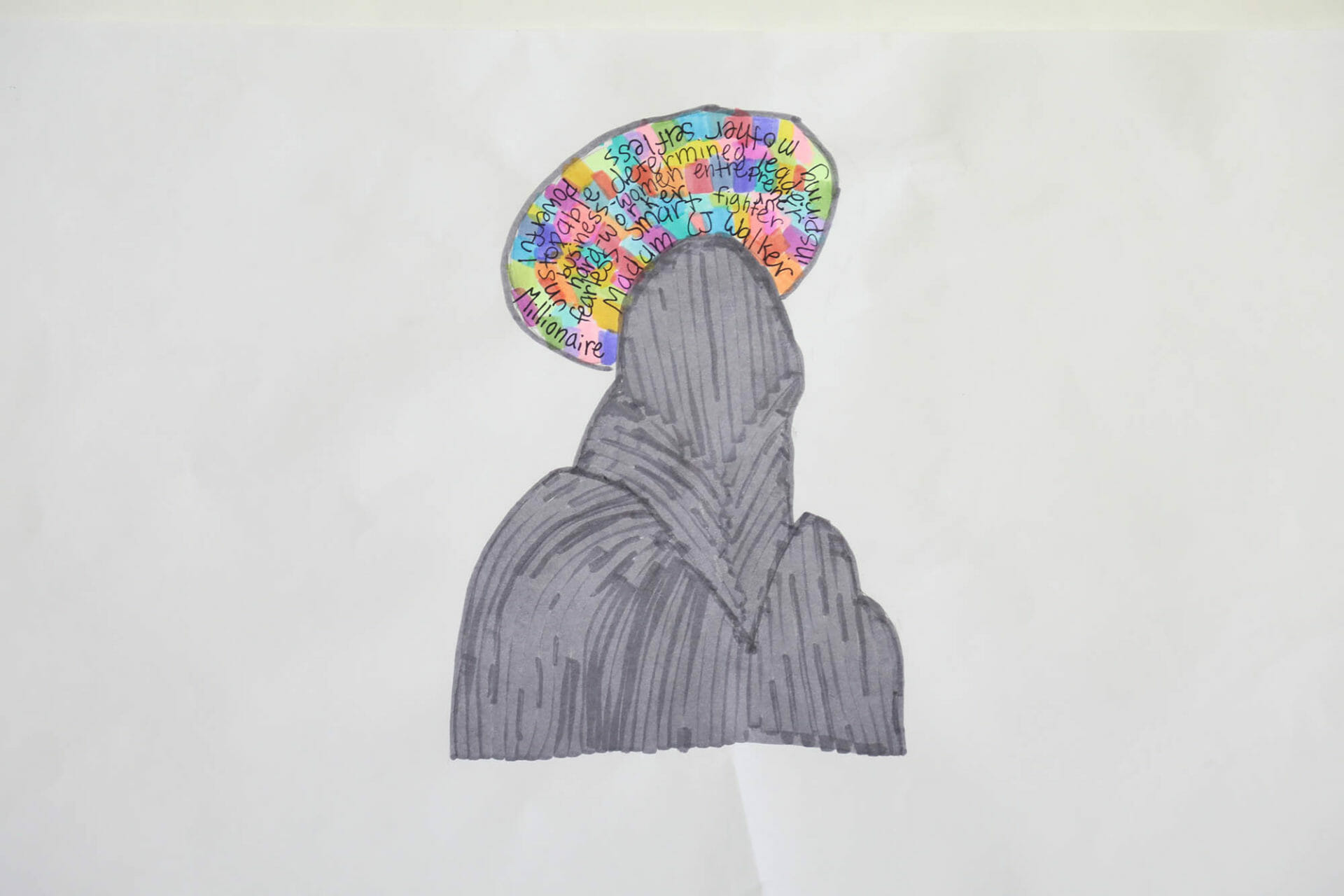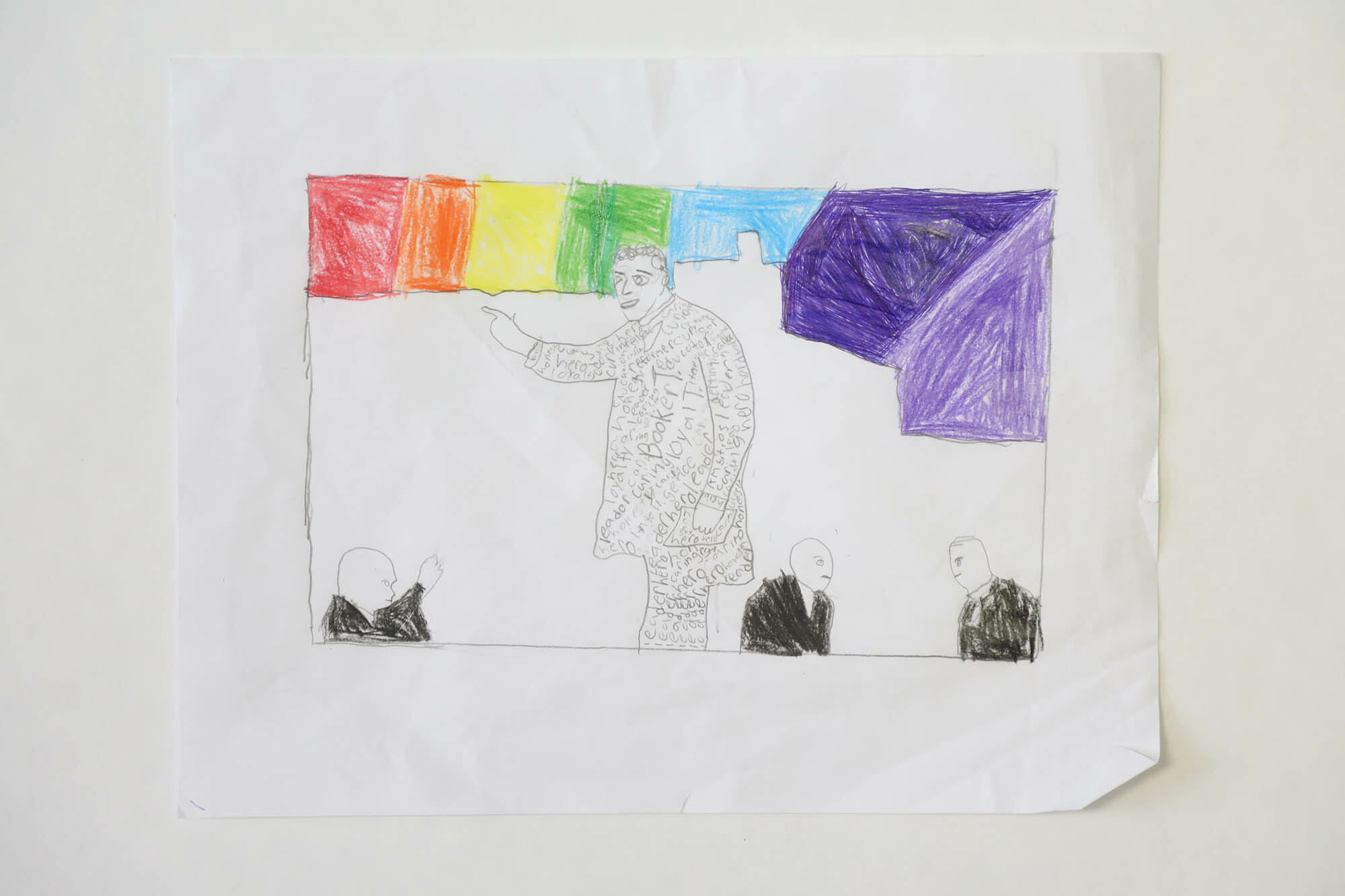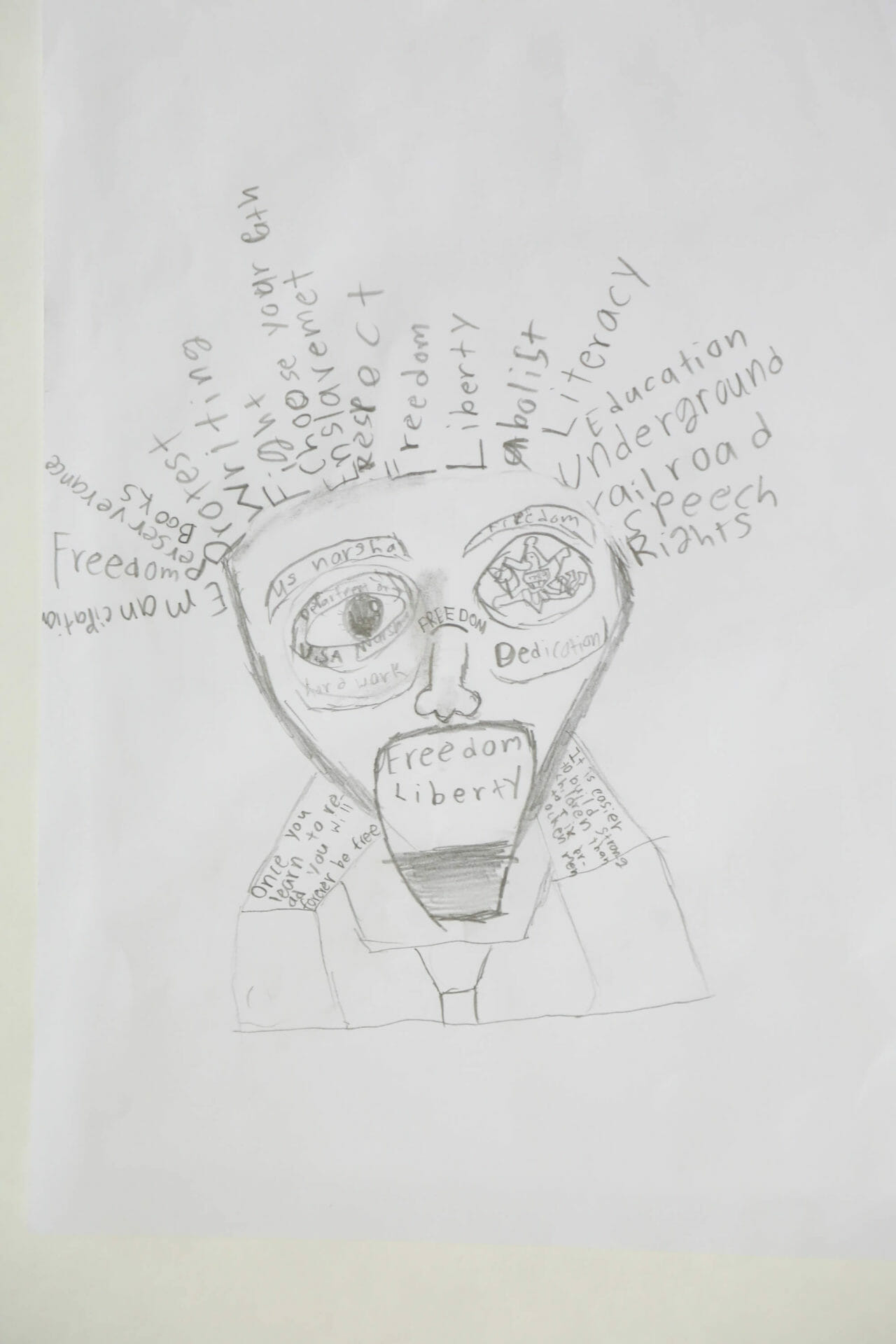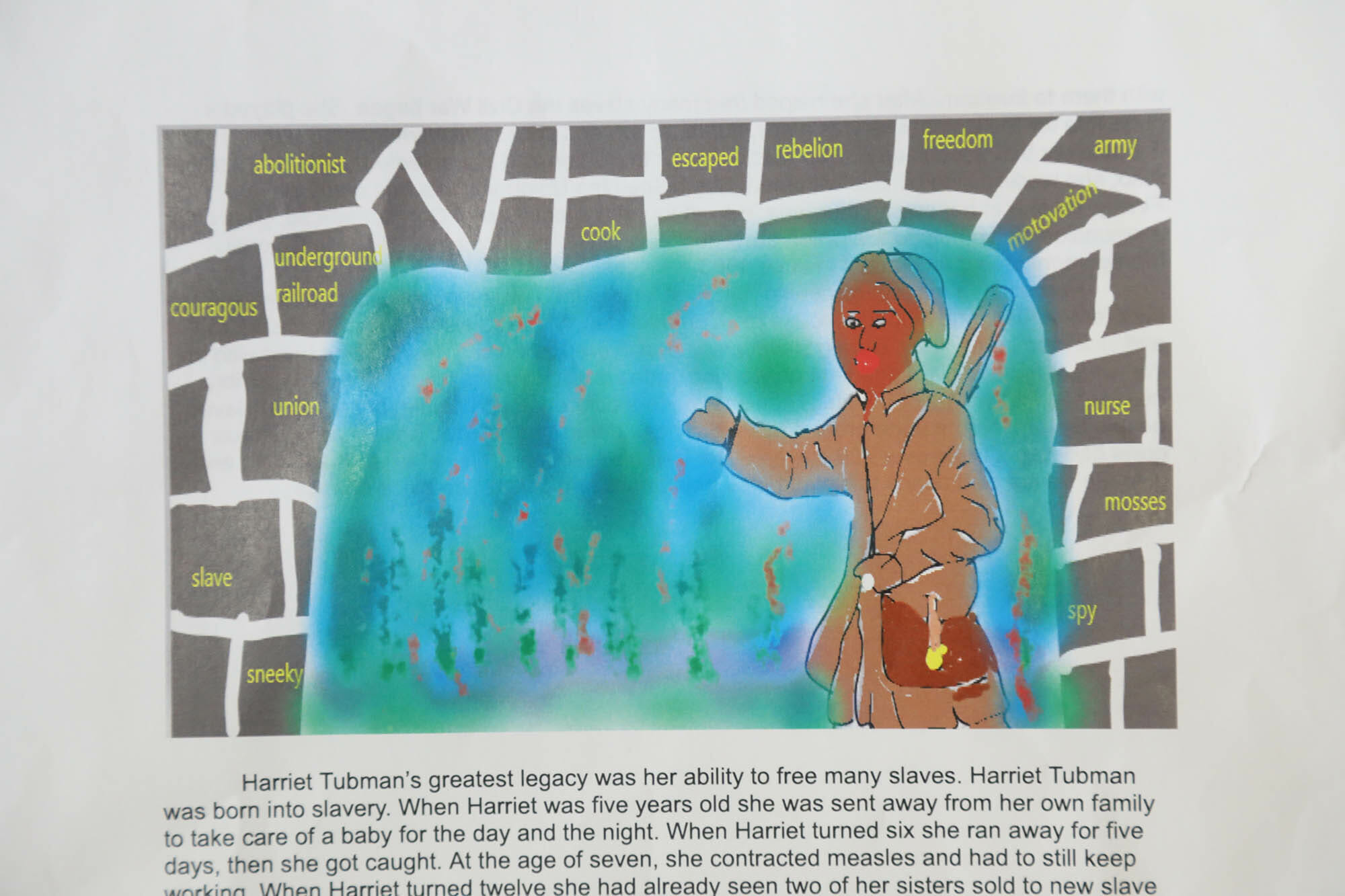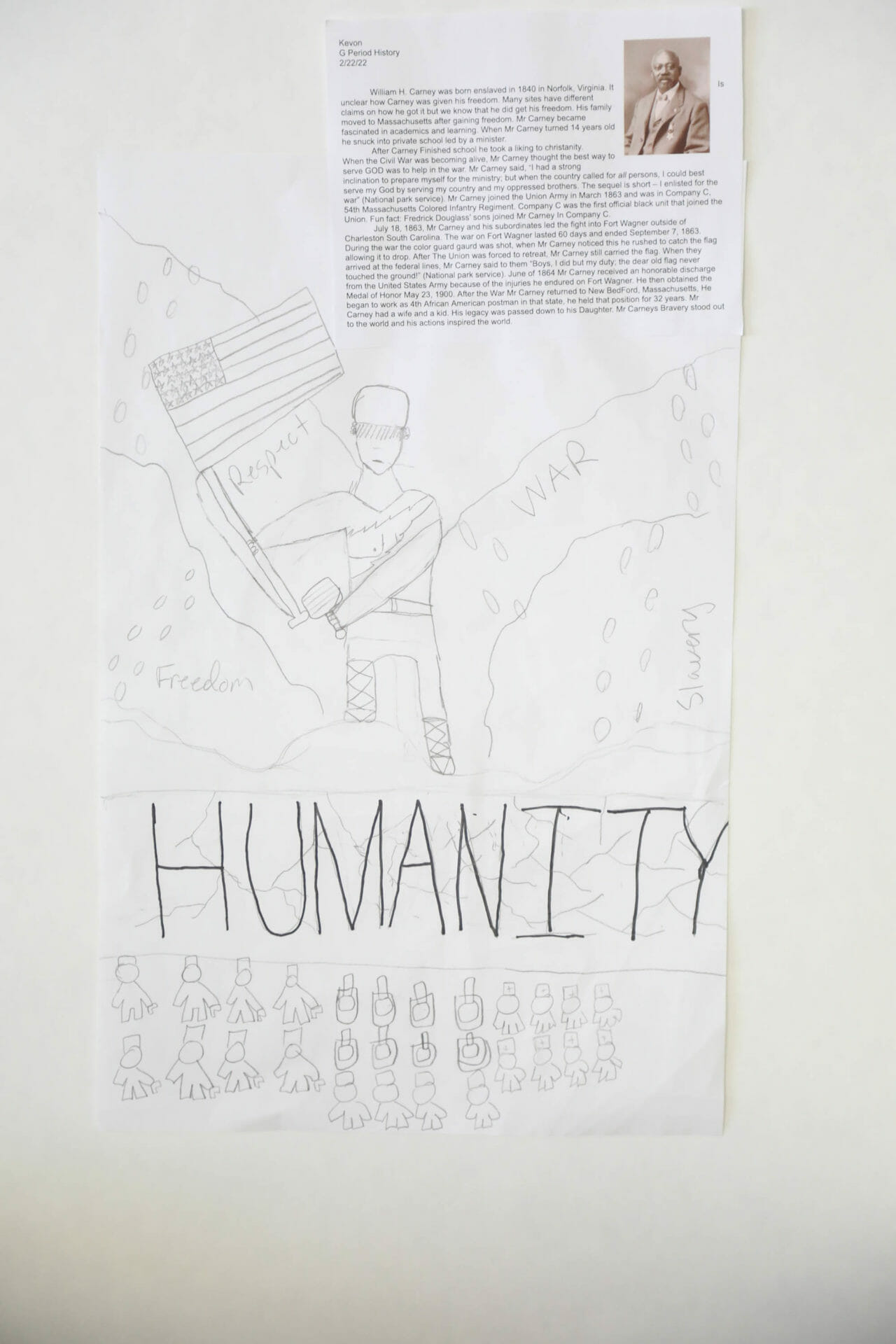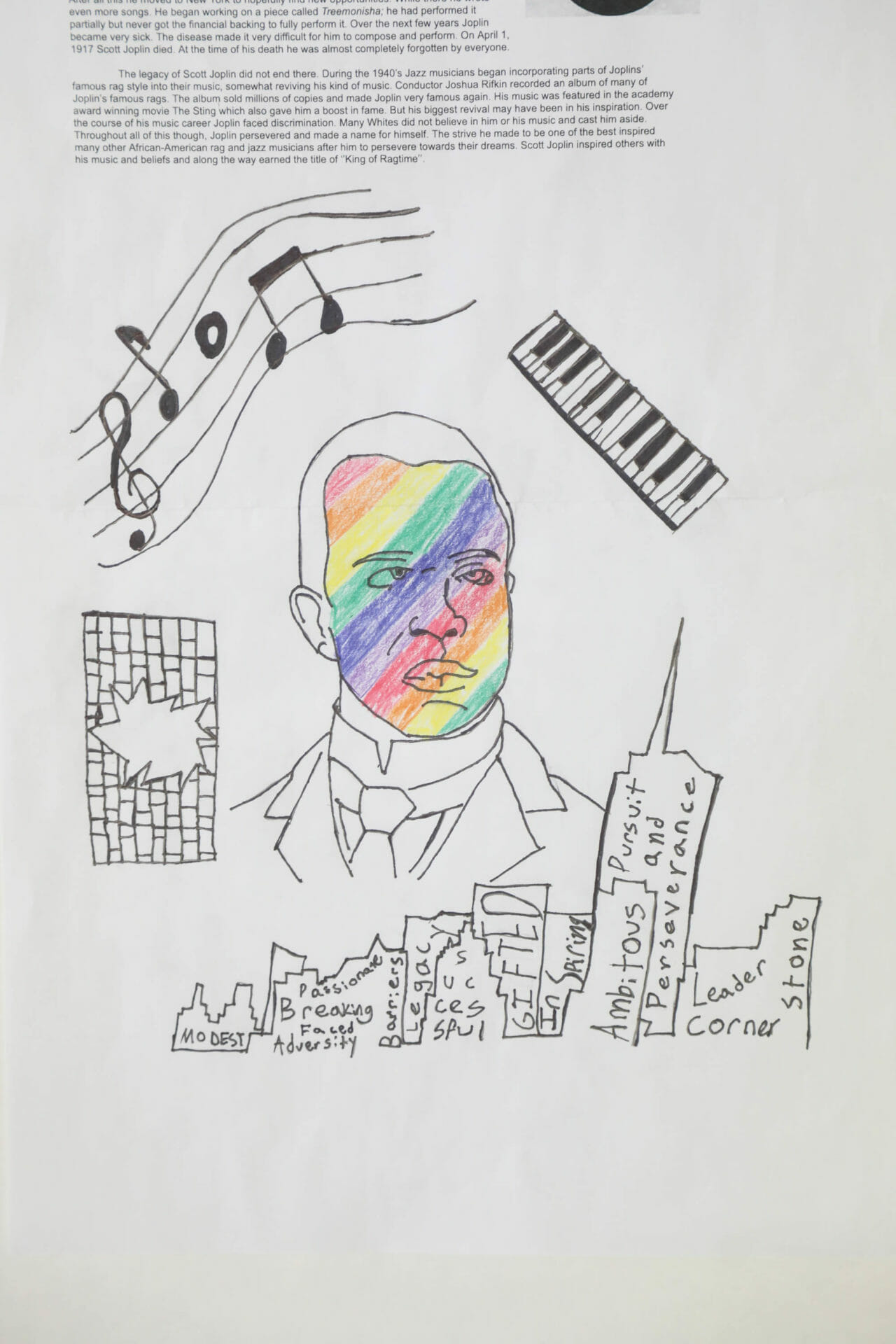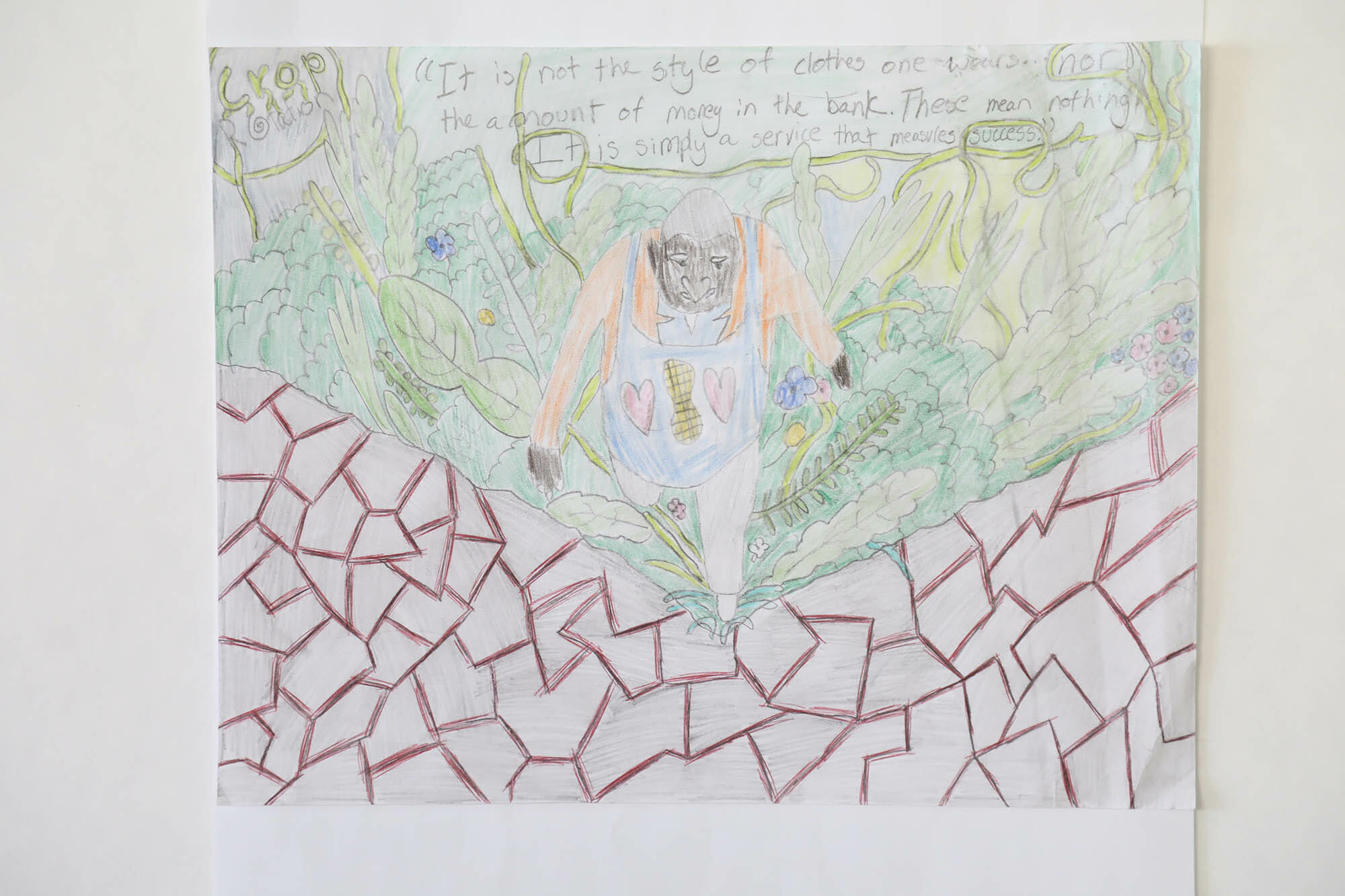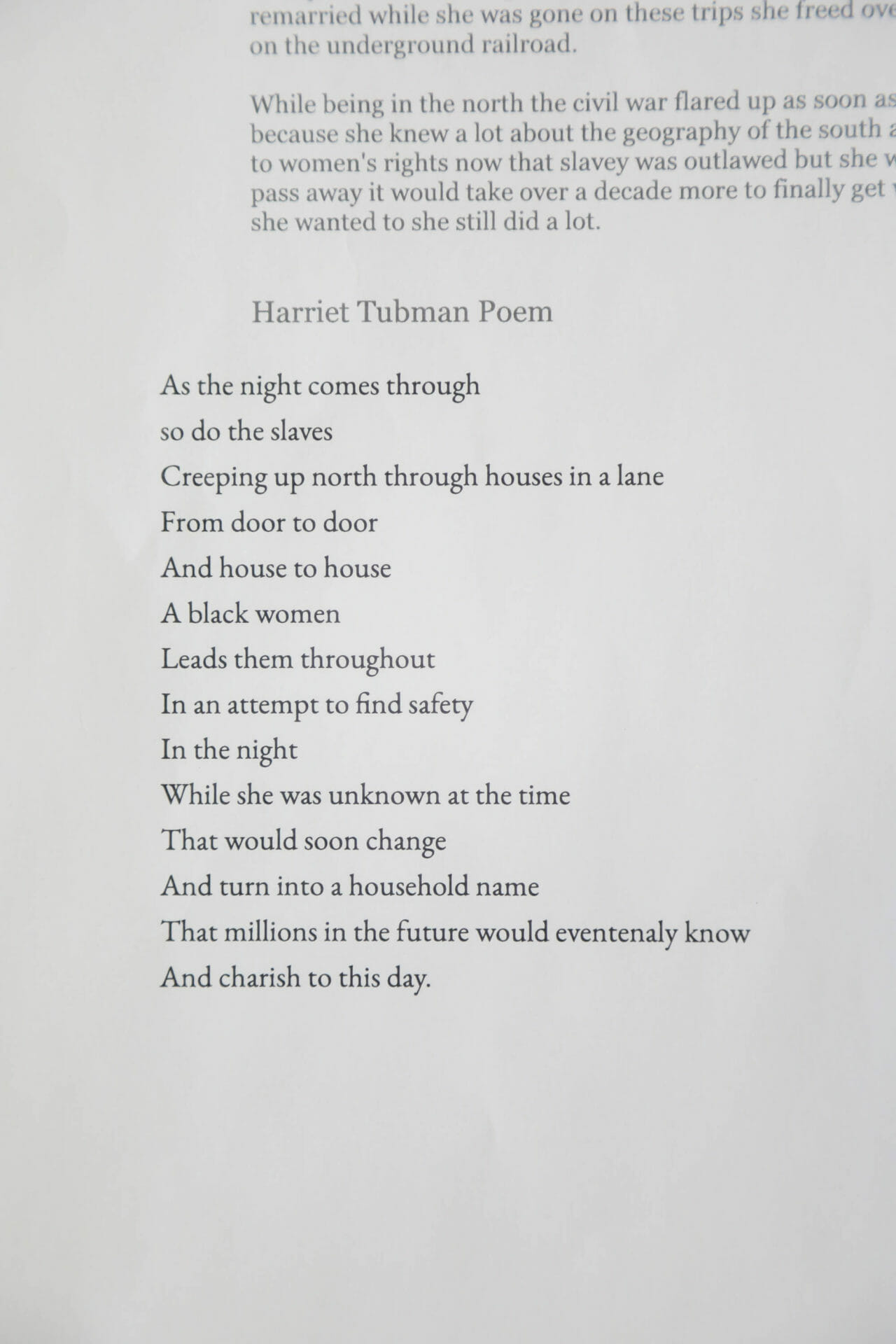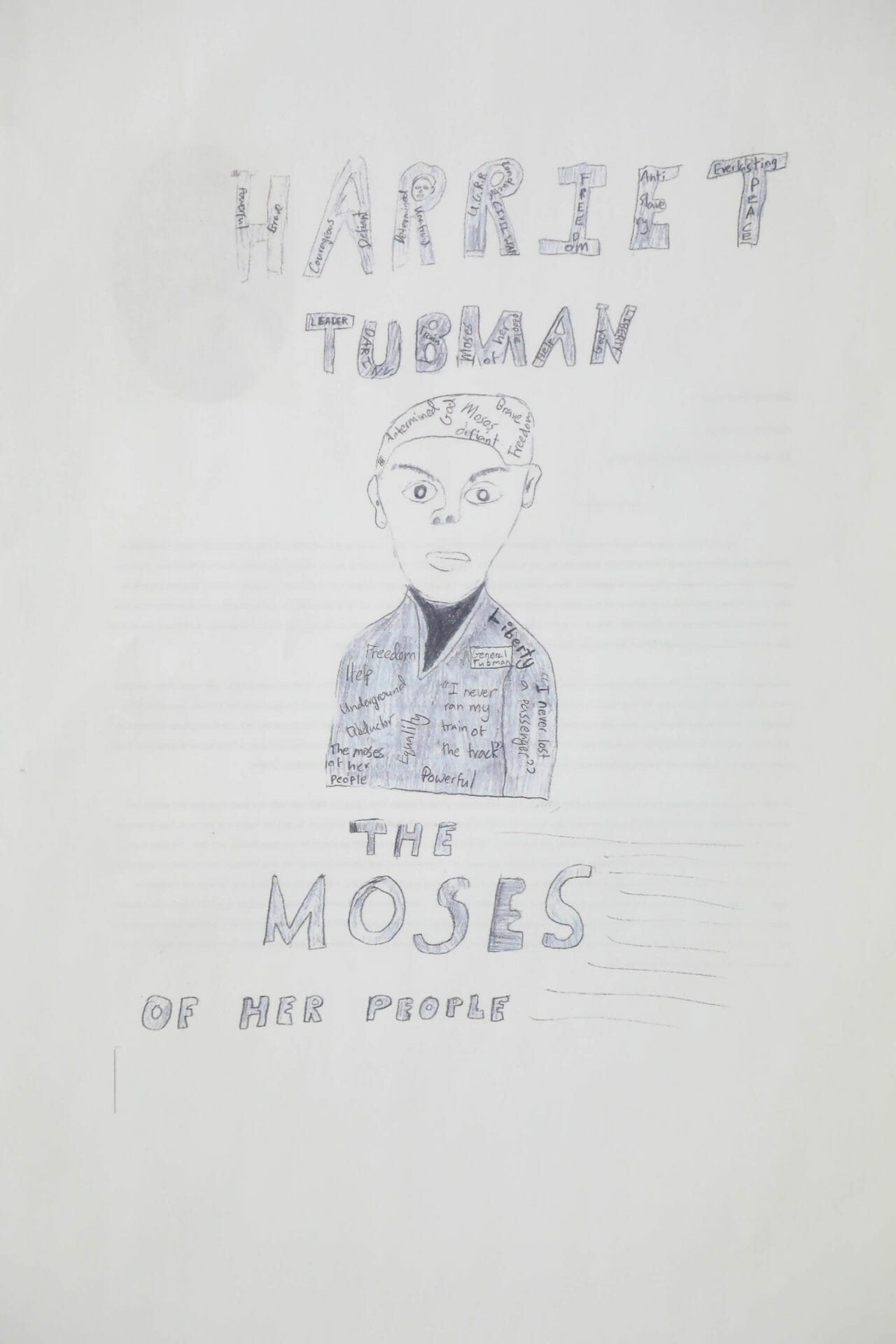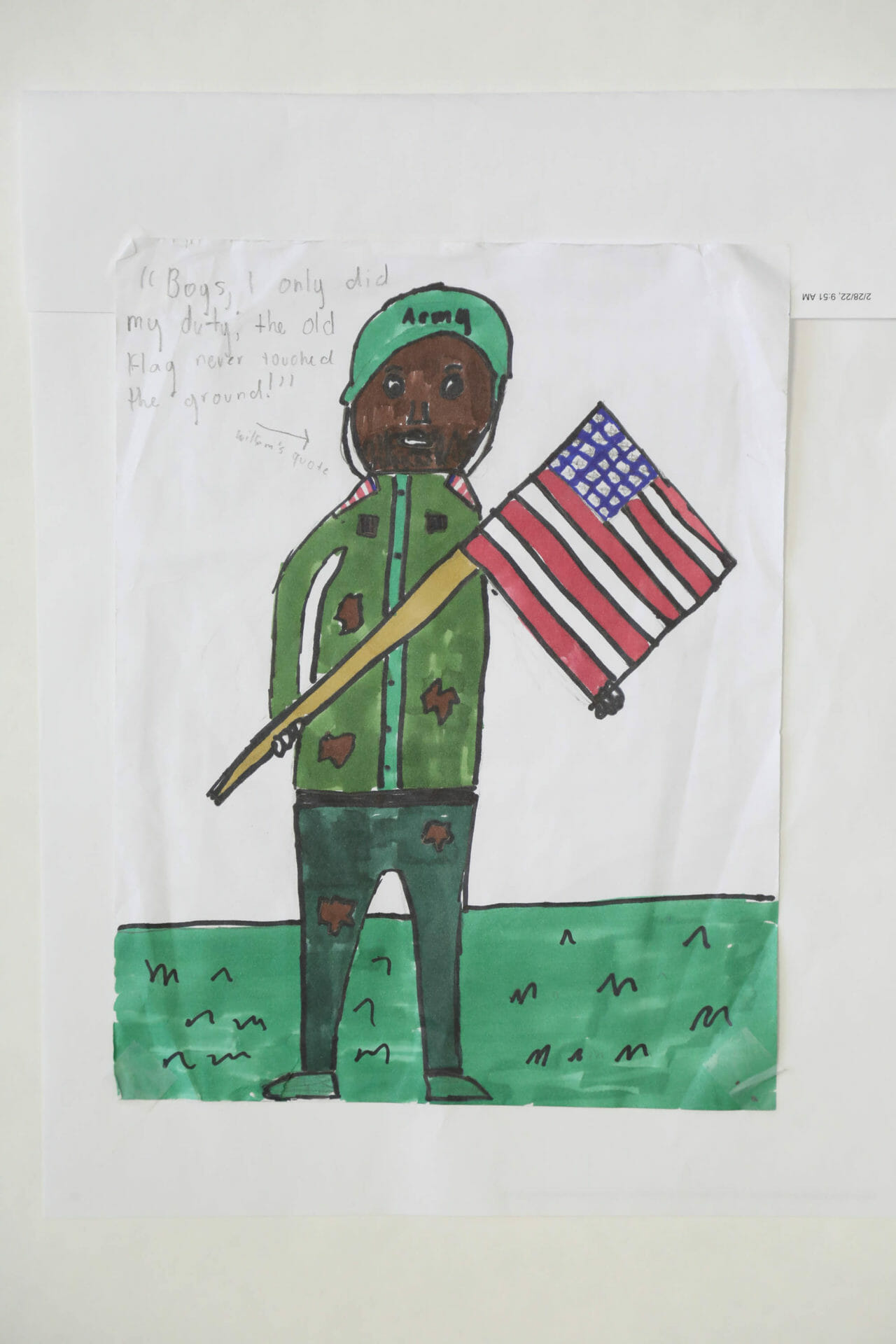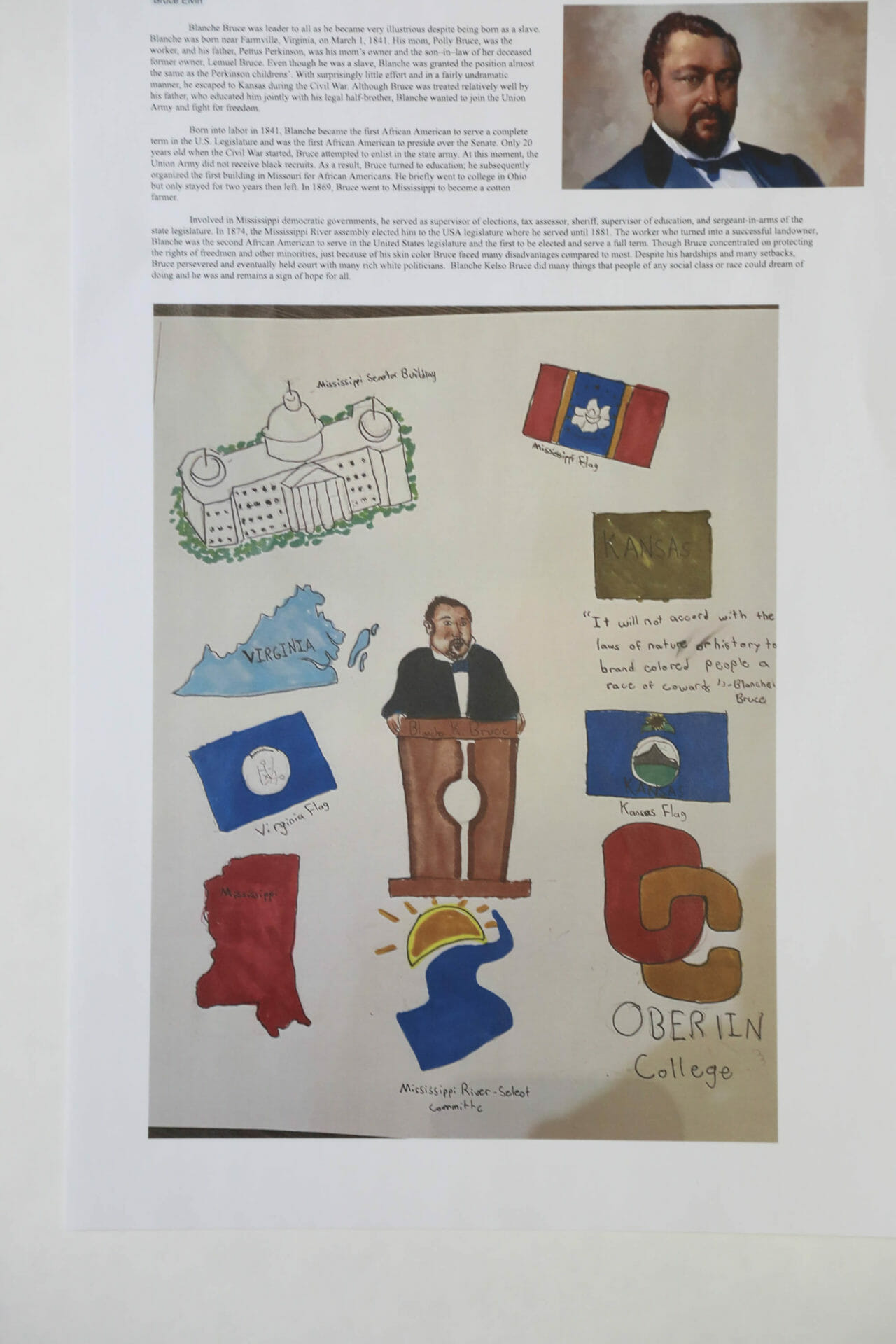As part of the sixth-grade United States History & Cultures curriculum, students explore the development and evolution of the United States, with an eye to the impact of the past on 21st century America. To understand more deeply the experiences of African Americans, sixth-grade history students created poems and art through the lens of influential African Americans.
Students began by studying the timeline and experiences of Africans before being enslaved, during the Middle Passage, and as both enslaved and free people in the Americas. They then explored influential African Americans in the years after the Civil War. Finally, they dove into their sources and researched one individual to profile. From their research, they started by writing a short biography that they could use to teach their classmates about their individual, and then also worked creatively to tell that person’s story through their chosen art form: poetry or a designed art piece. Each piece represented their chosen person and what that person symbolized to their peers at that particular time in history and their lasting impact on America today.
«It is amazing to see our students’ transformation and learning throughout the project. Initially, they are challenged by writing an original poem or creating a piece of art that reflects the impact of their chosen historical figure. By the end of the project, students are so excited to share what they learned and to show off their final poem or artwork,” said Middle School History Teacher Mark Duvall.
The presentations ranged from symbolic art, digital and hand-drawn portraits, and meaningful poetry. They focused on notable figures including Phillis Wheatley, Sojourner Truth, Nat Turner, Frederick Douglass, Harriet Tubman, William H. Carney, Elijah McCoy, Booker T. Washington, George Washington Carver, Madam C.J. Walker, Scott Joplin, Hiram Revels, and Blanche K. Bruce.
Students enjoyed presenting their final artwork and poems in class and reflected on the process:
“It was really fun to learn about these people and their legacy and how they impacted society. I liked the artwork as a cool way to express their impact. Verifying sources and checking info was challenging because there was either too much or too little about a person. I had heard the name Sojourner Truth but I never really knew how she impacted society in the abolitionist movement.” – Johanna Orwick ’28
“Phillis Wheatley was my project, and I had a lot of fun doing the poem because she was a famous poet. Historians still look back on her work today and see it as great works of writing because you can get a glimpse of her life back then. There aren’t records of her early life, but once she started writing poems, it was deeply connected to her life, how she viewed religion, and many other things. I liked learning that she traveled and wrote to George Washington as the American Revolution was starting and he wrote her back!” – Tommy Kastor ’28
“I found it fun to make the artwork and express who they really were and how people saw them. I knew that George Washington Carver worked with plants, but I was surprised to learn that he made 140 products out of peanuts, pecans, and sweet potatoes and also helped farmers.” – Priyasha Munshi ’28
“I liked that we got to draw and create information about the person we’d been researching for a long time, and it was challenging to pull together 18 main ideas. I also learned that William H. Carney was the first Black person to get a medal of honor! – Olivier Leyland ’28
“I thought it was fun to use artwork to express the person instead of writing paragraphs. We did have a time crunch working on it, but it was really fun to learn about Madam C.J. Walker, who lived in St. Louis.” – Olivia Brauer ’28
“Learning about all these new people that were part of history was fun. It was hard to write the biography about the person because you only had three paragraphs to put it in, and you had to figure out what to keep in. I was surprised to learn that Harriet Tubman never lost a person on the Underground Railroad.” – Sanjay Malhotra ’28
Thank you, sixth graders, for creating such beautiful poems and art from the heart to celebrate the impact of African Americans on our country.
